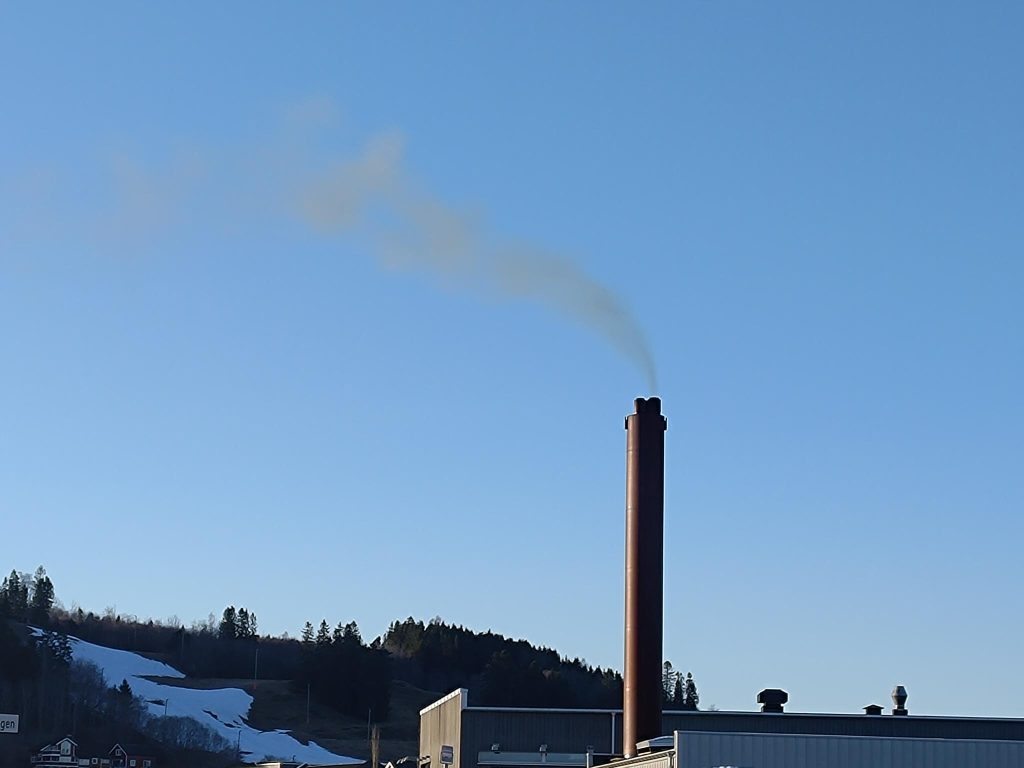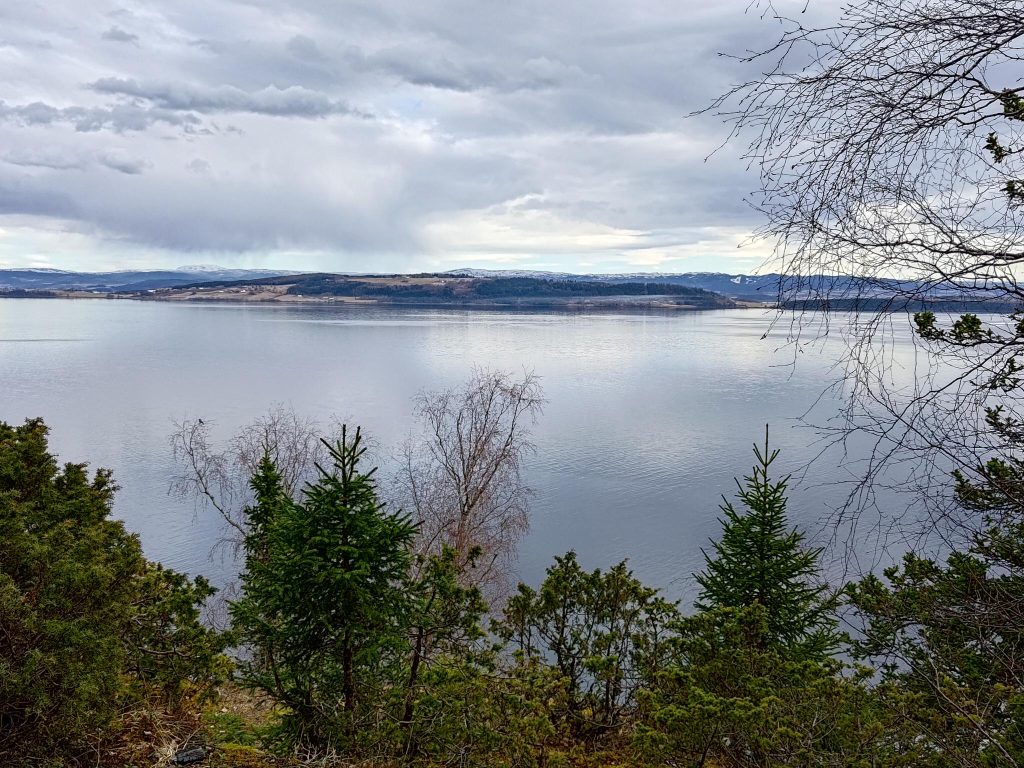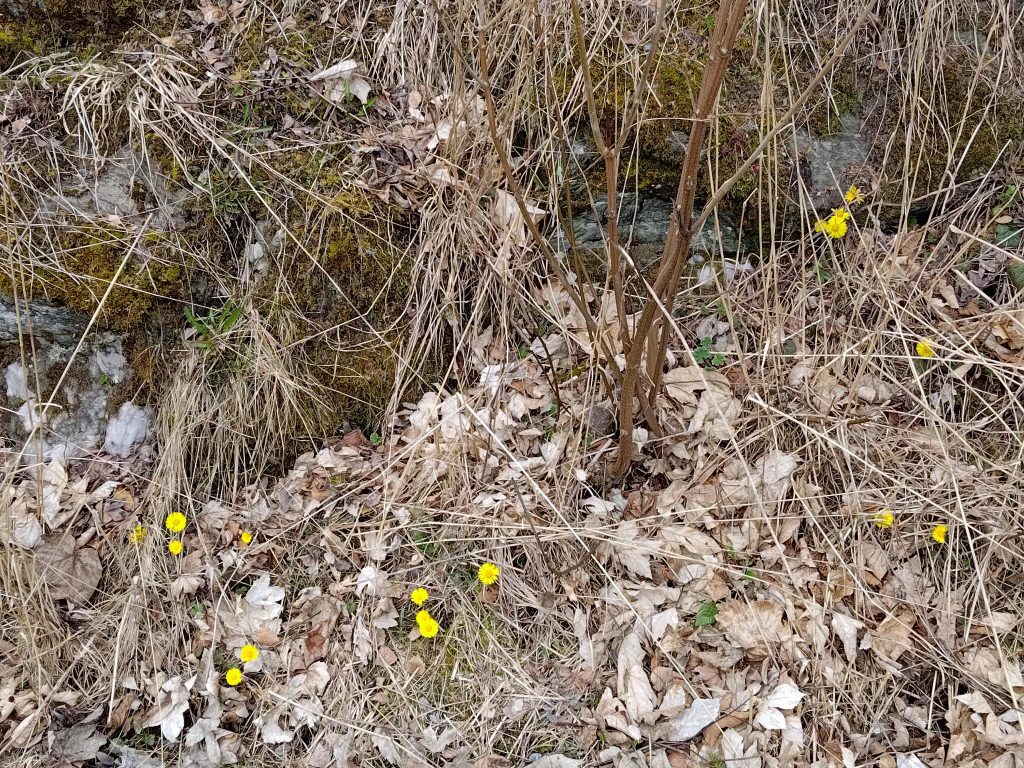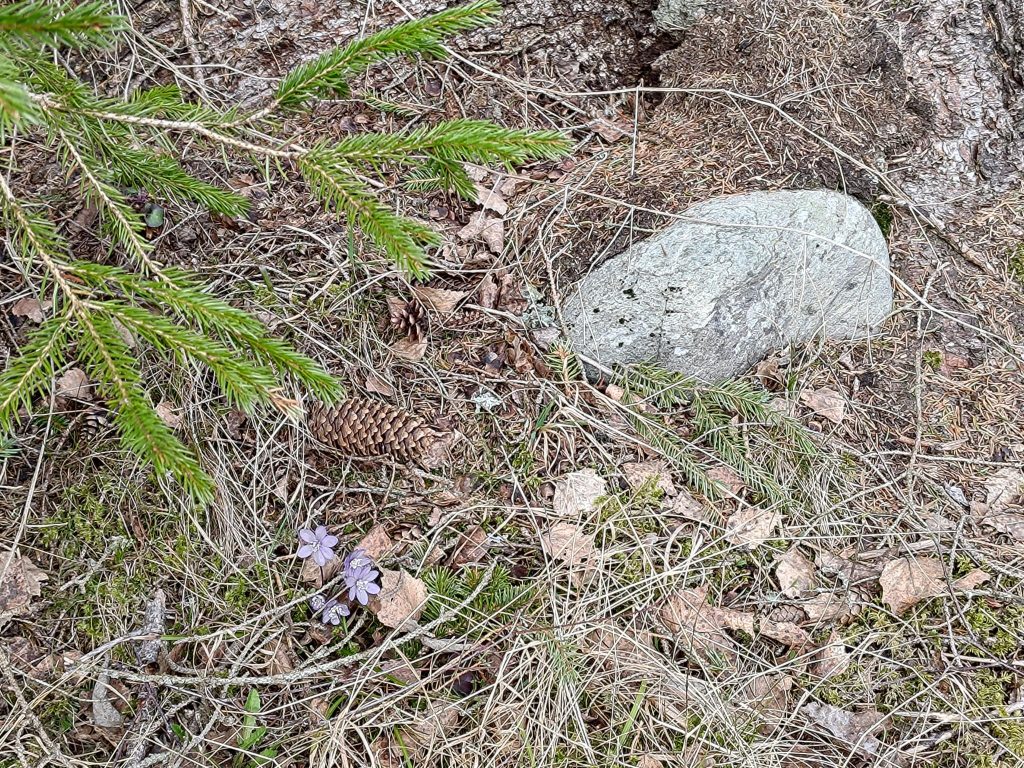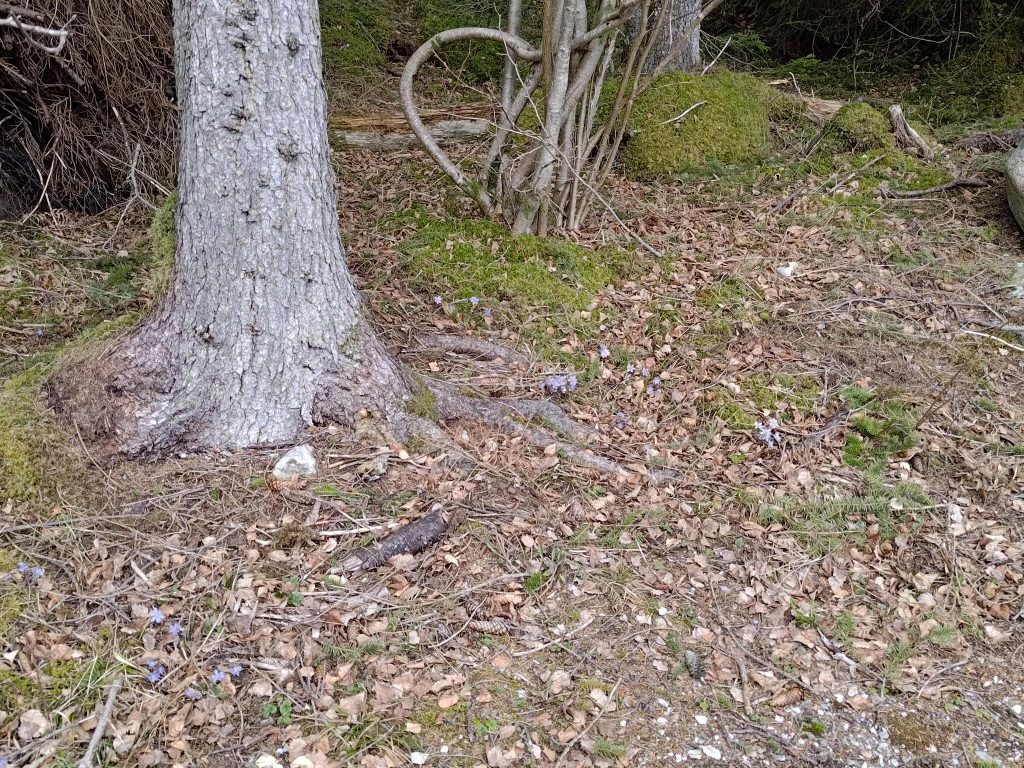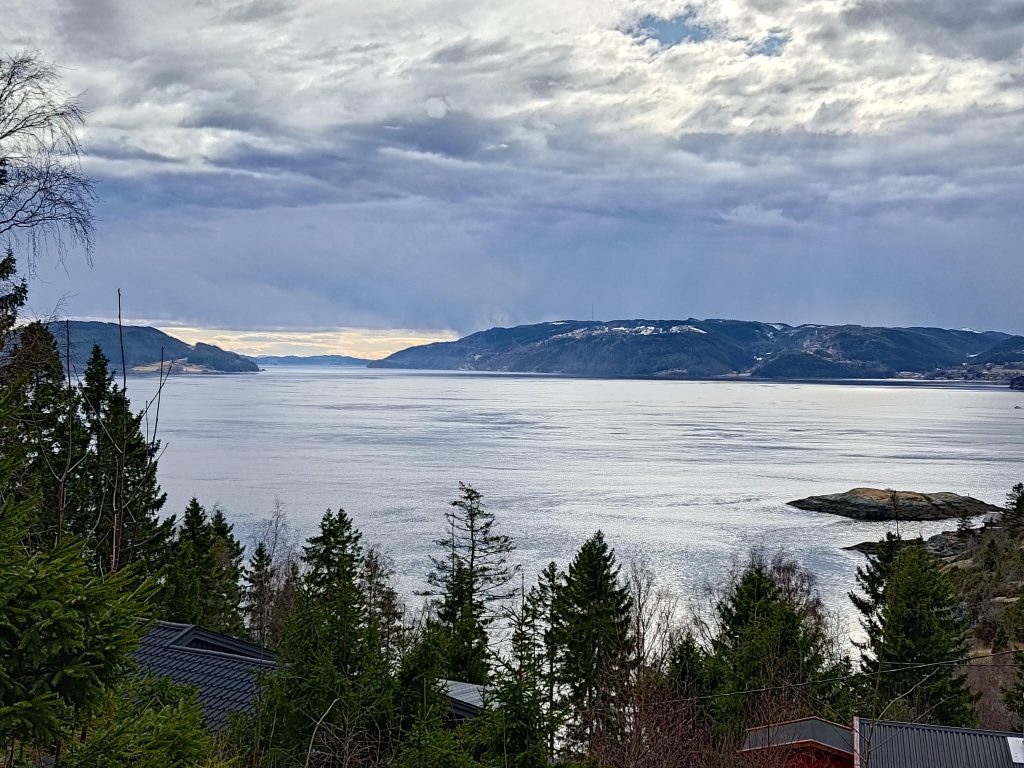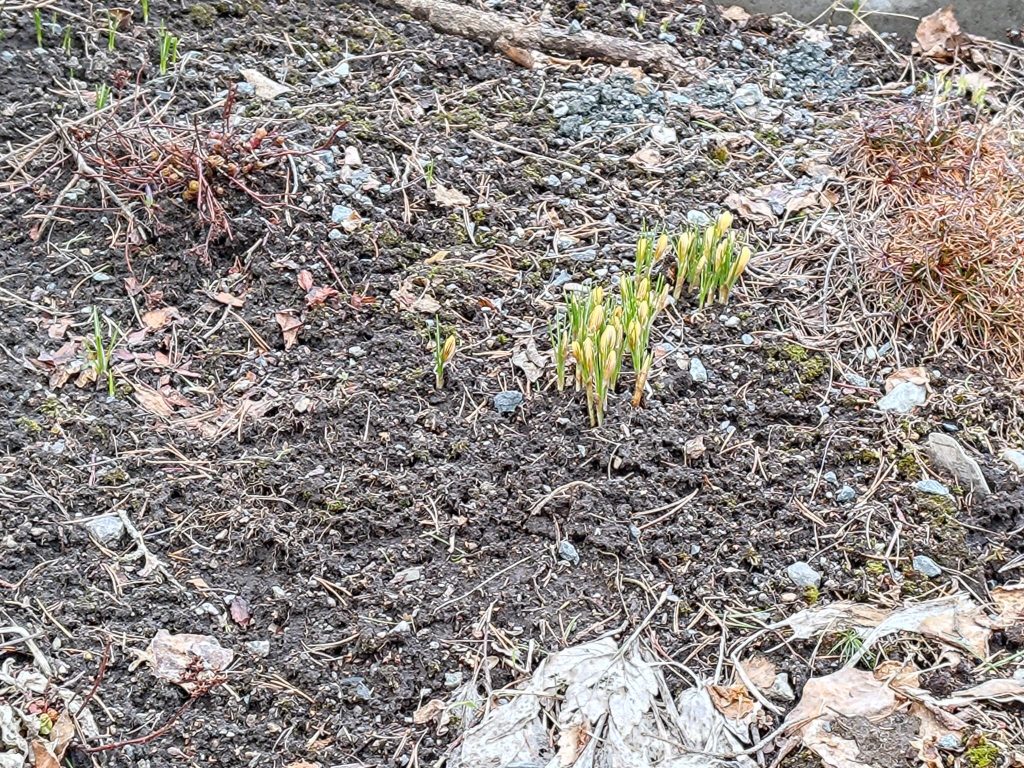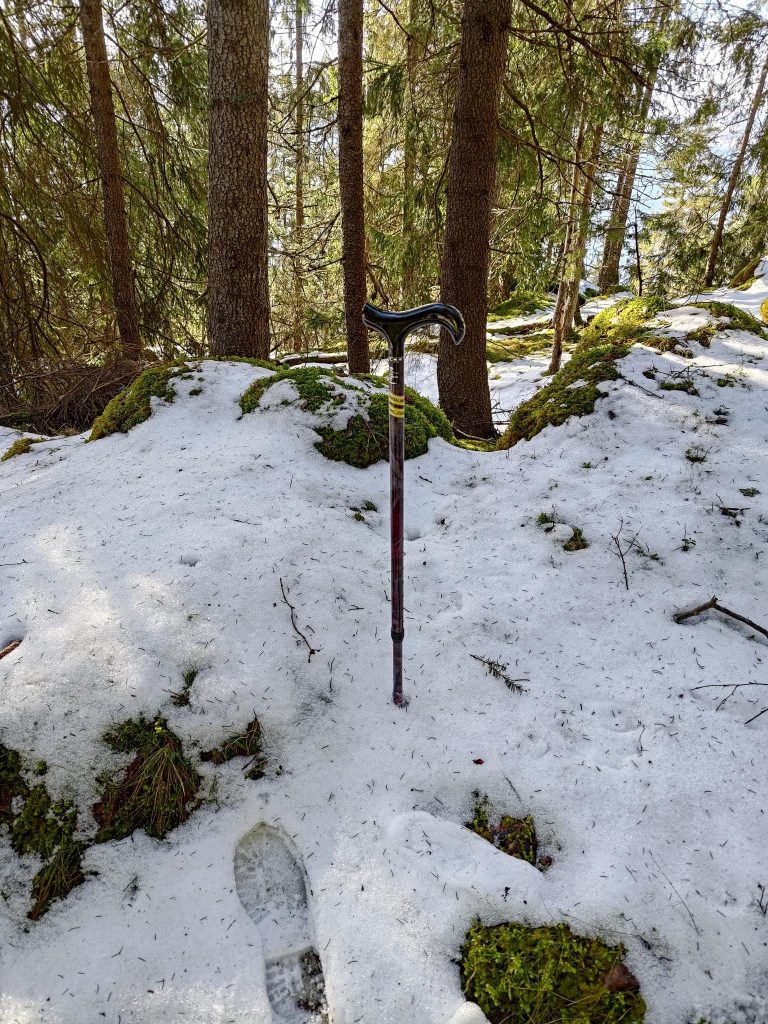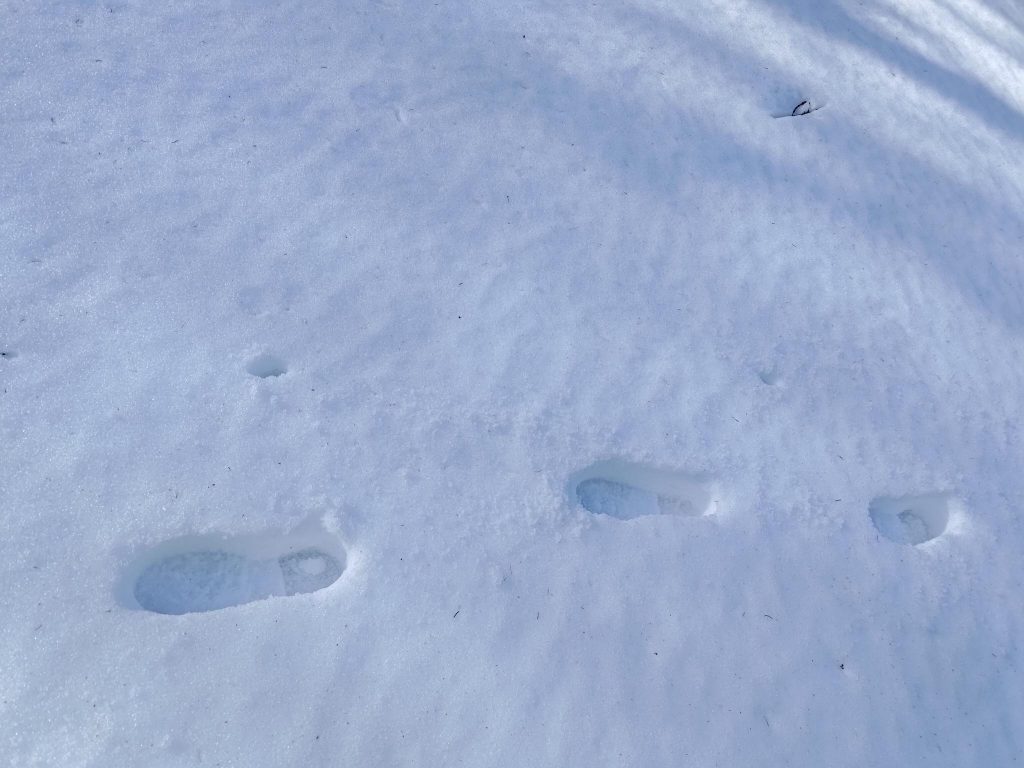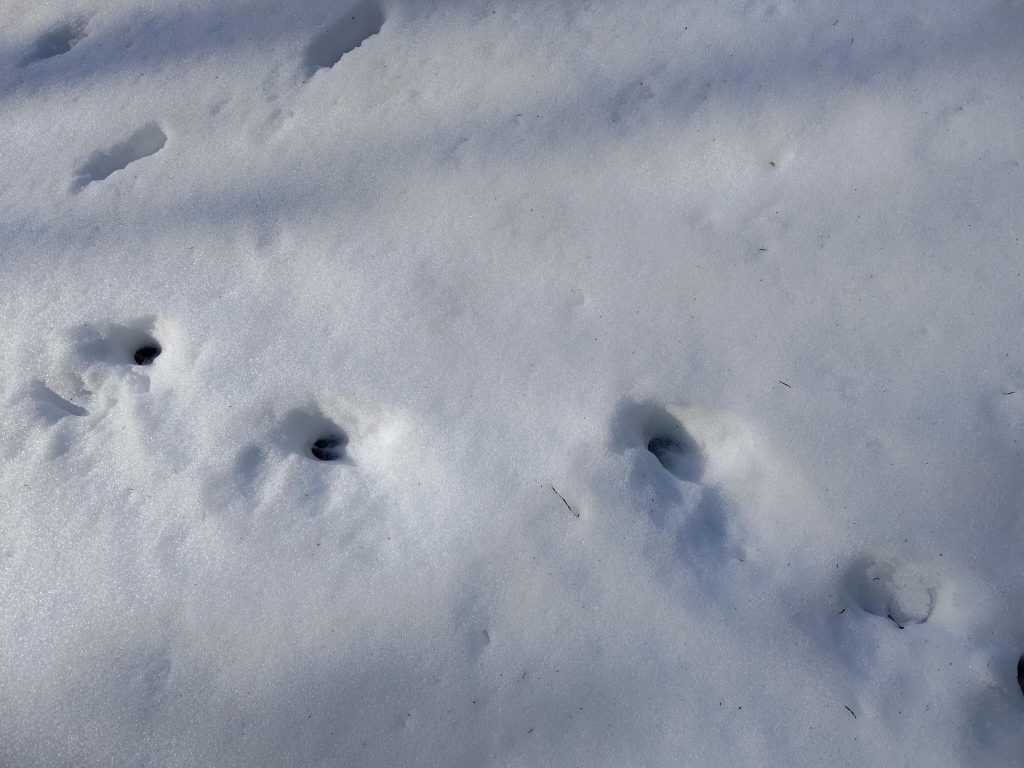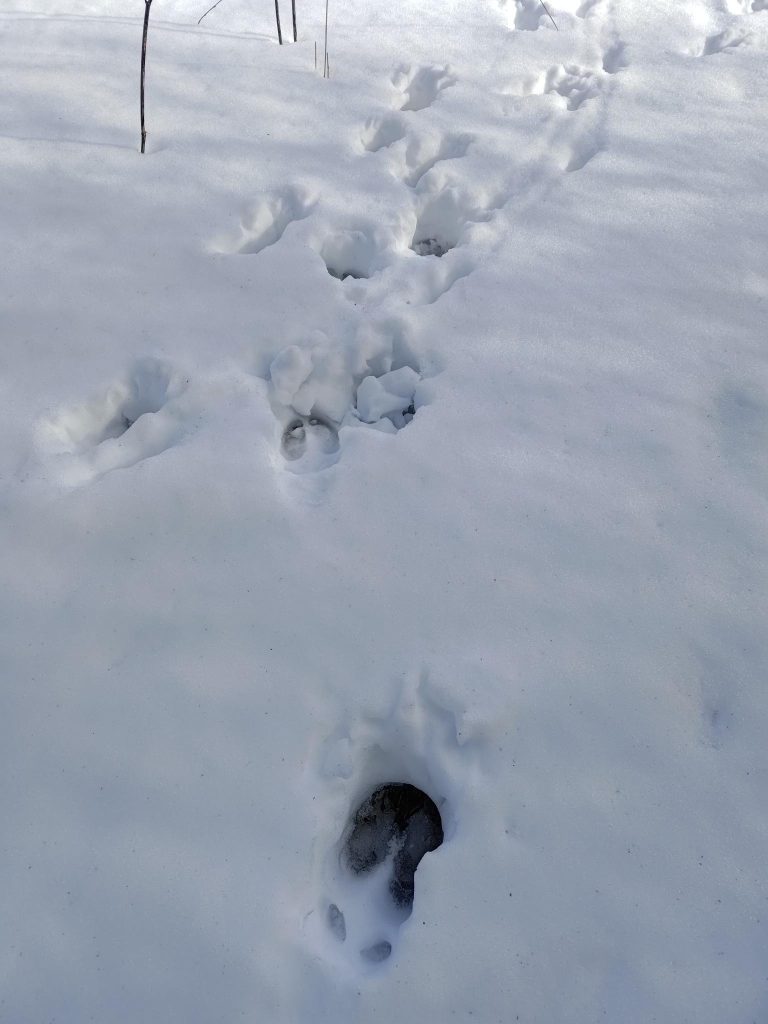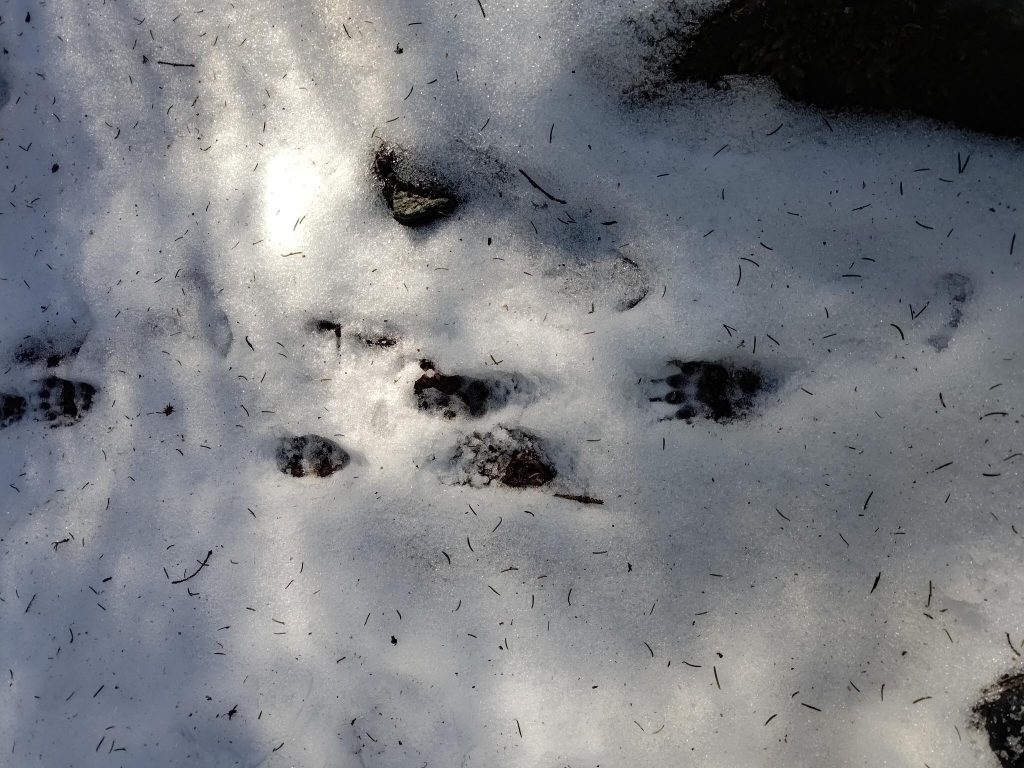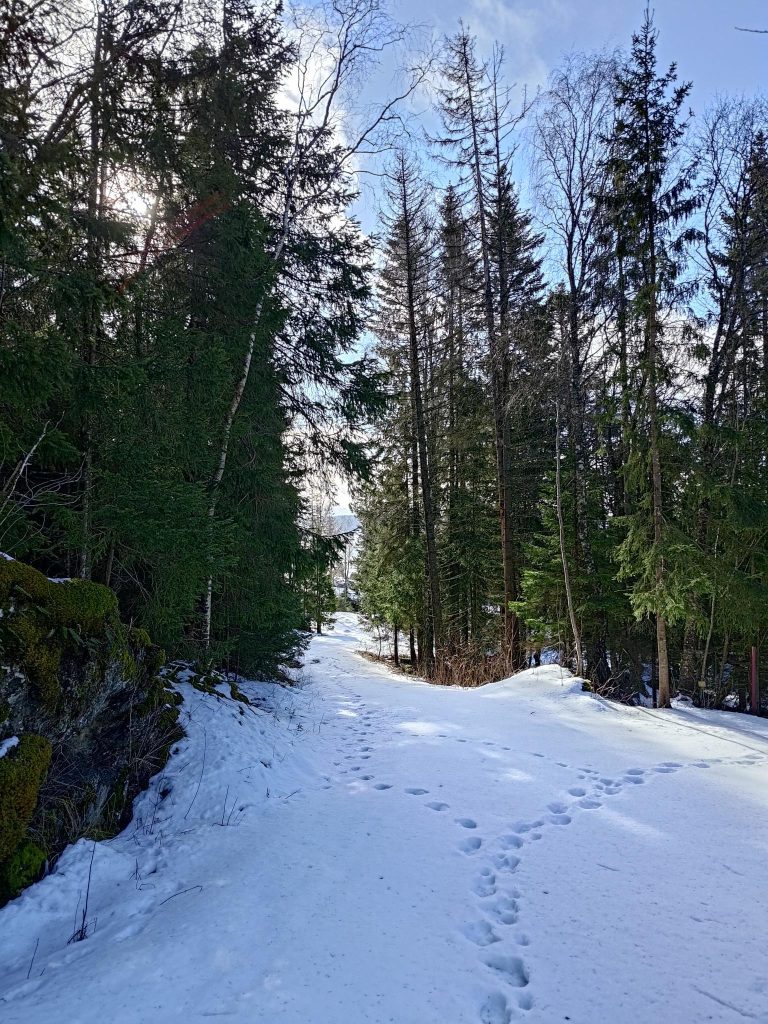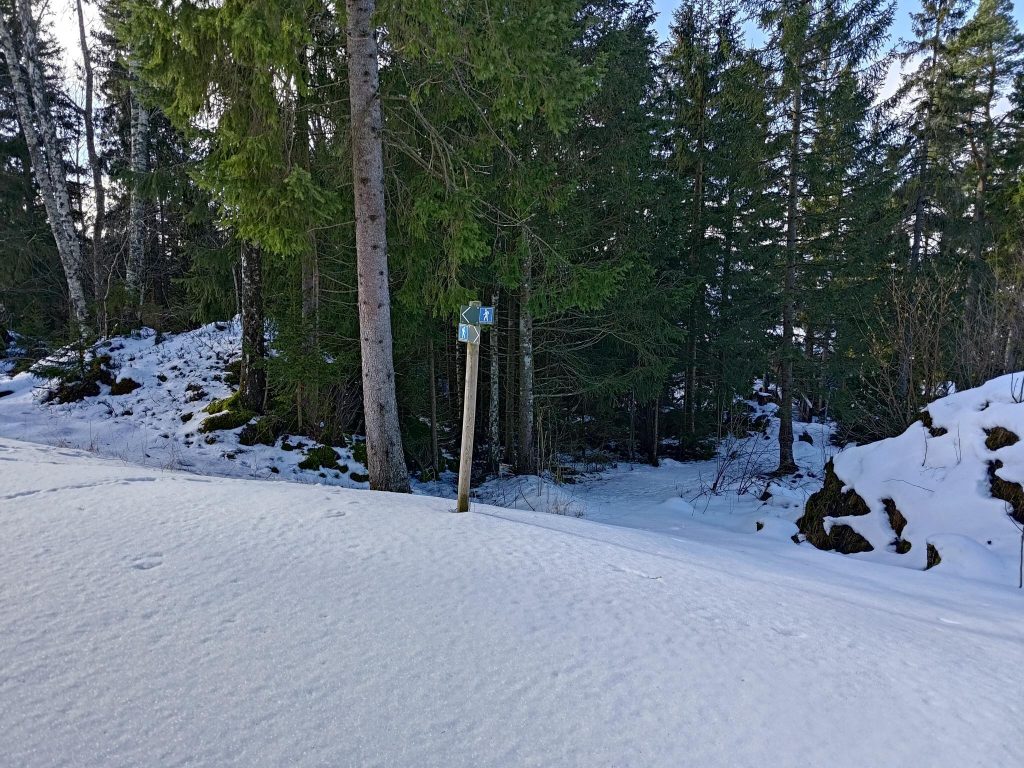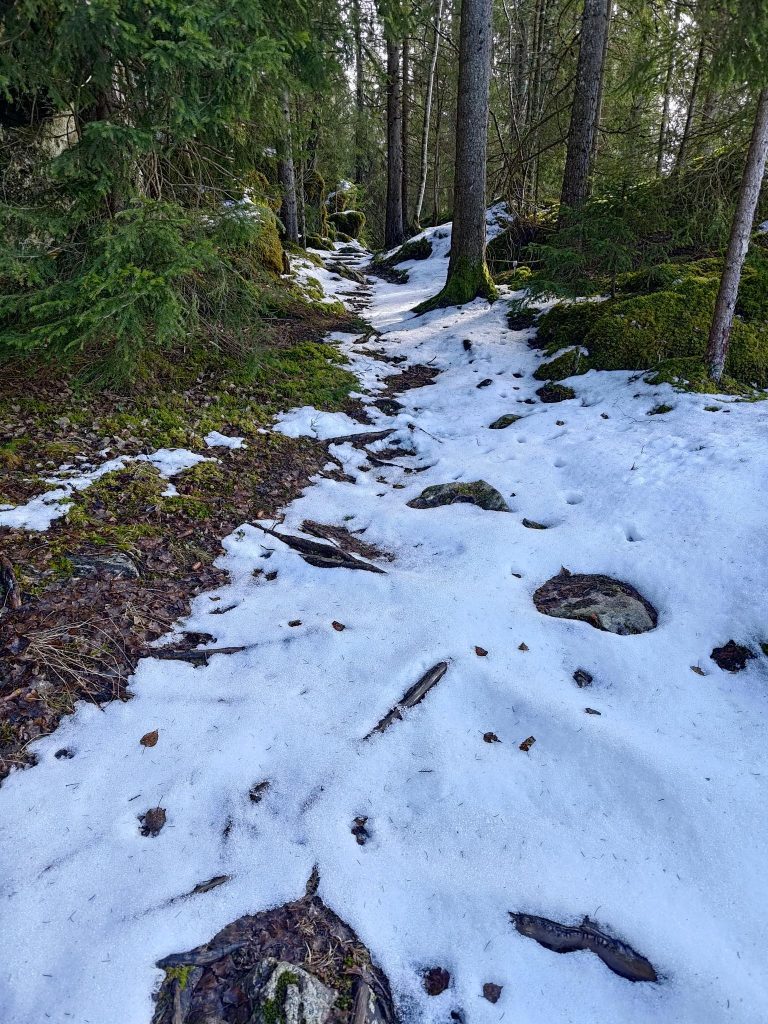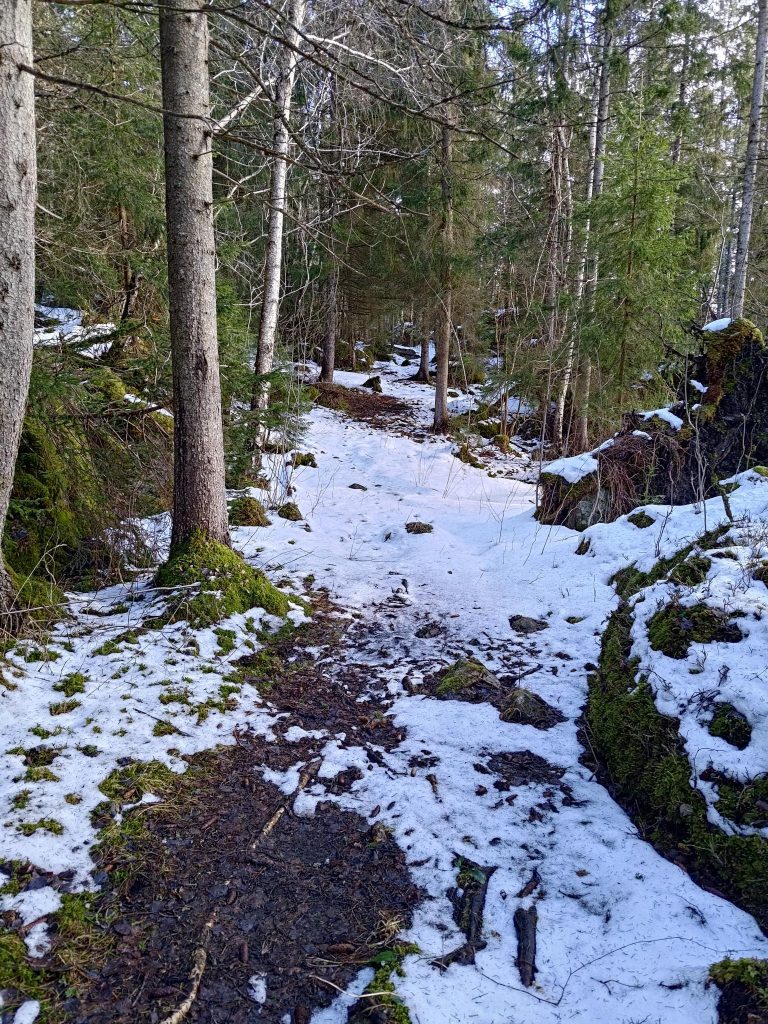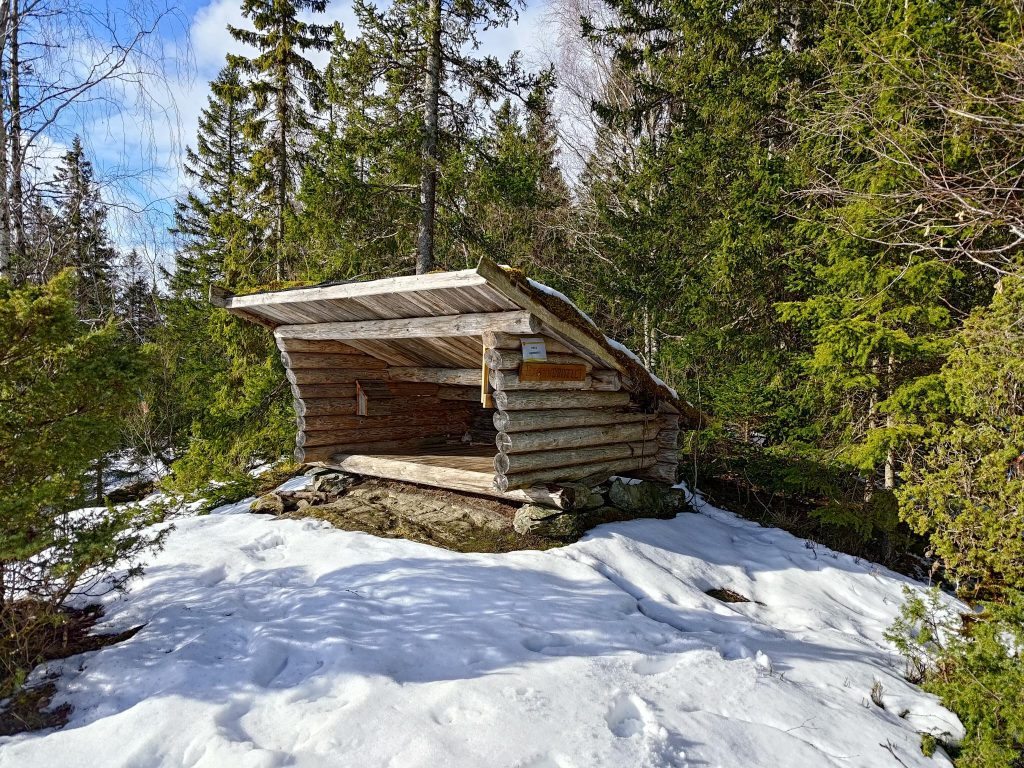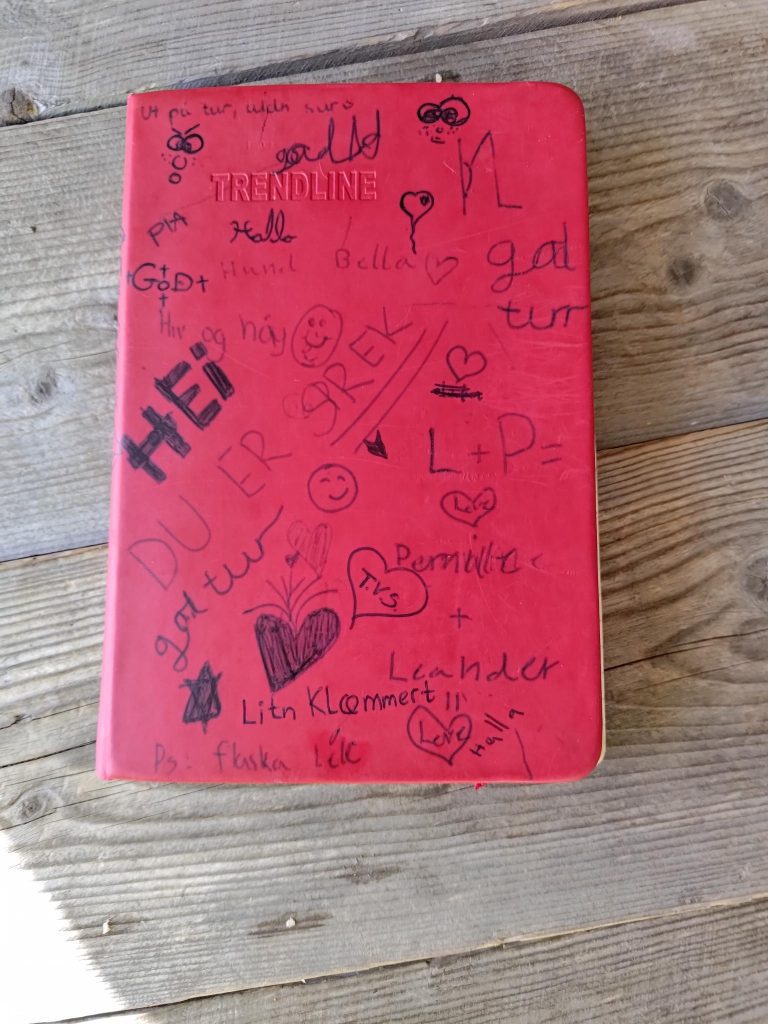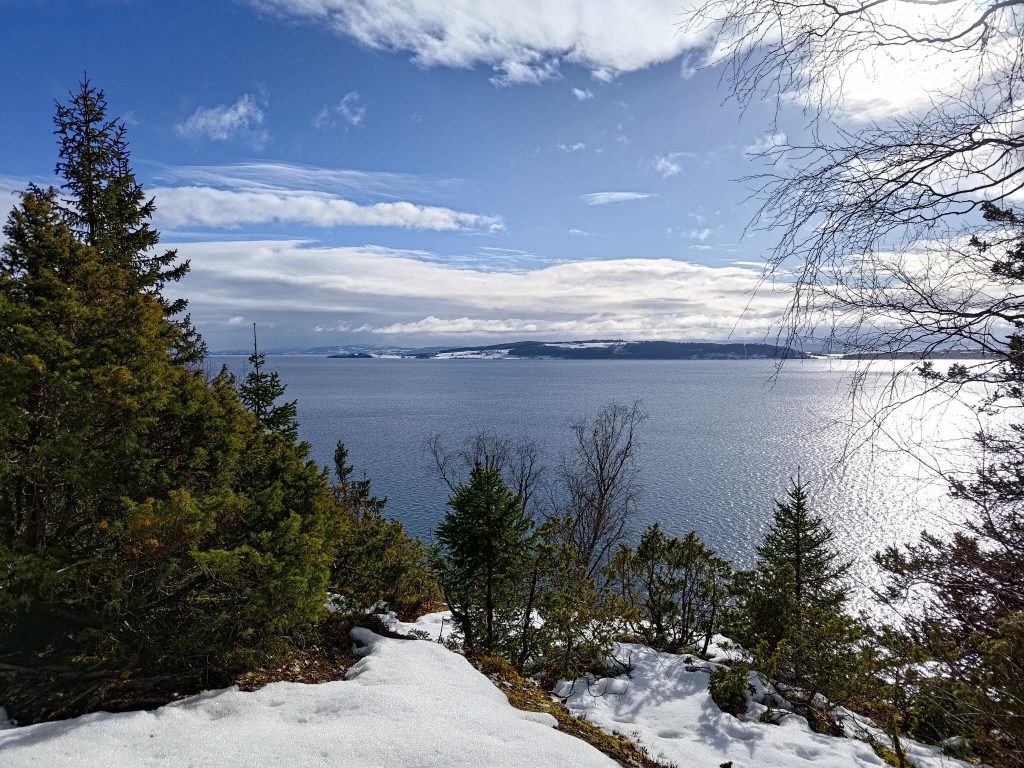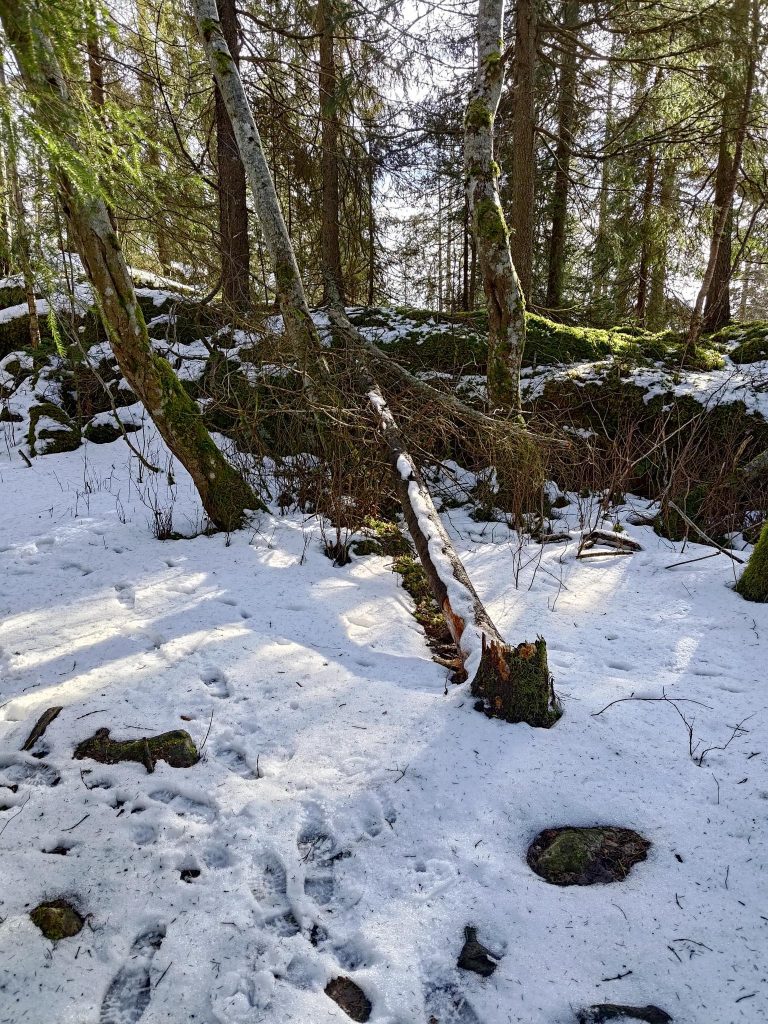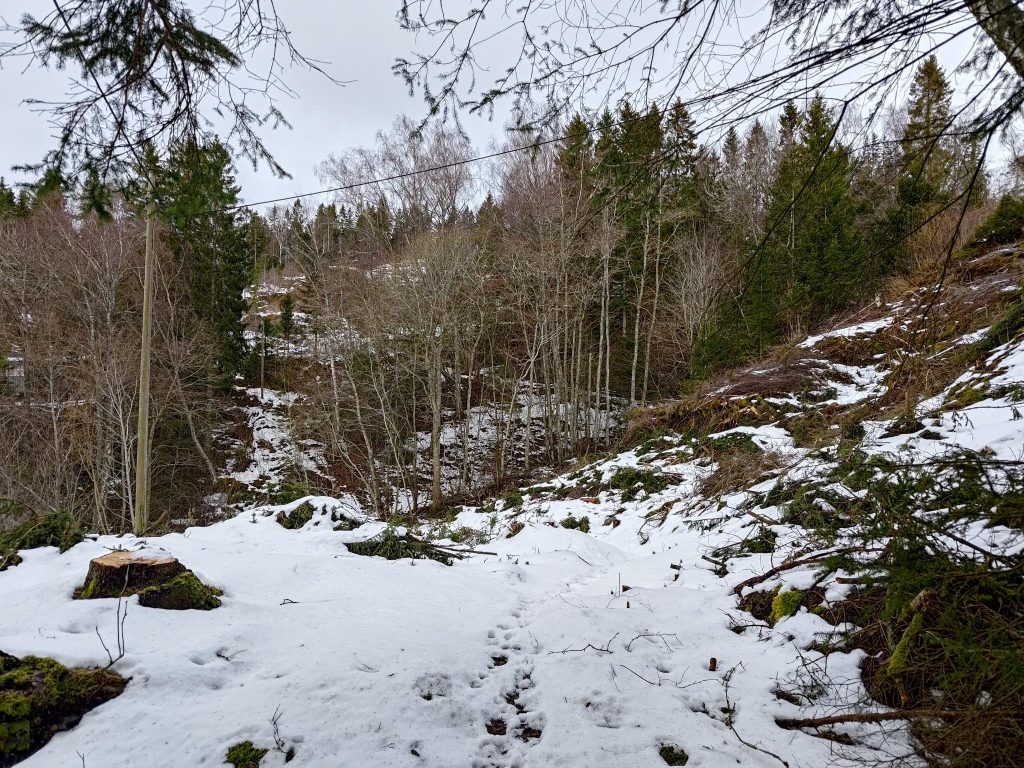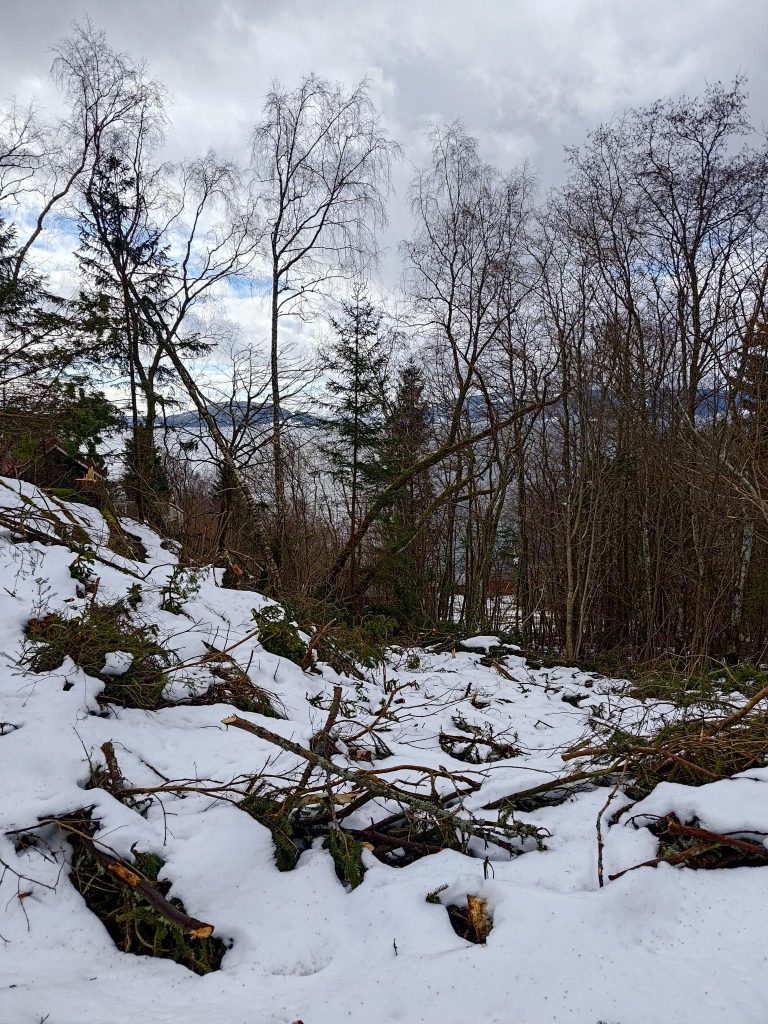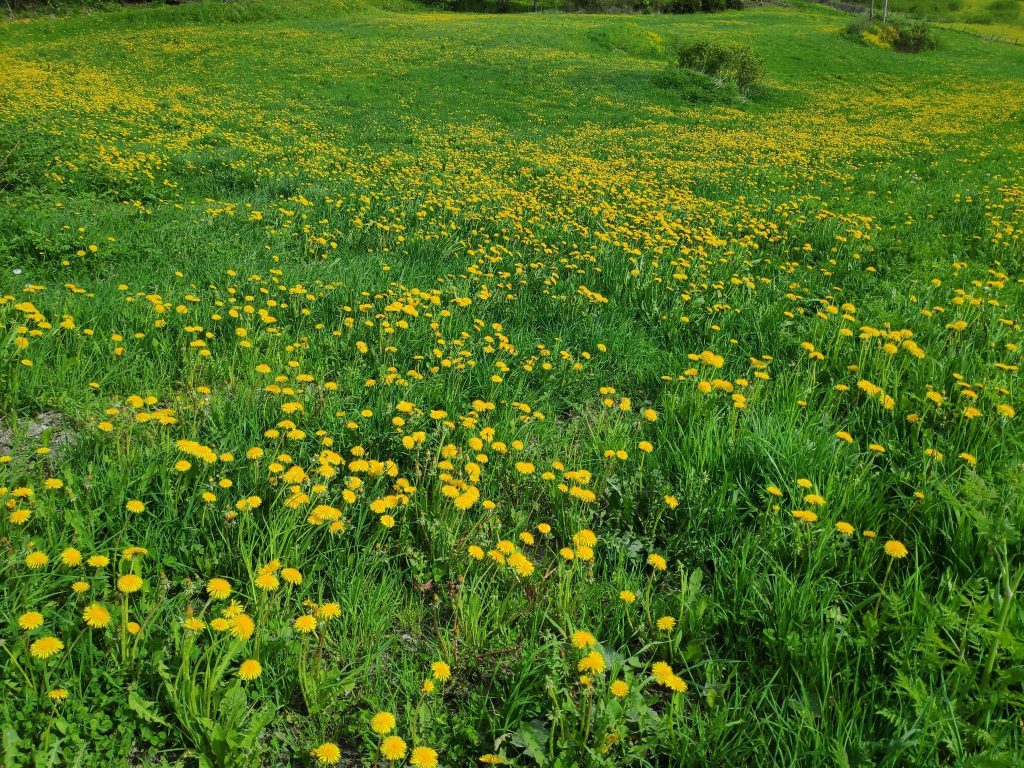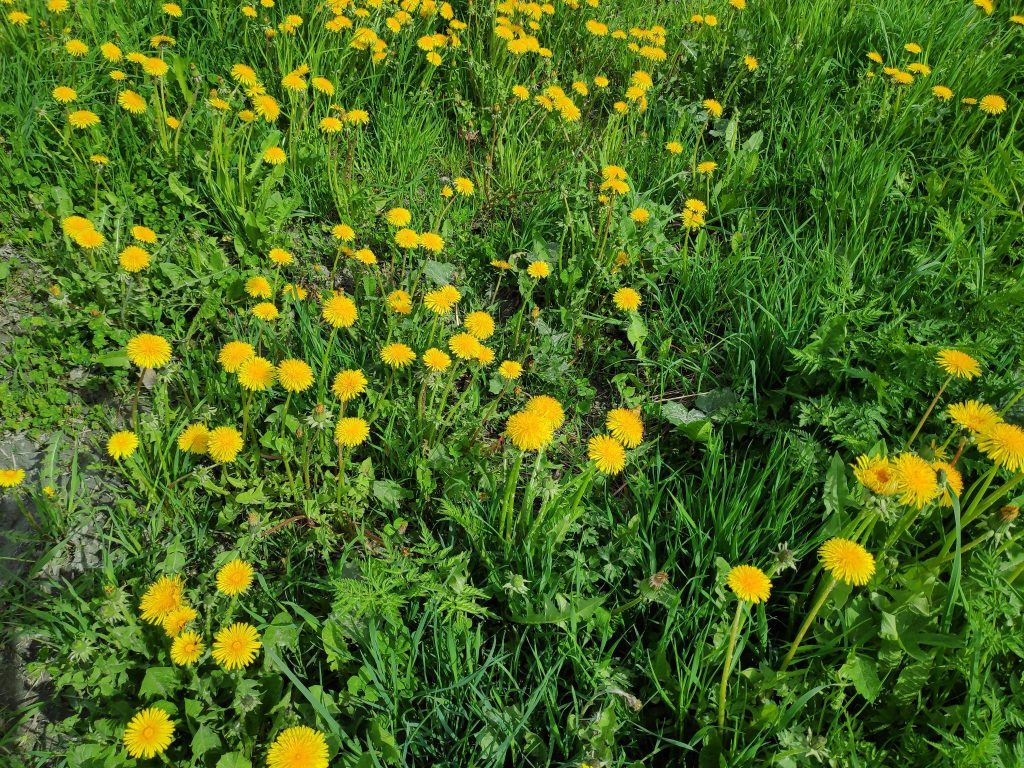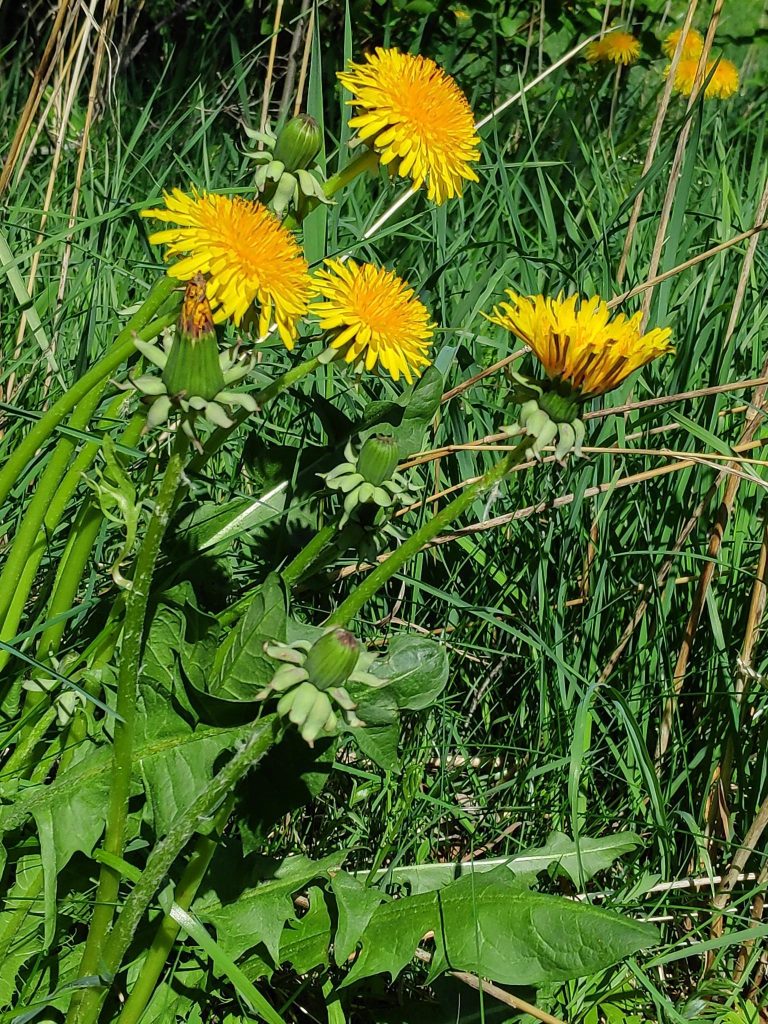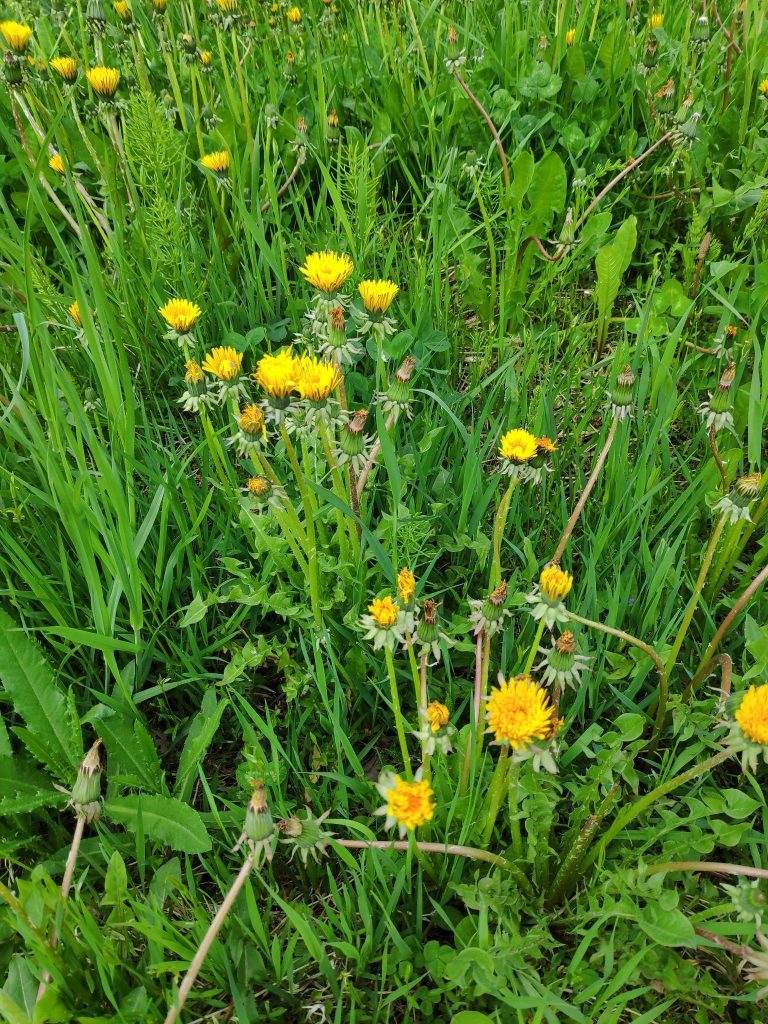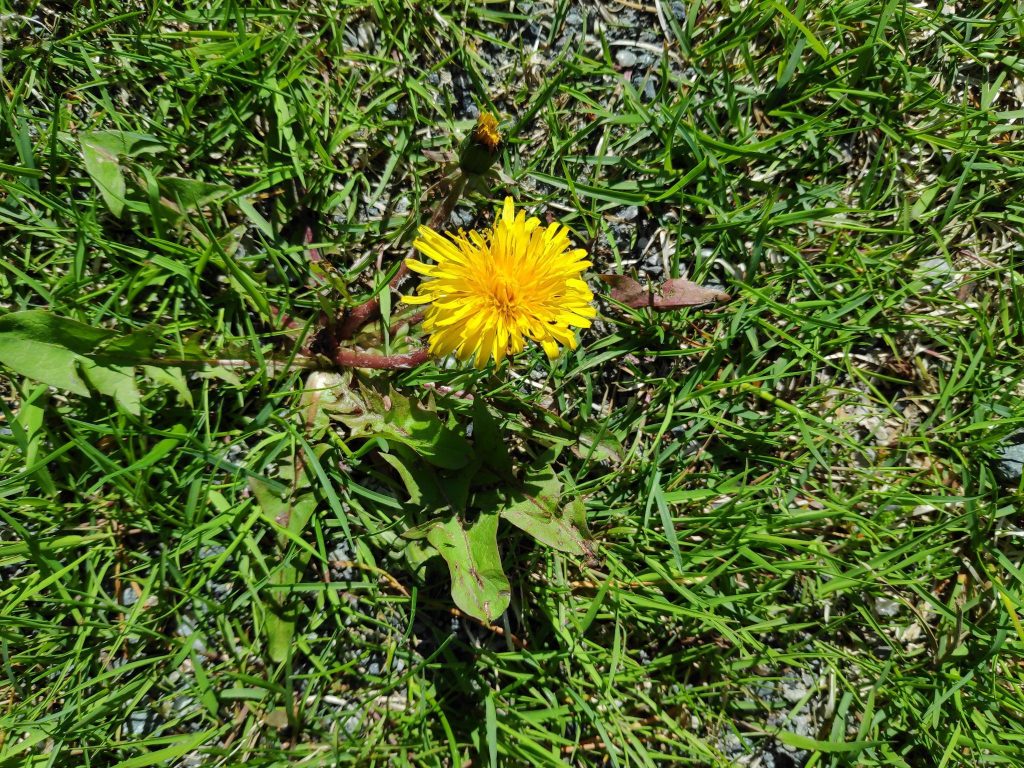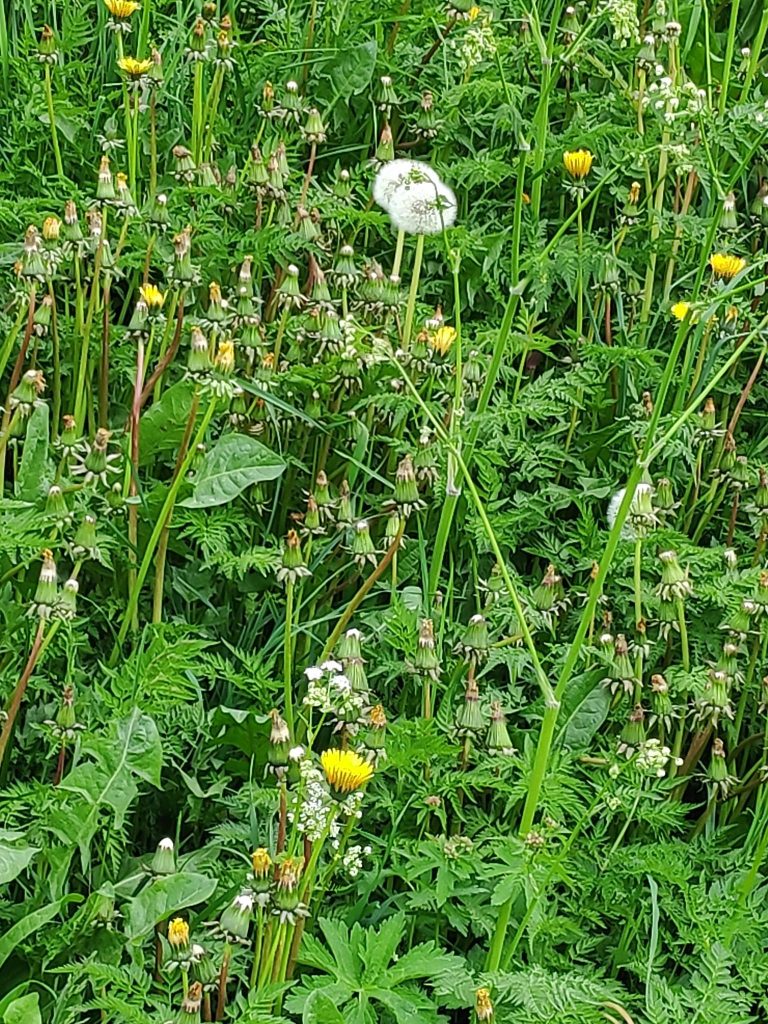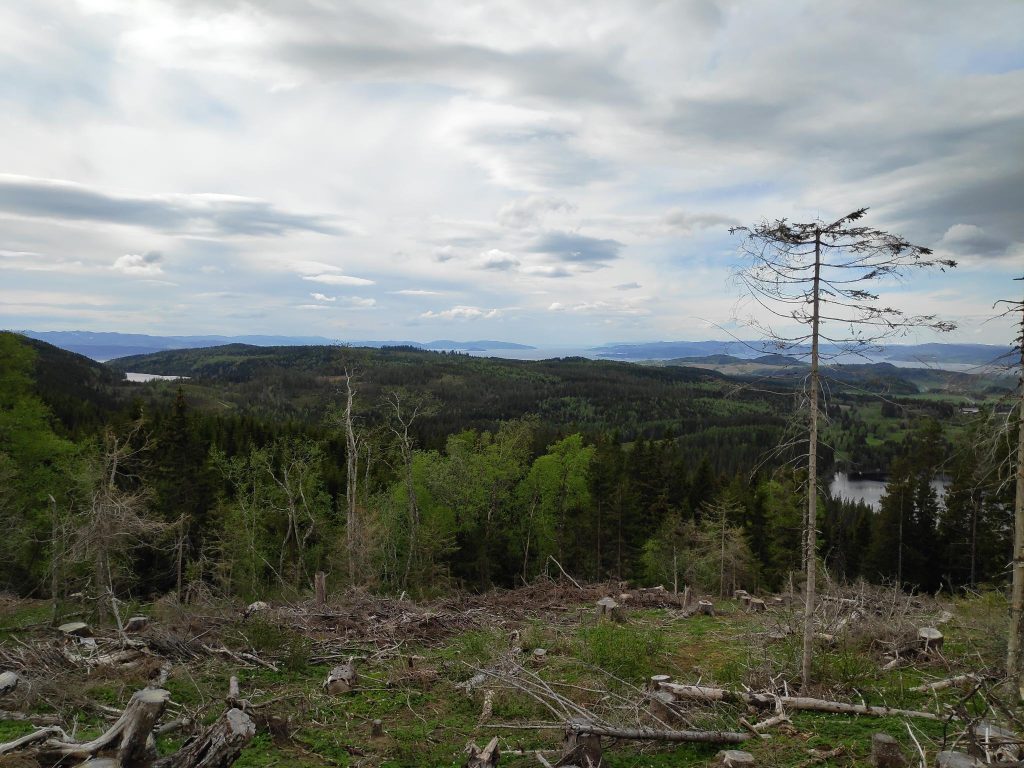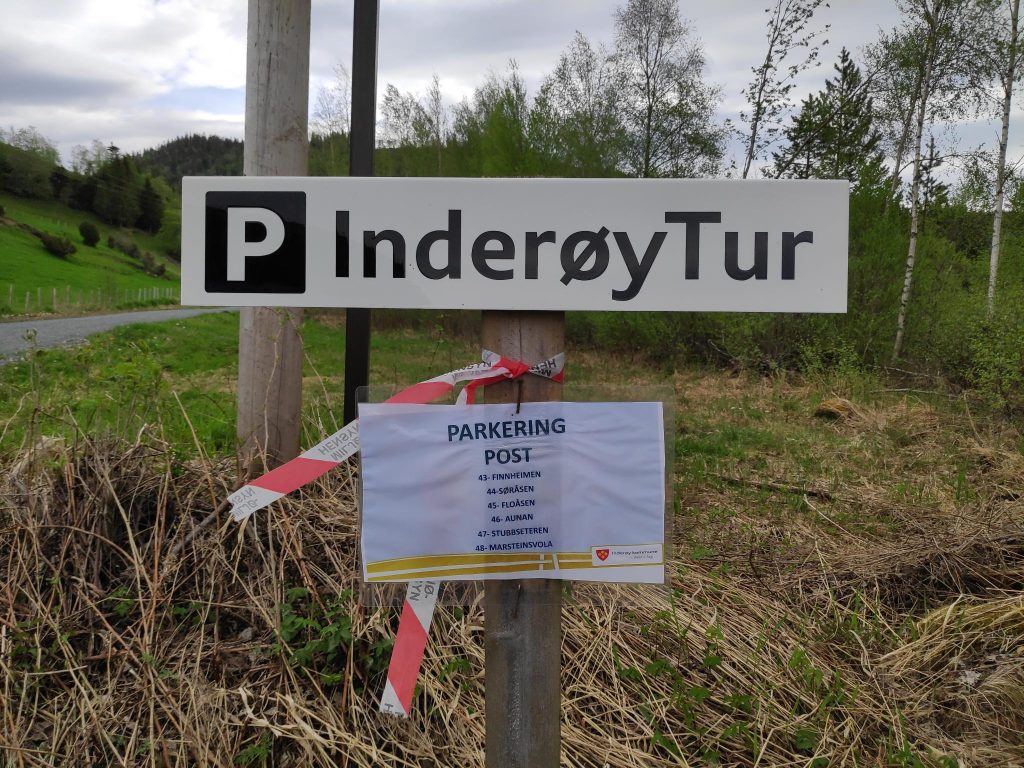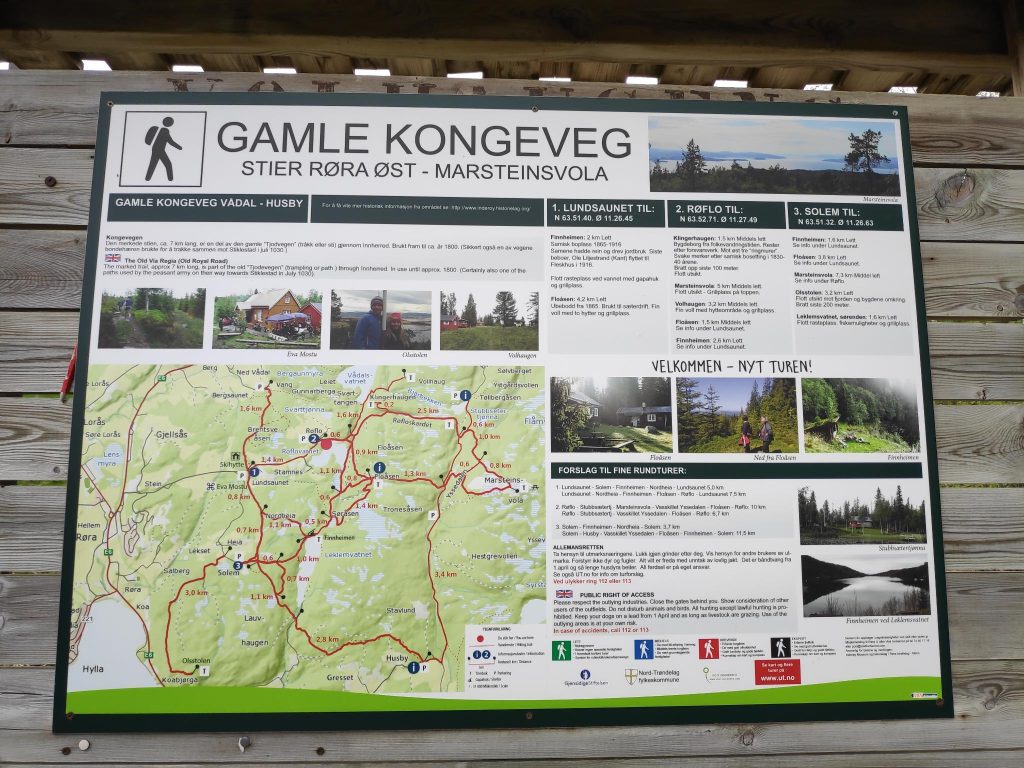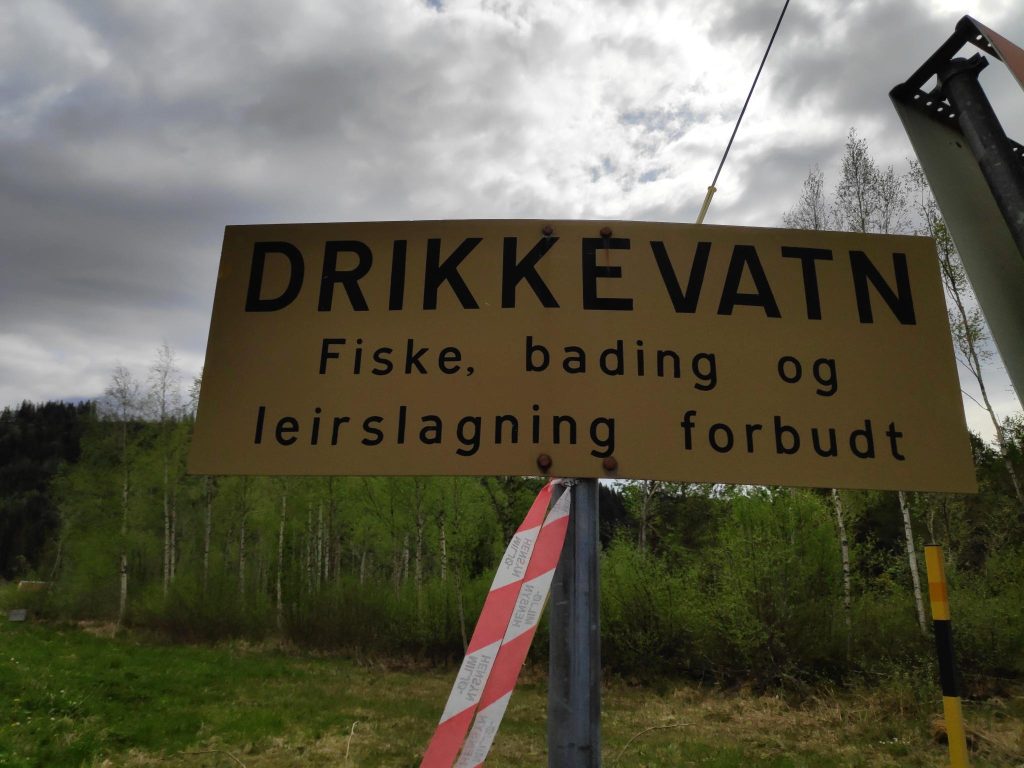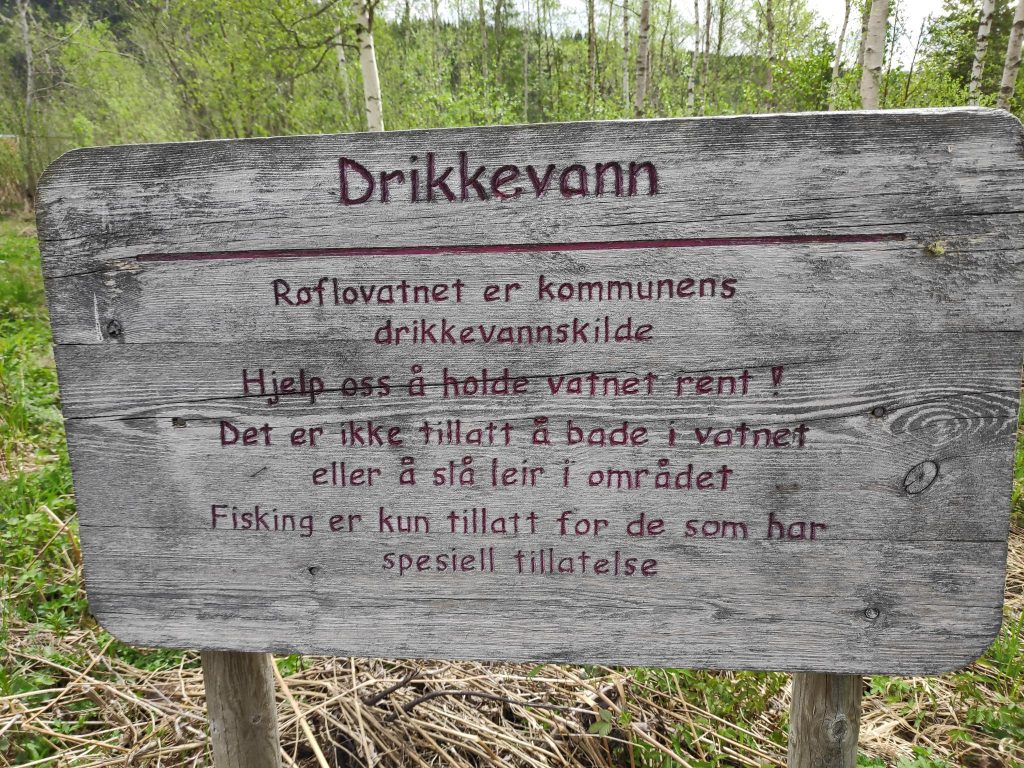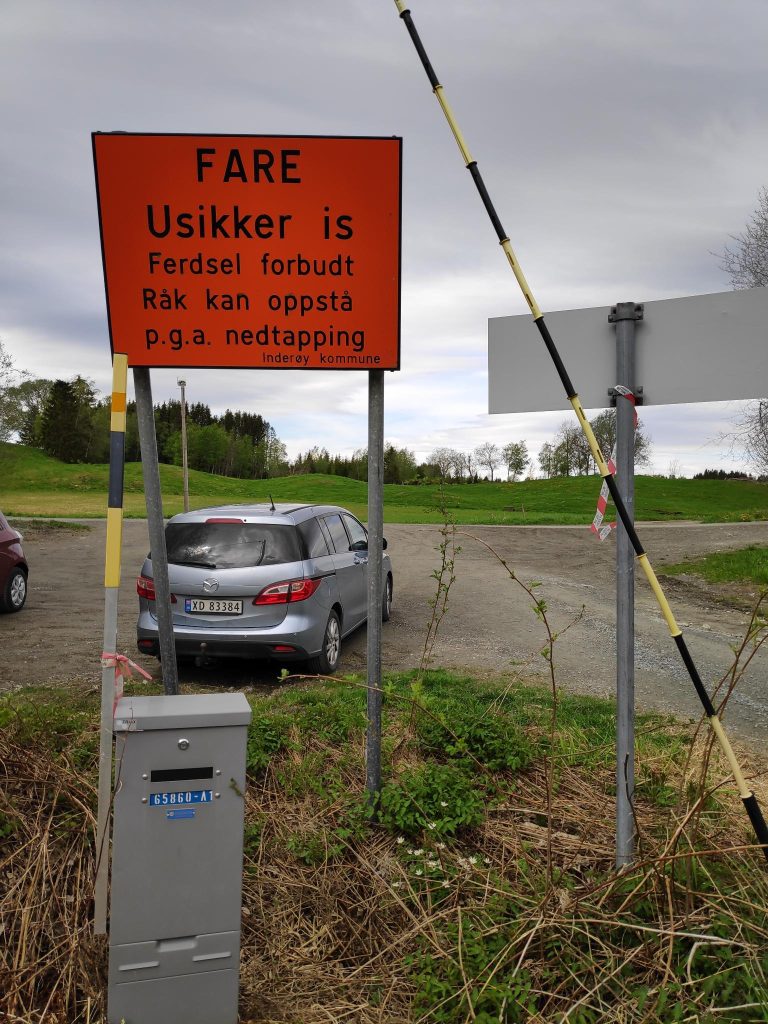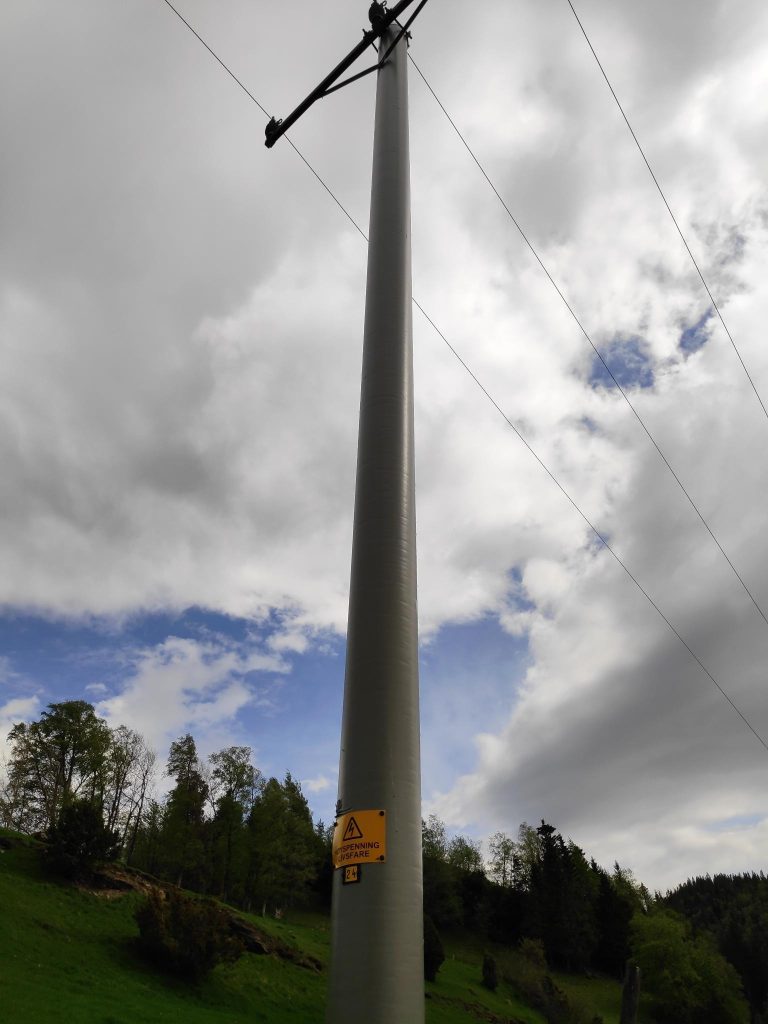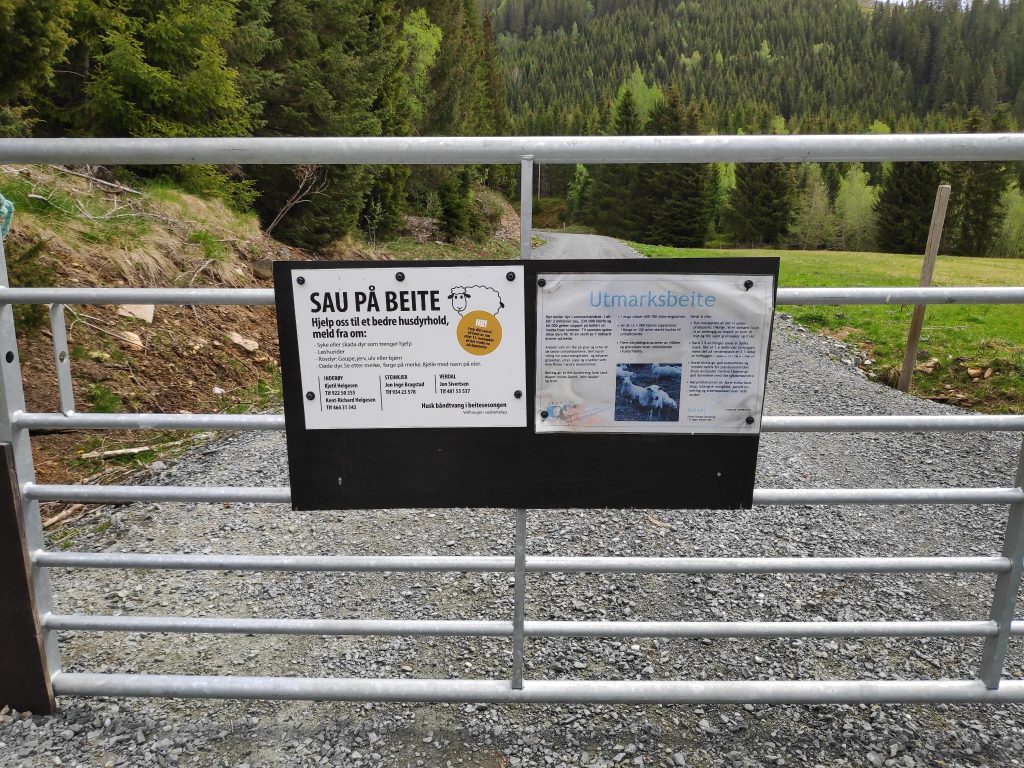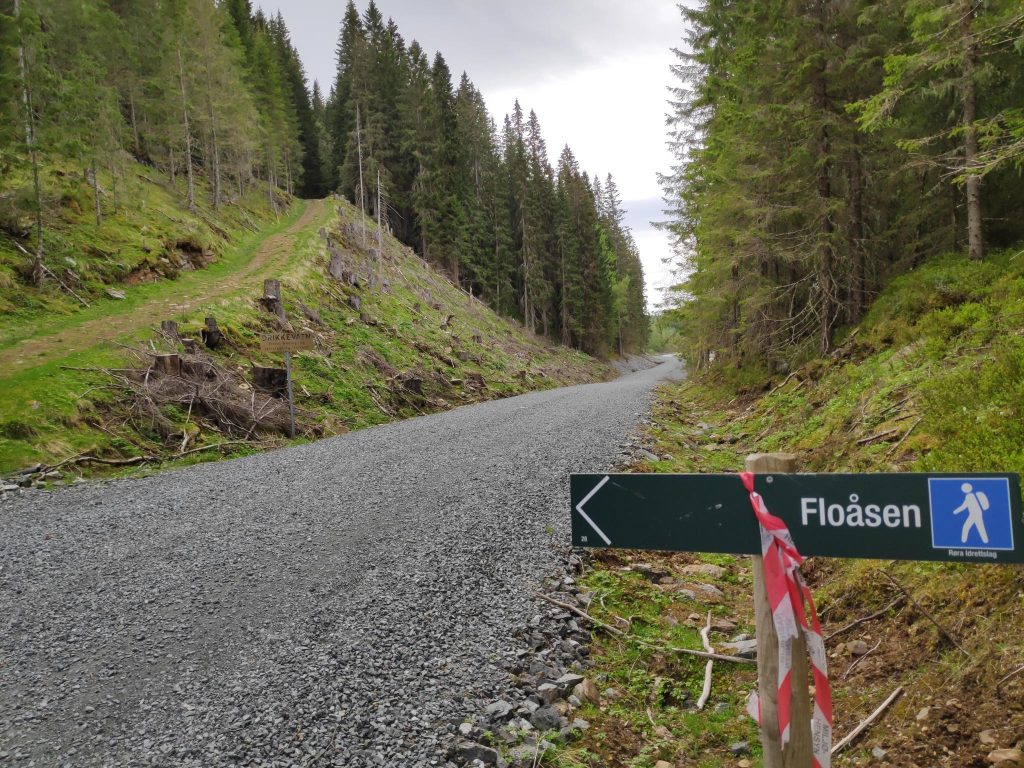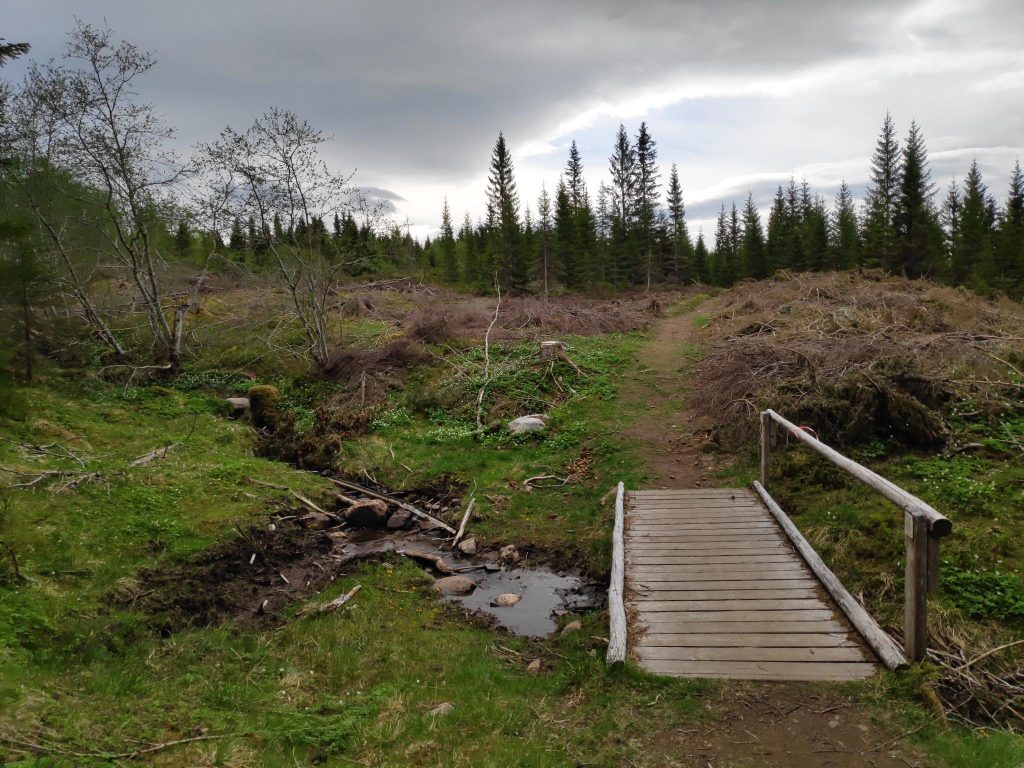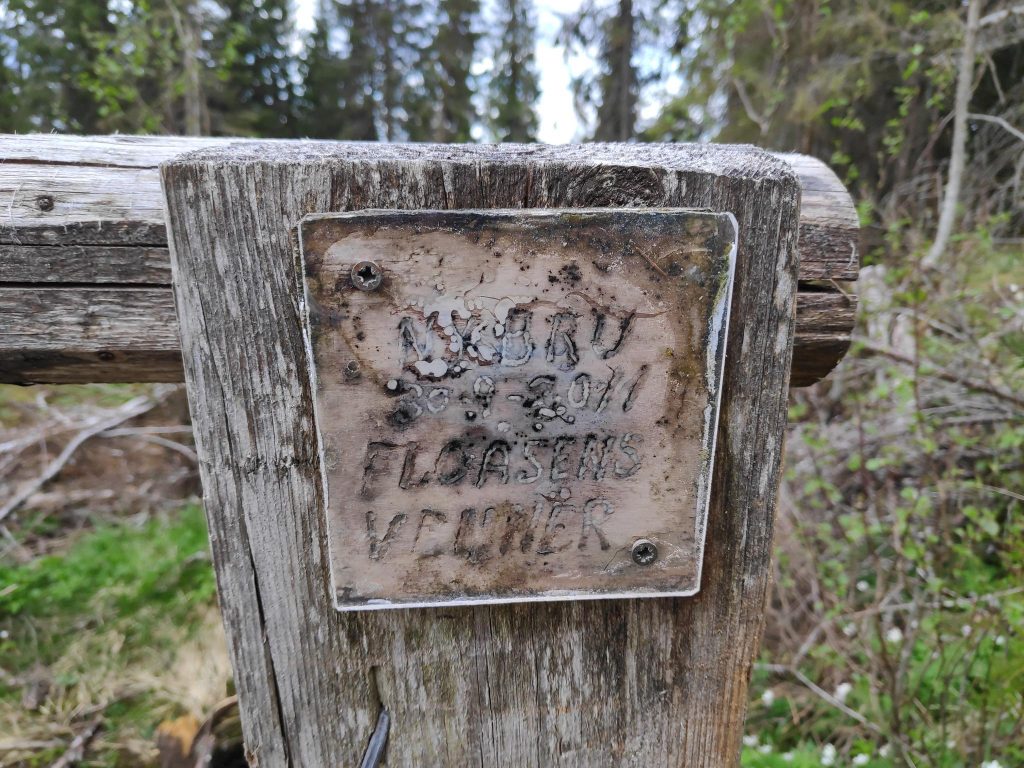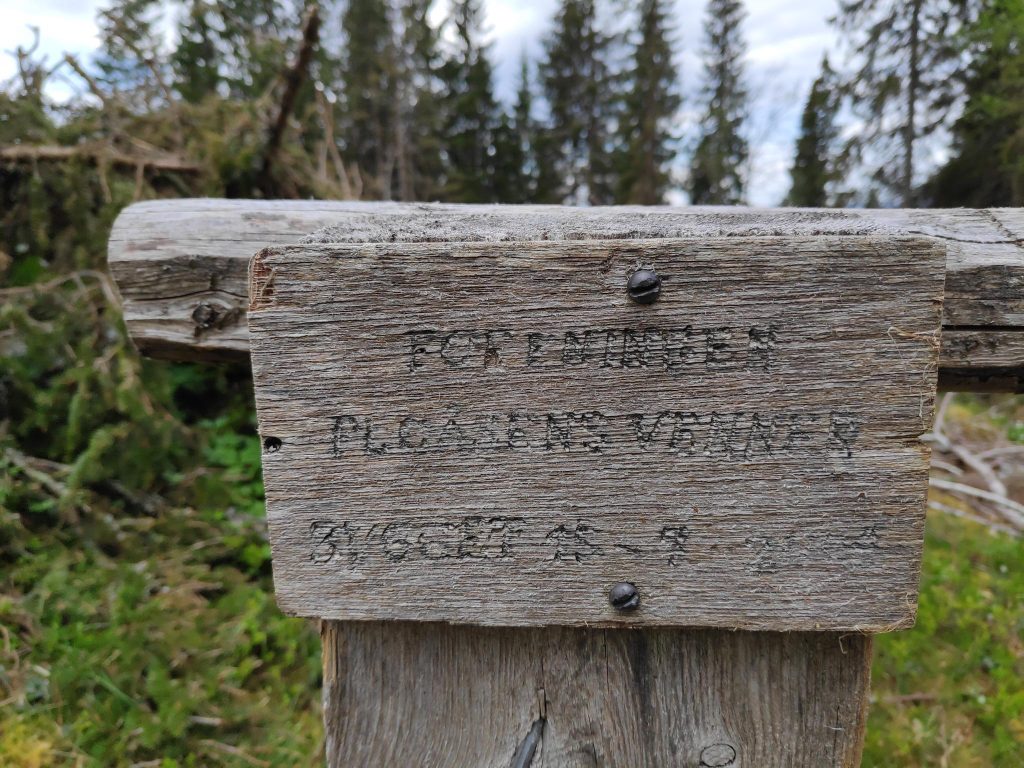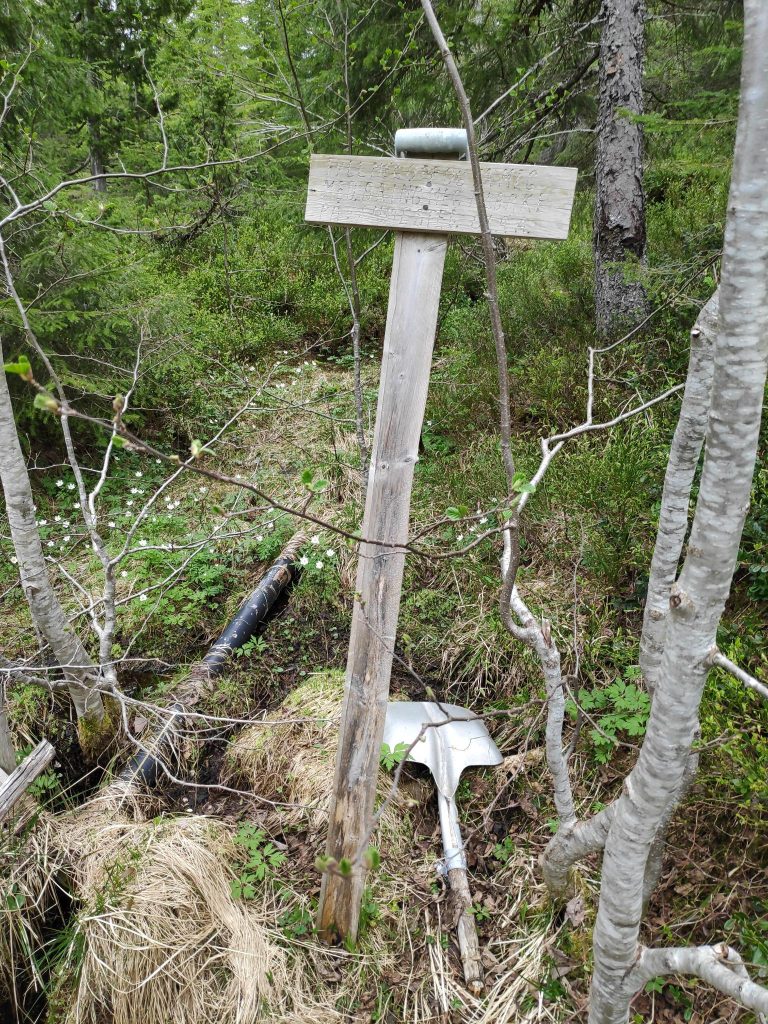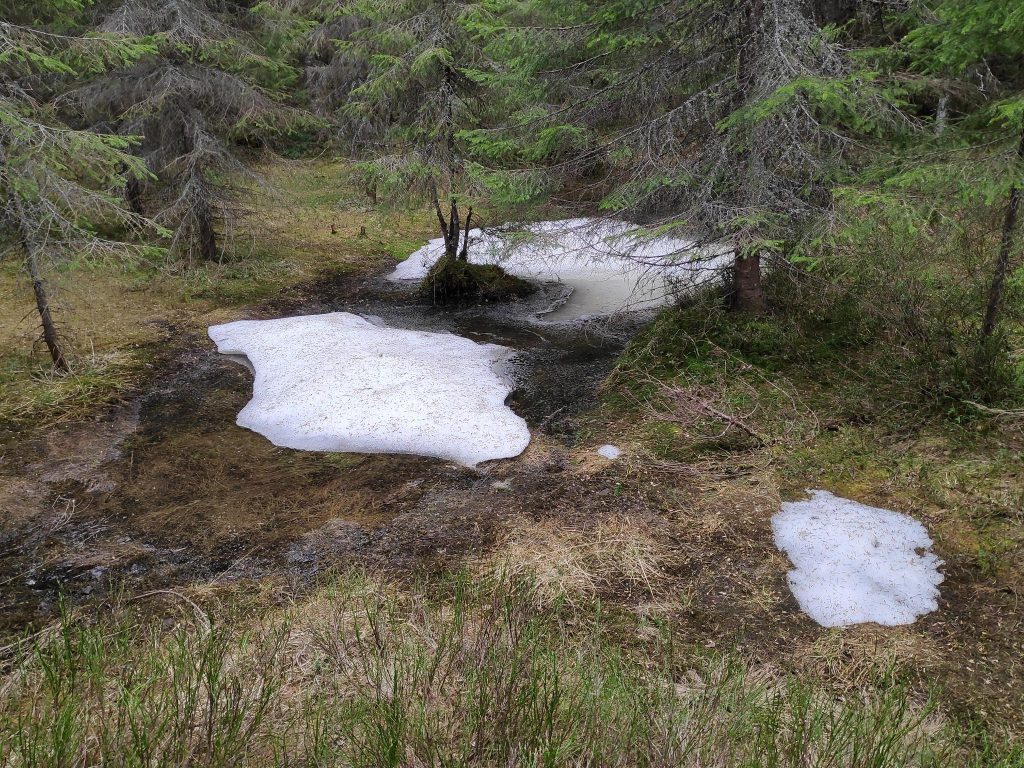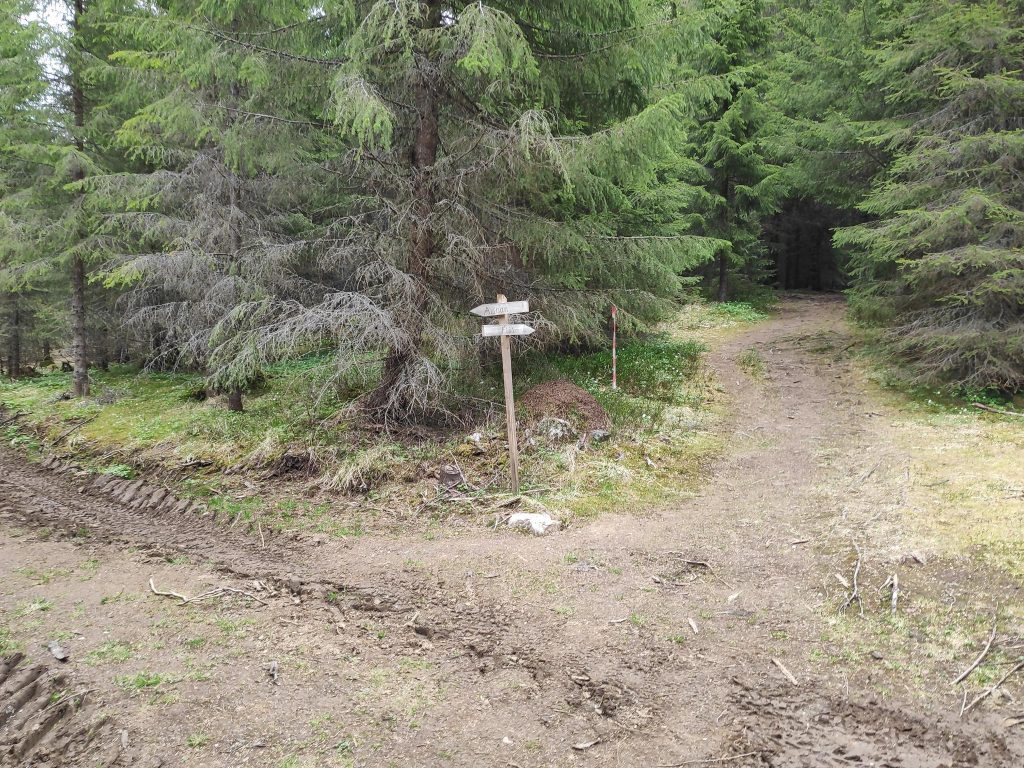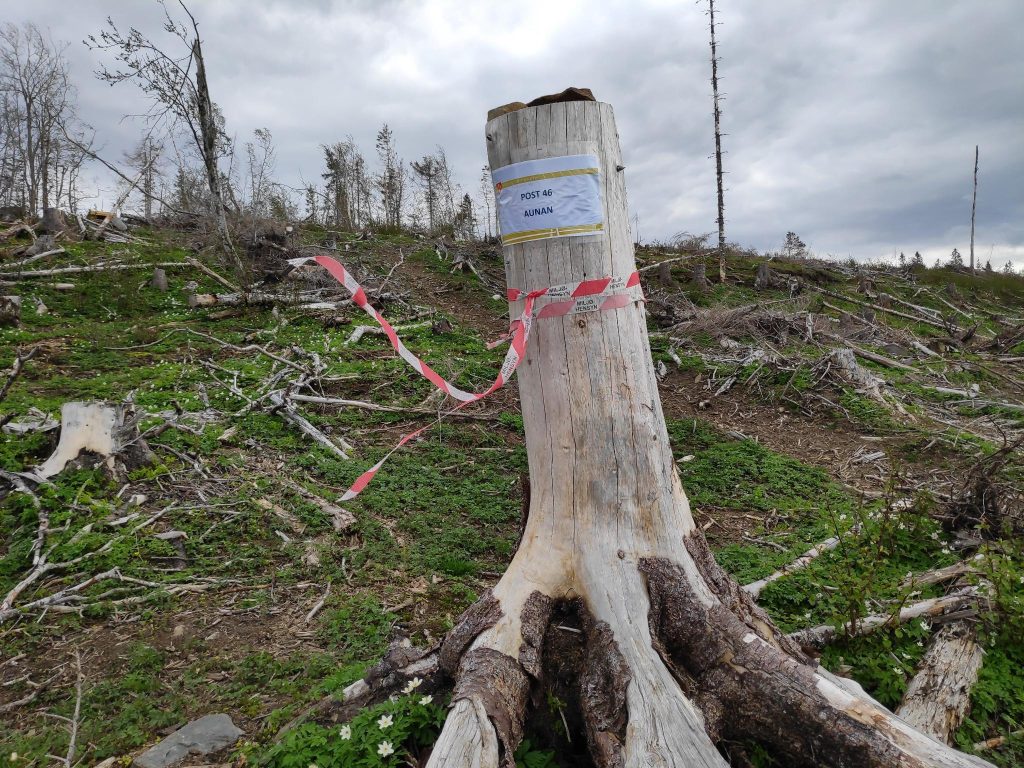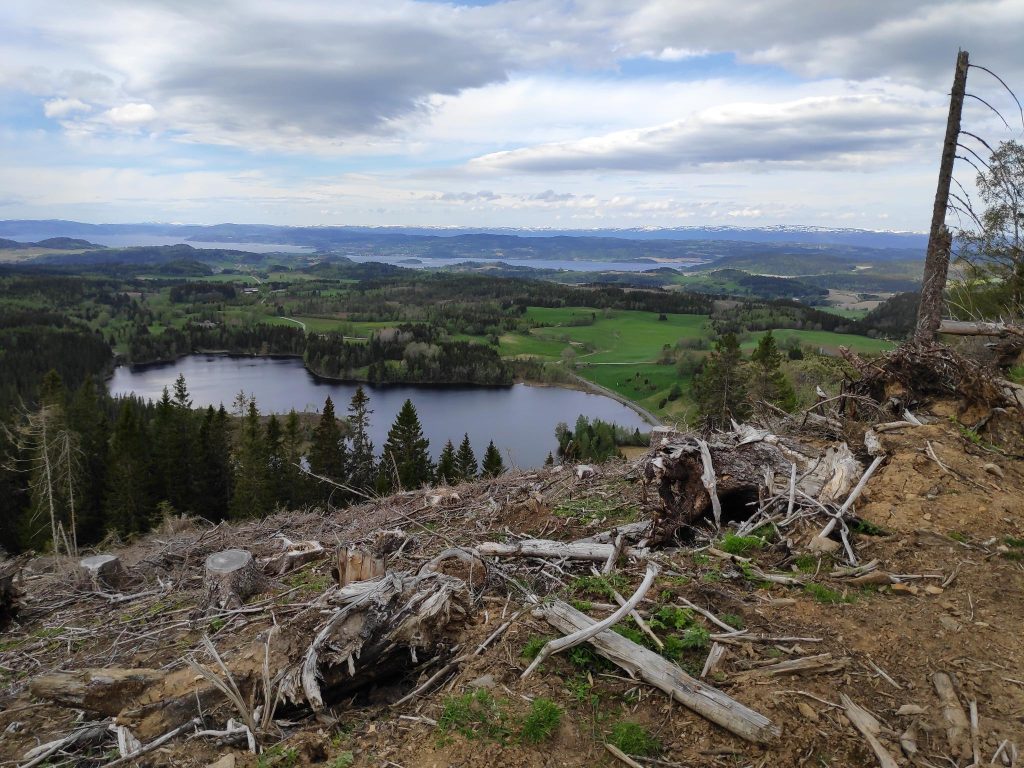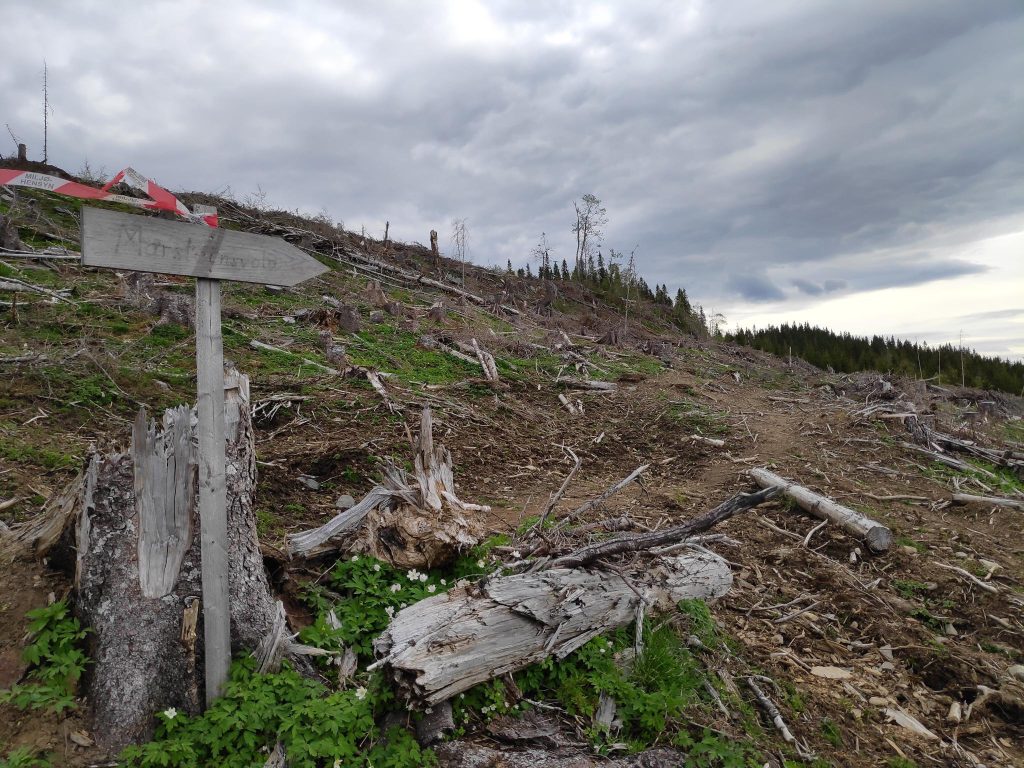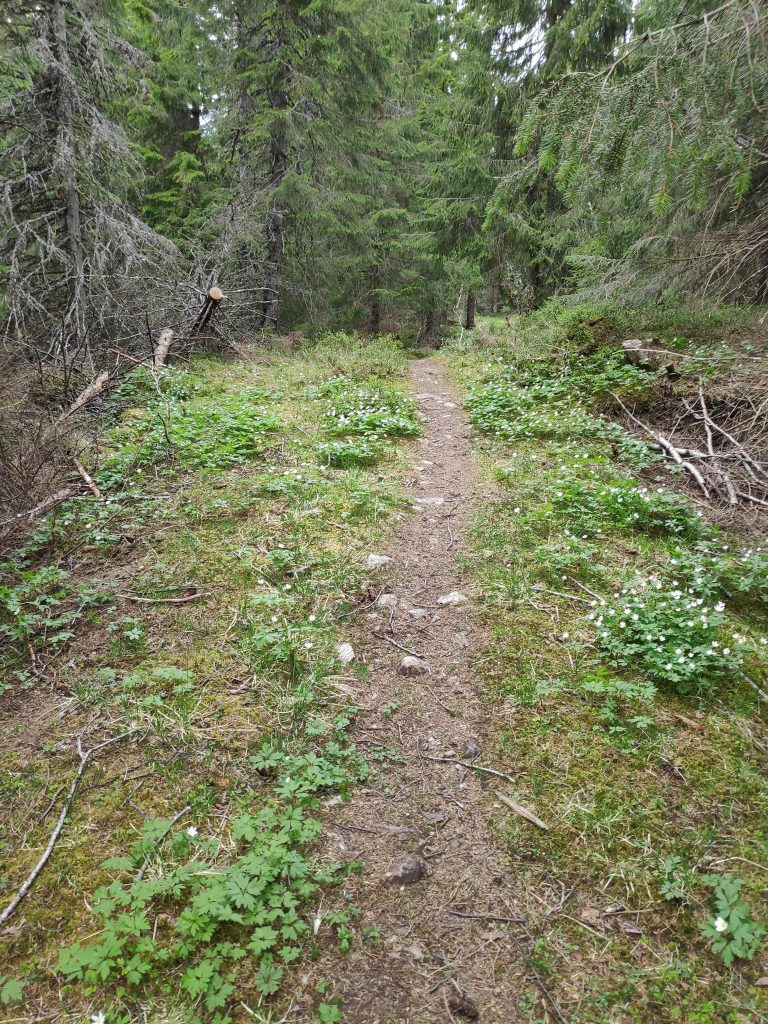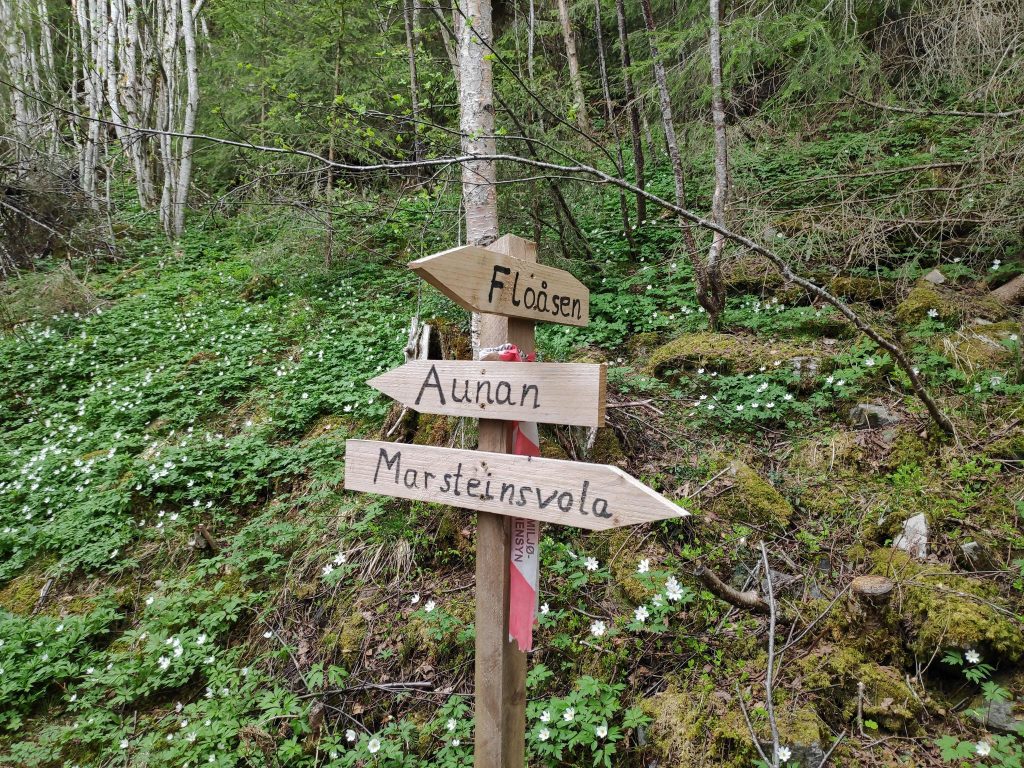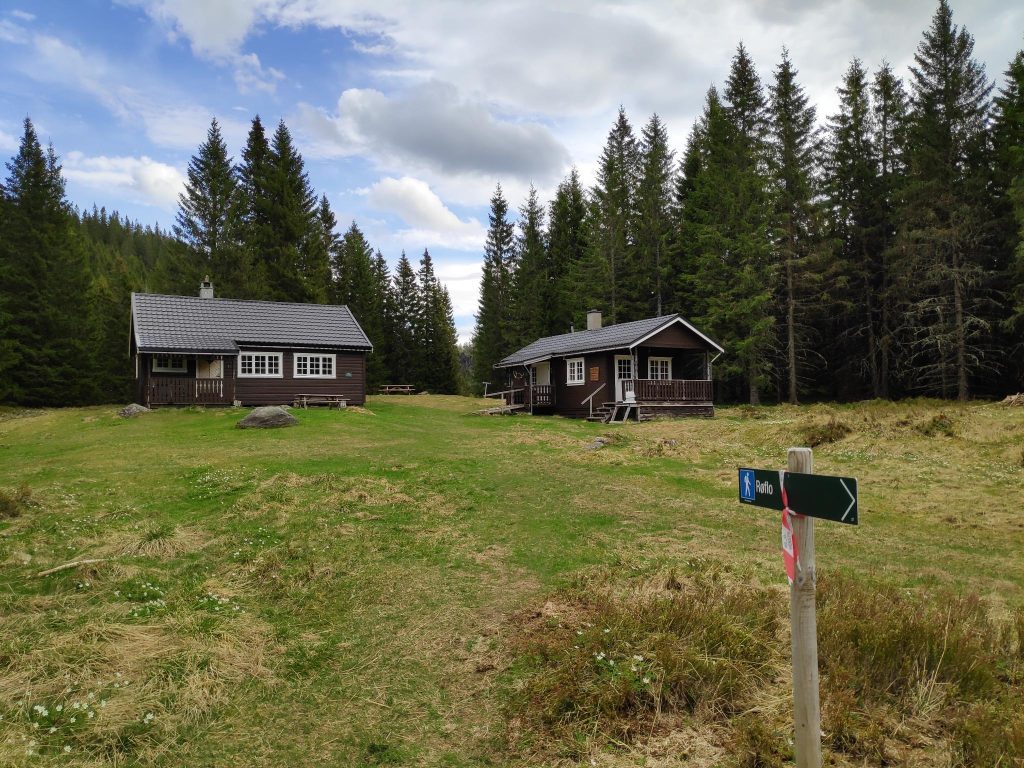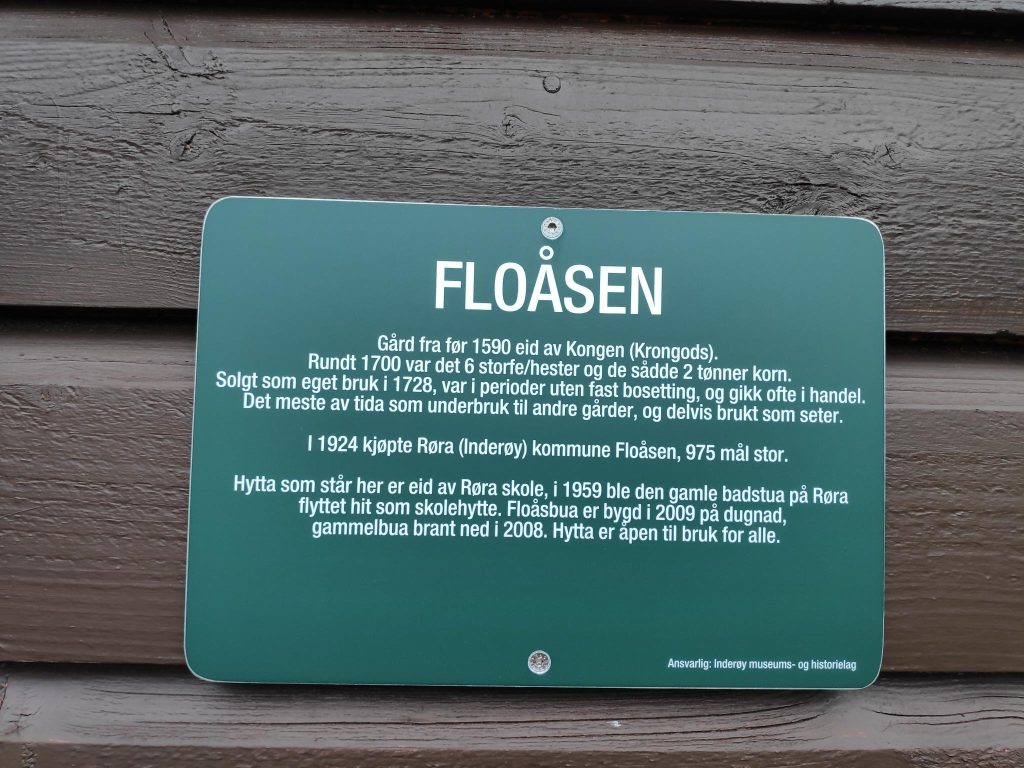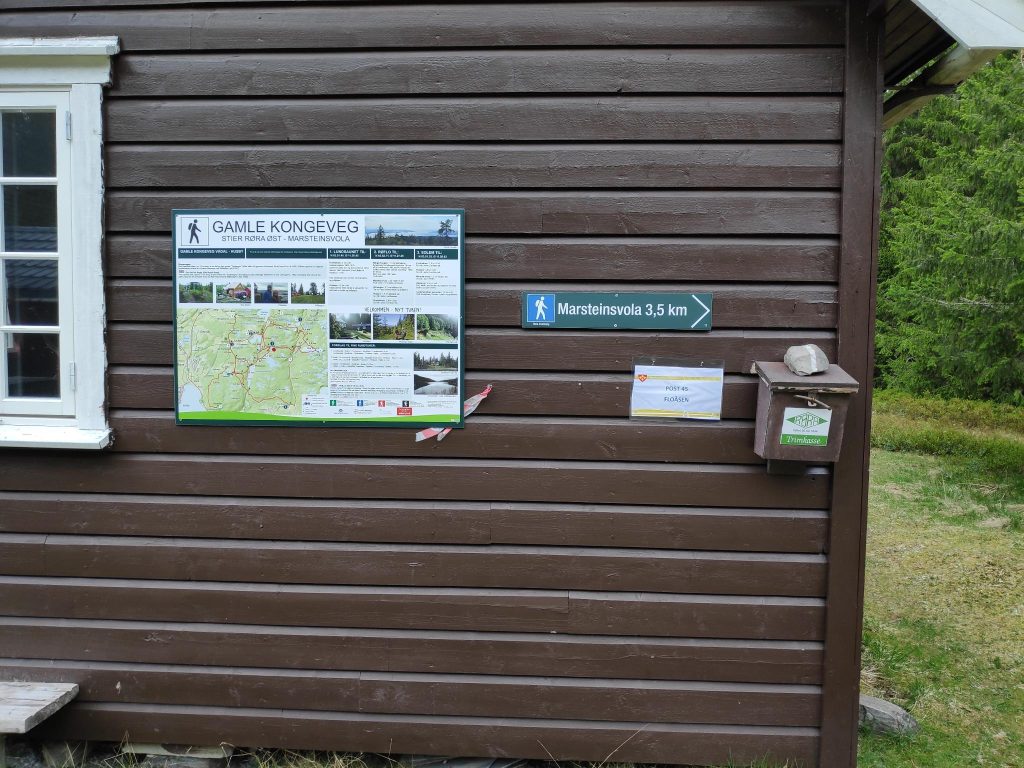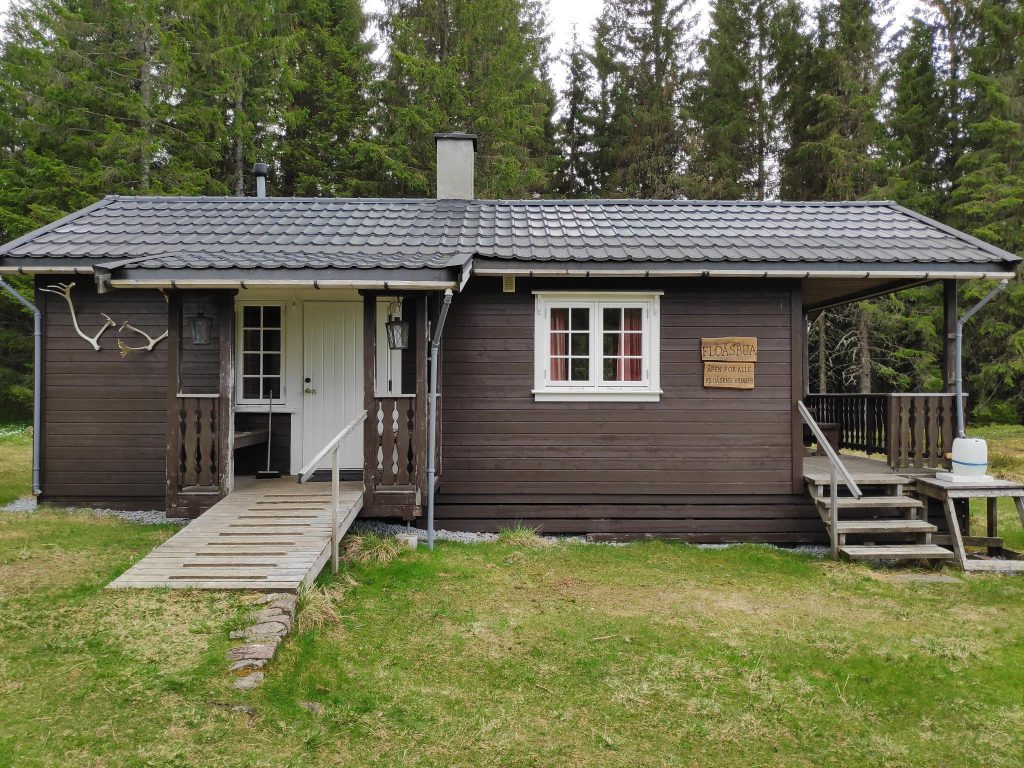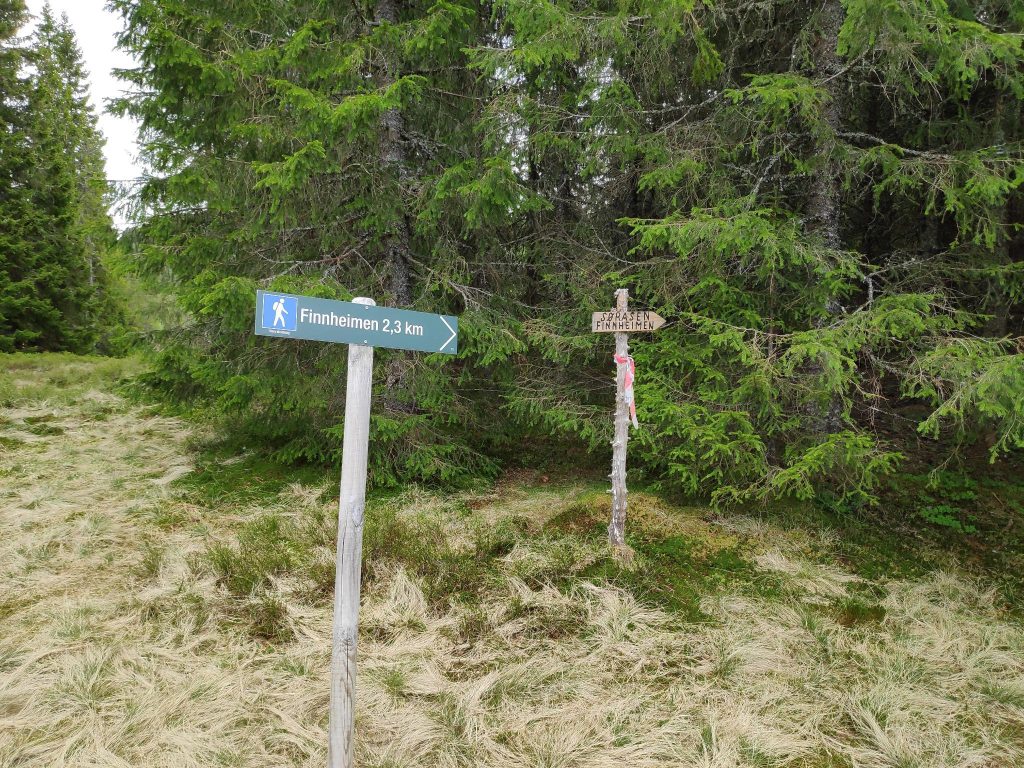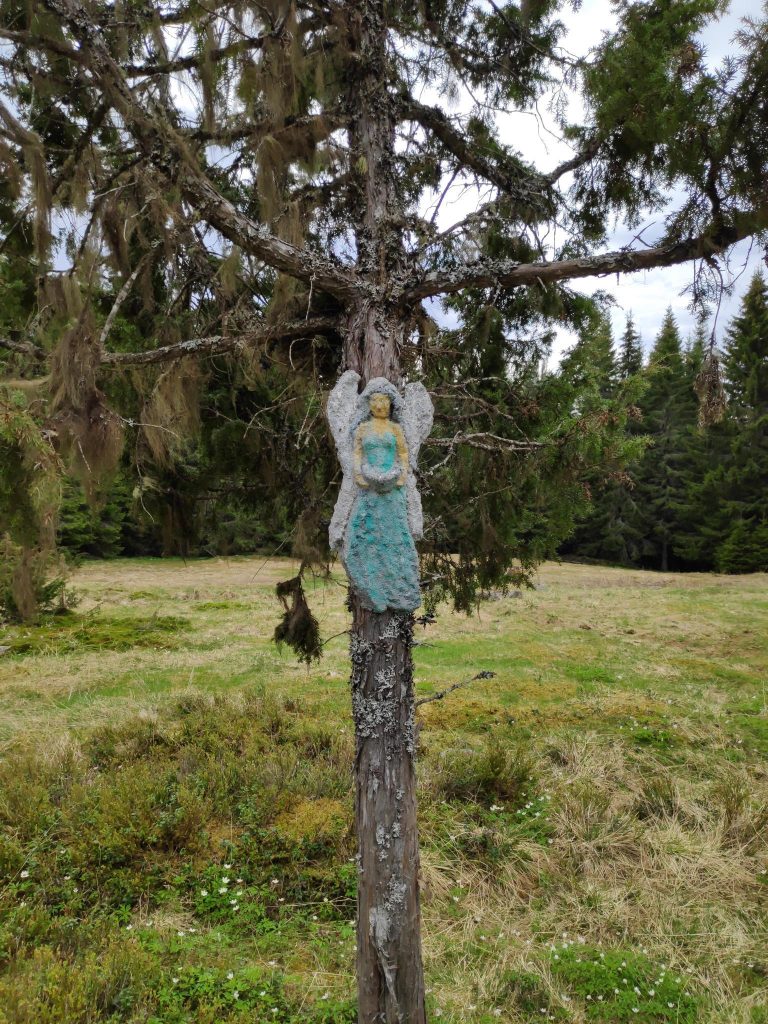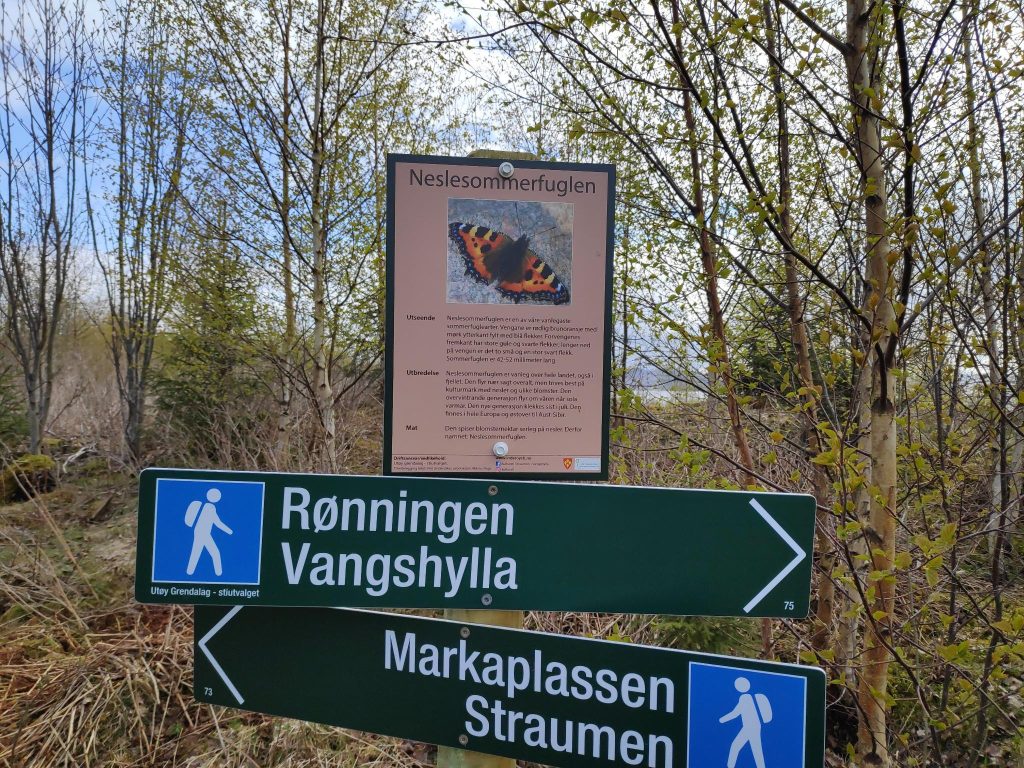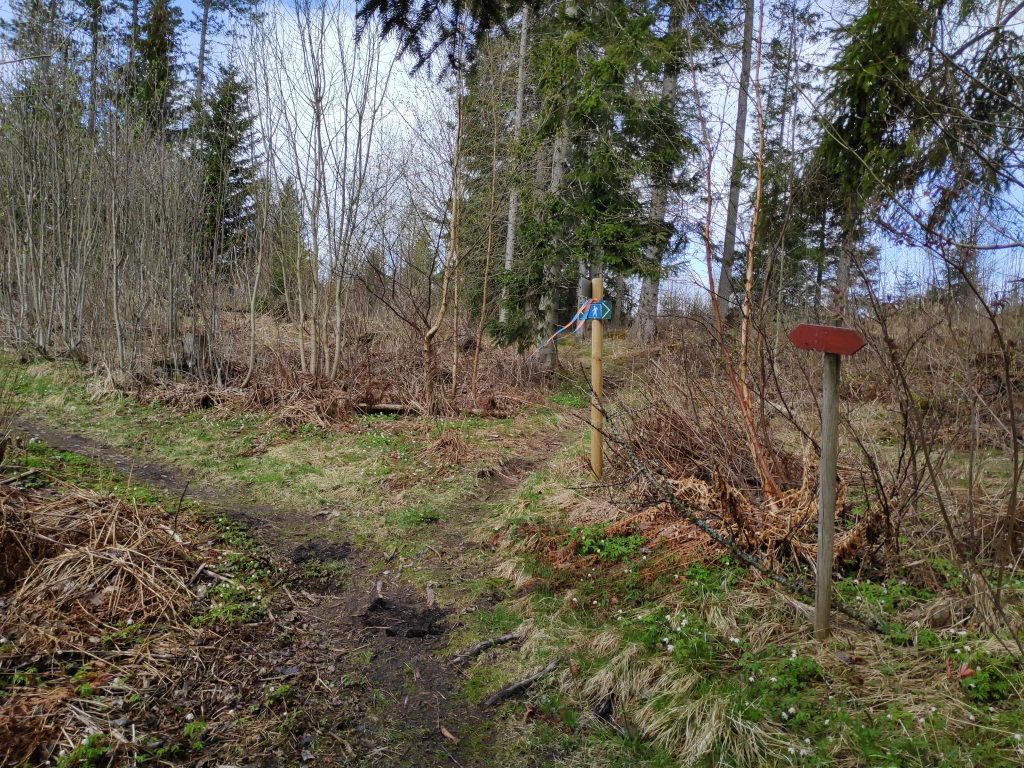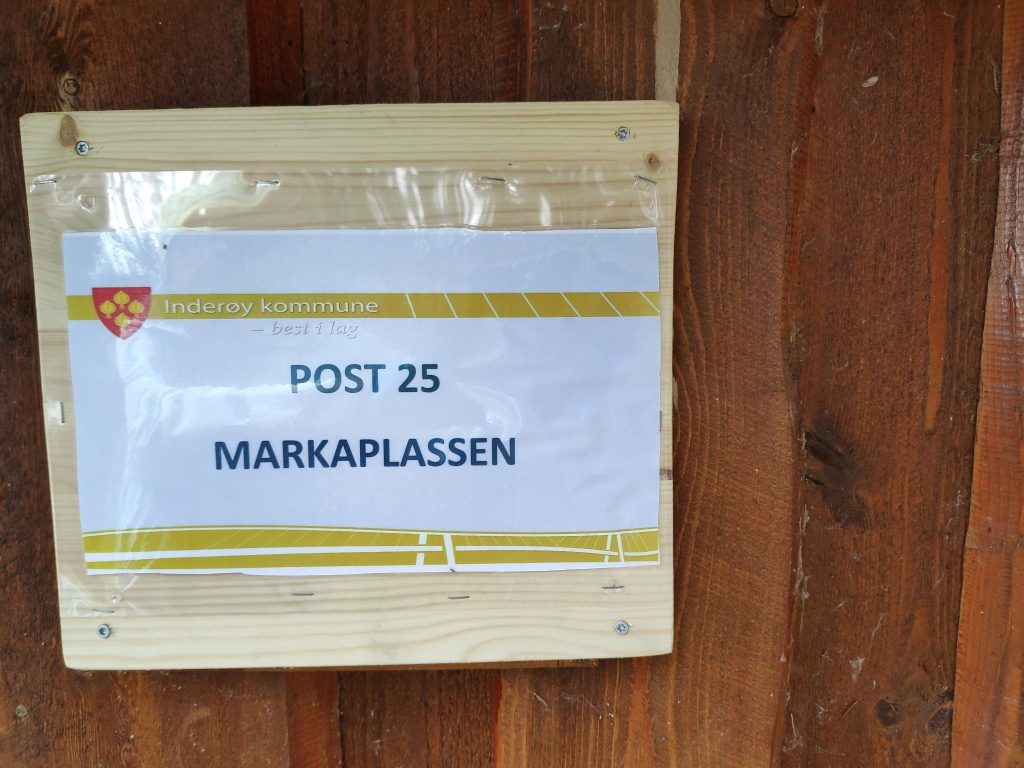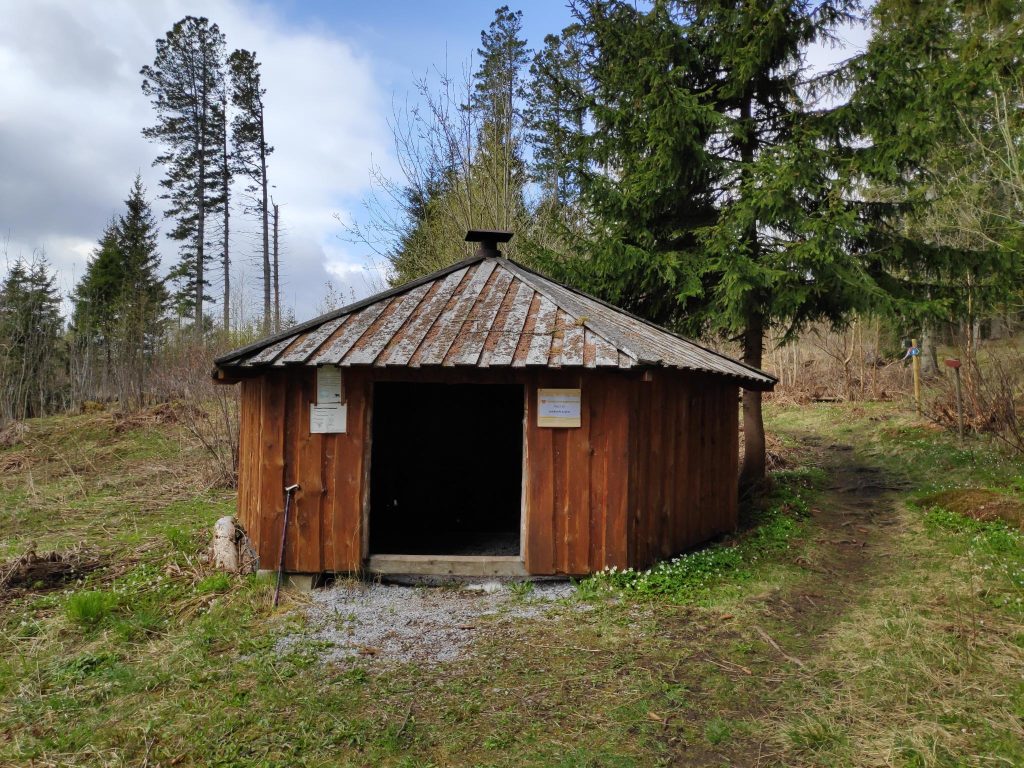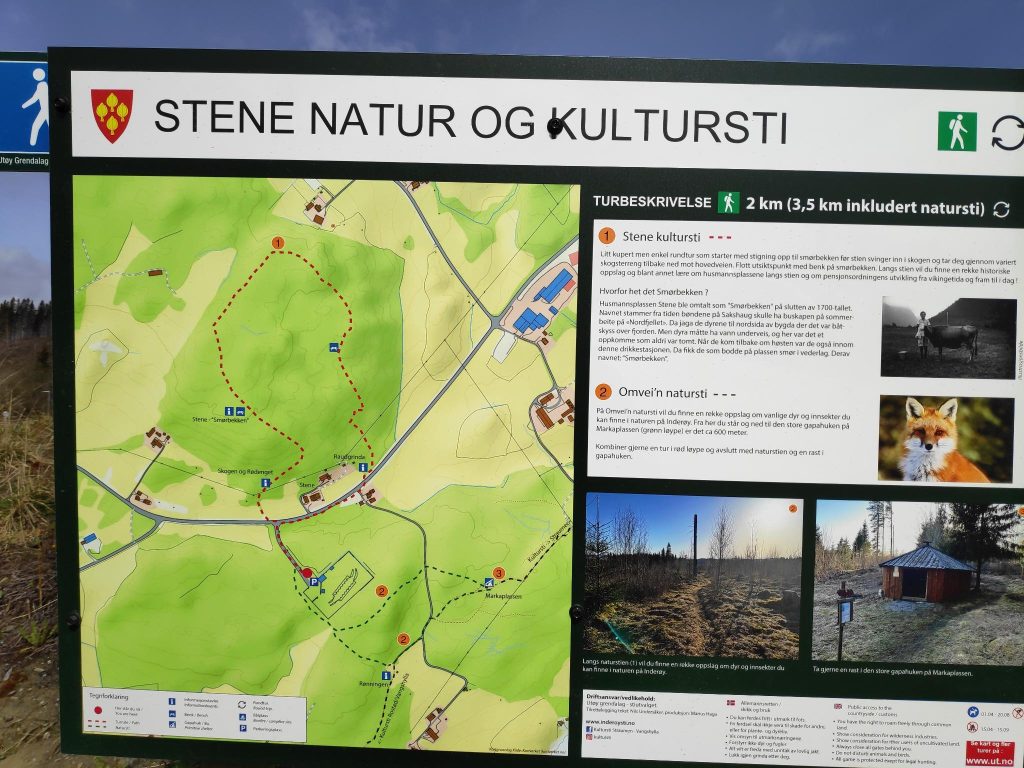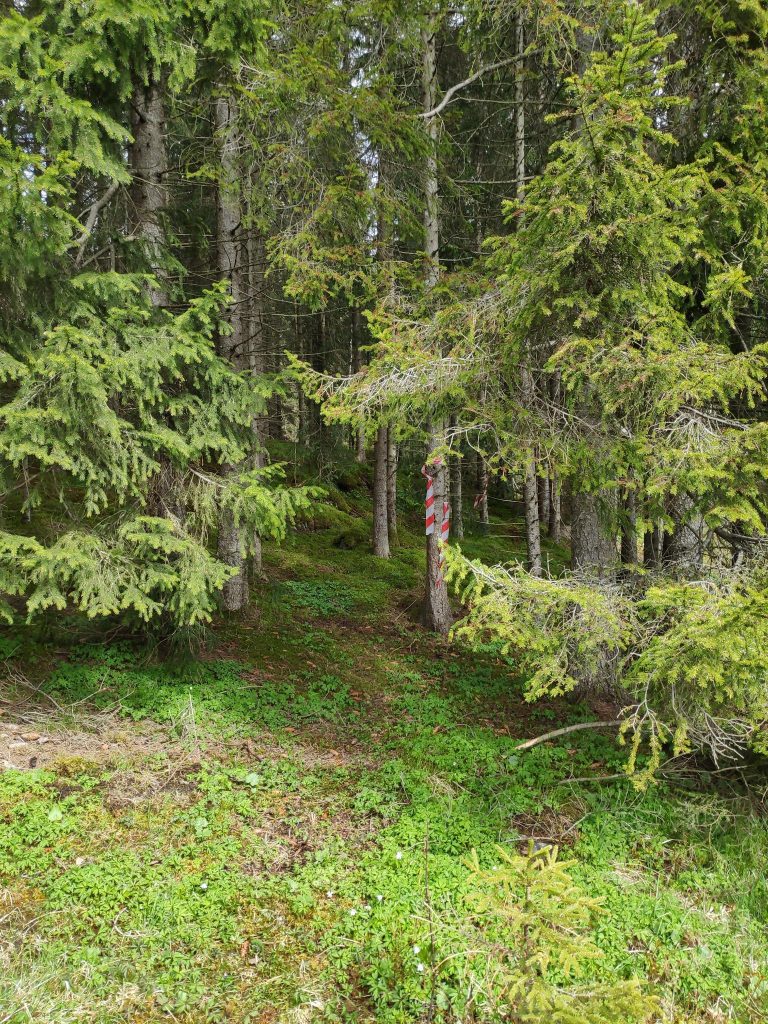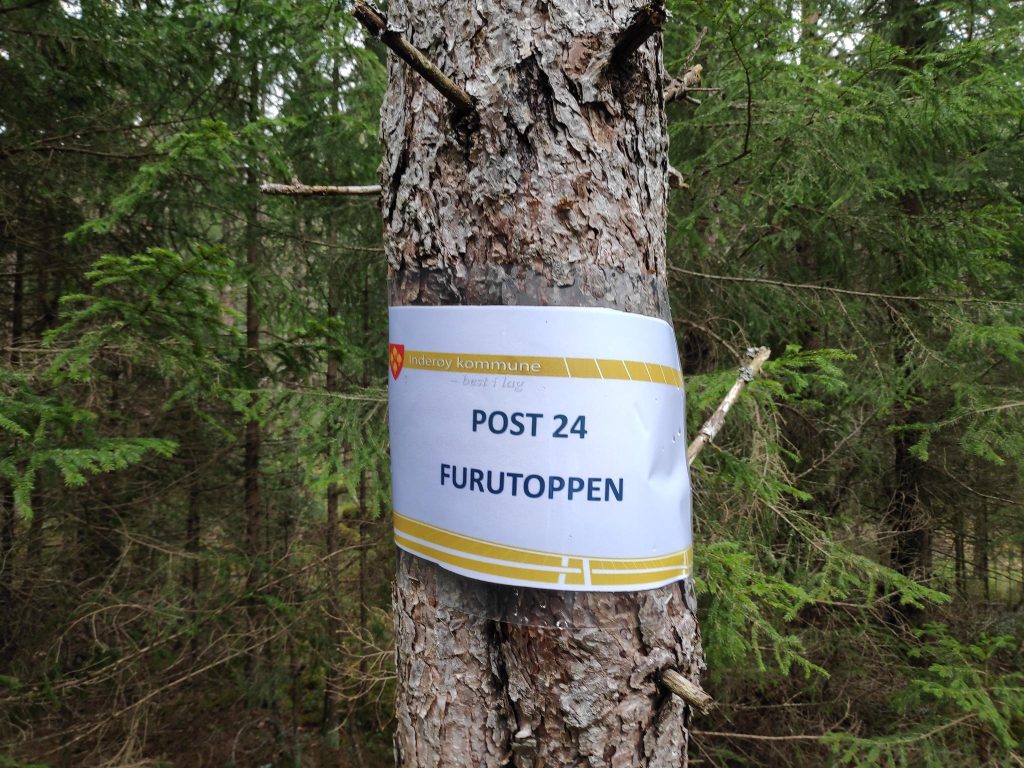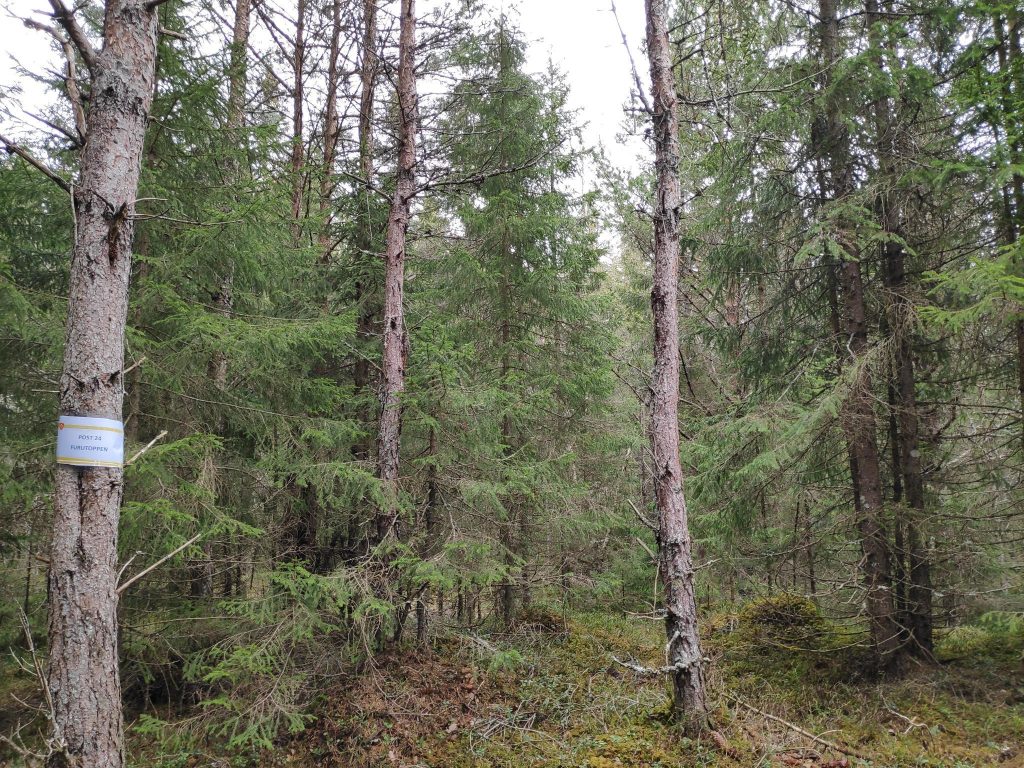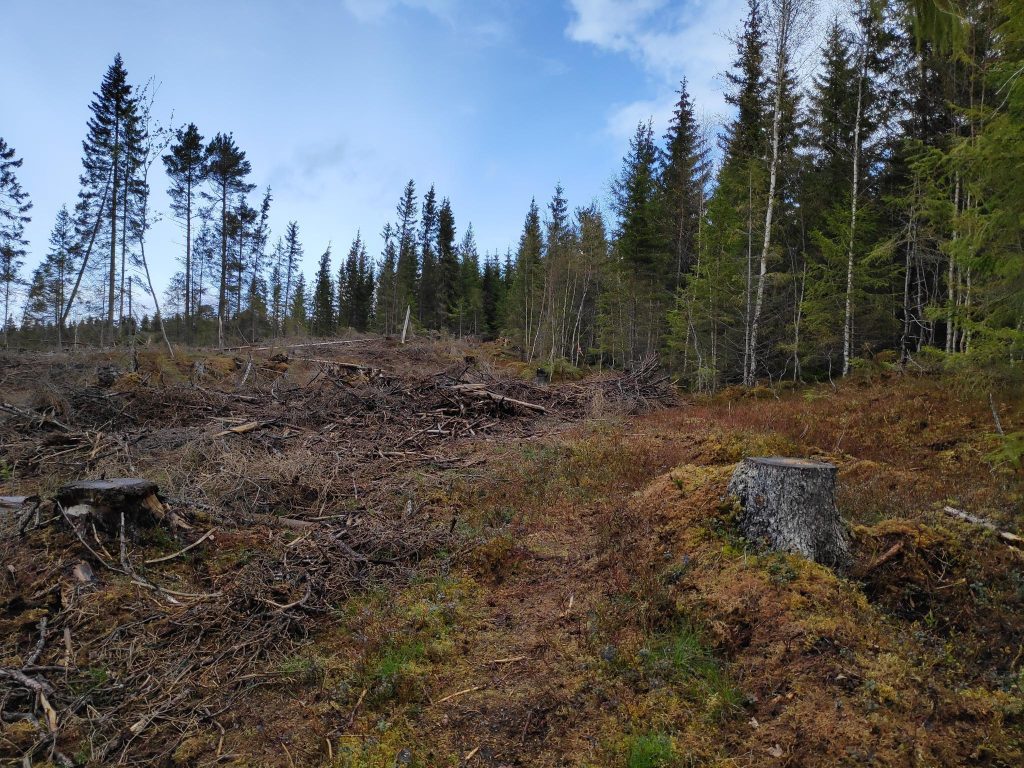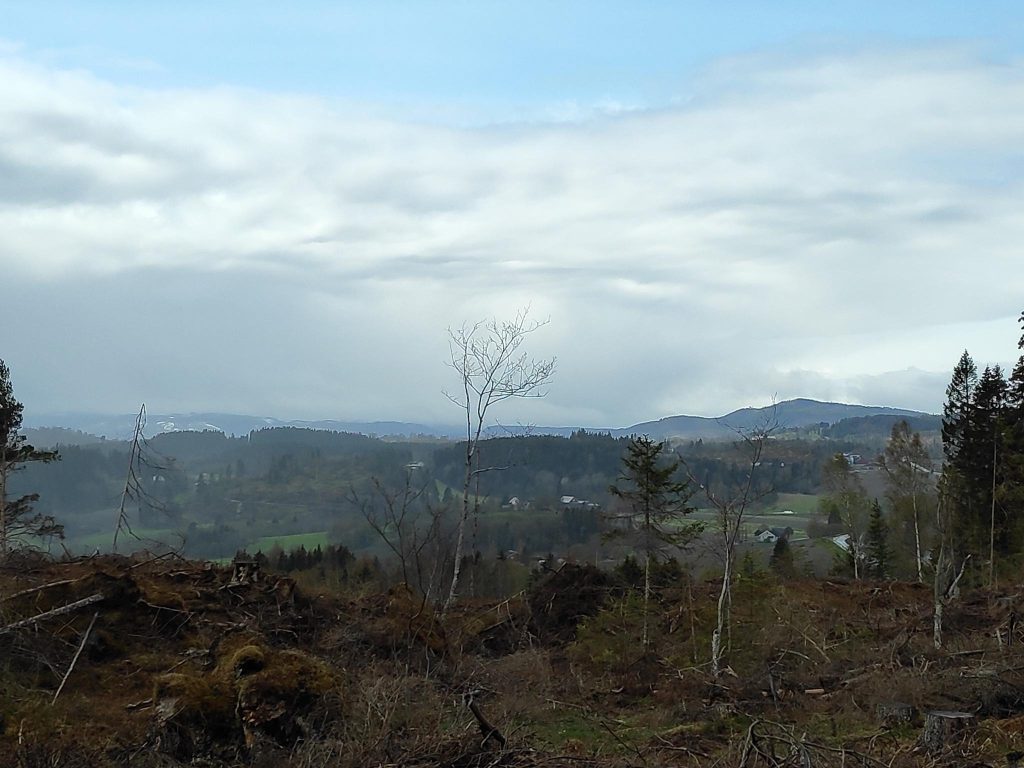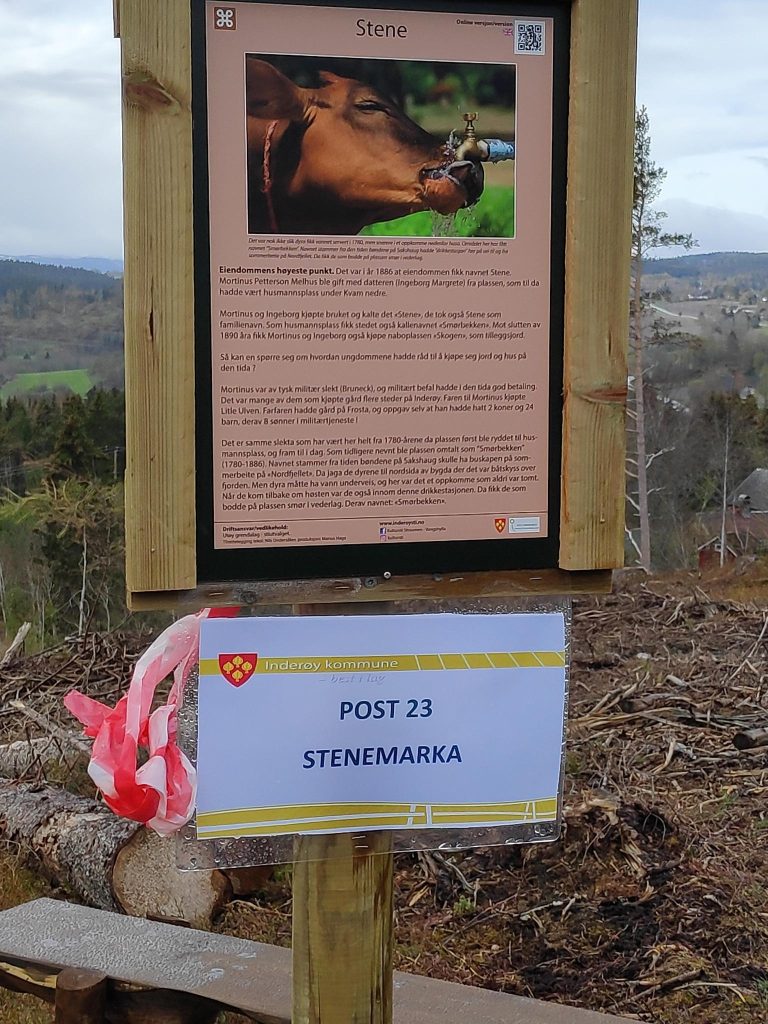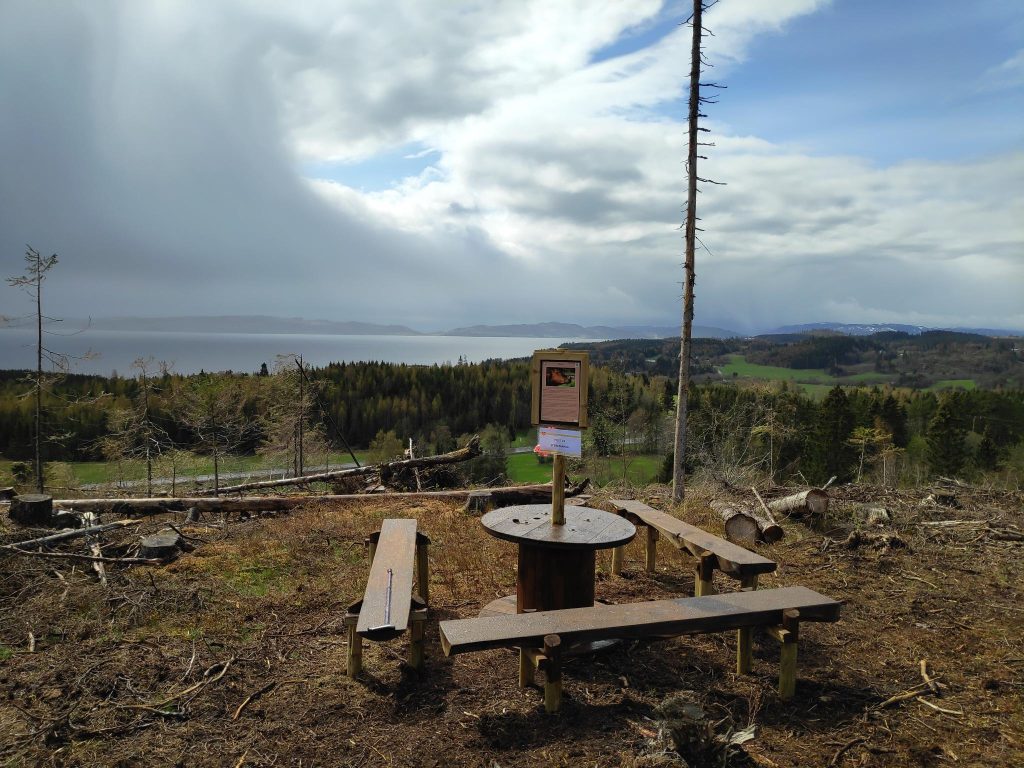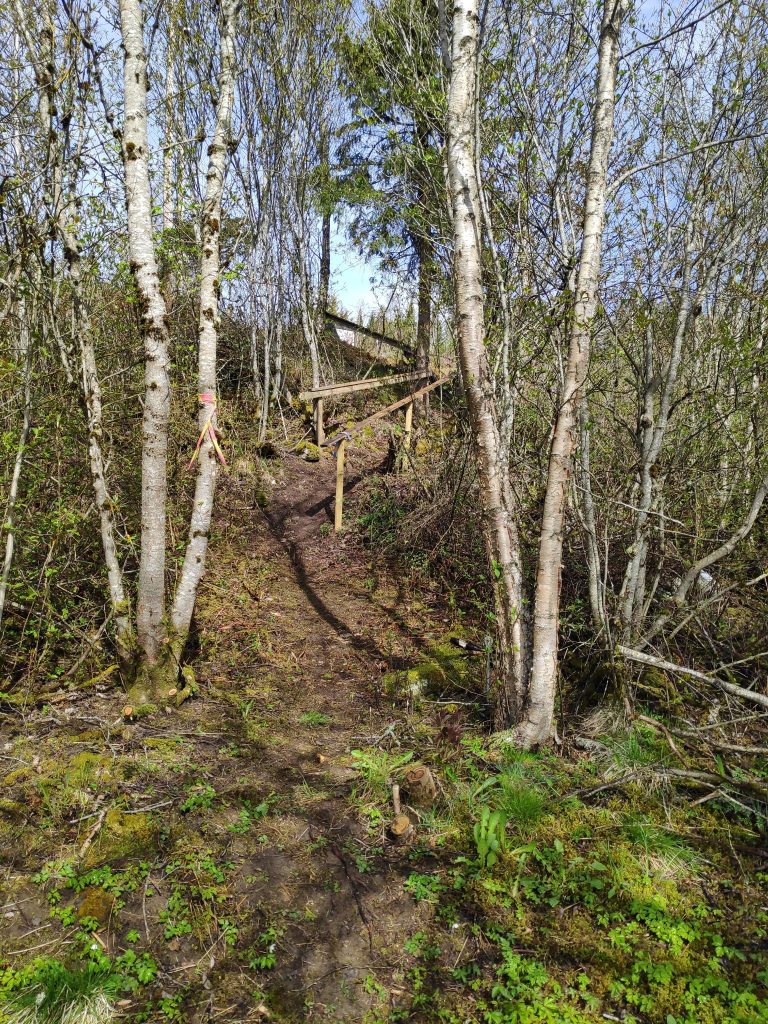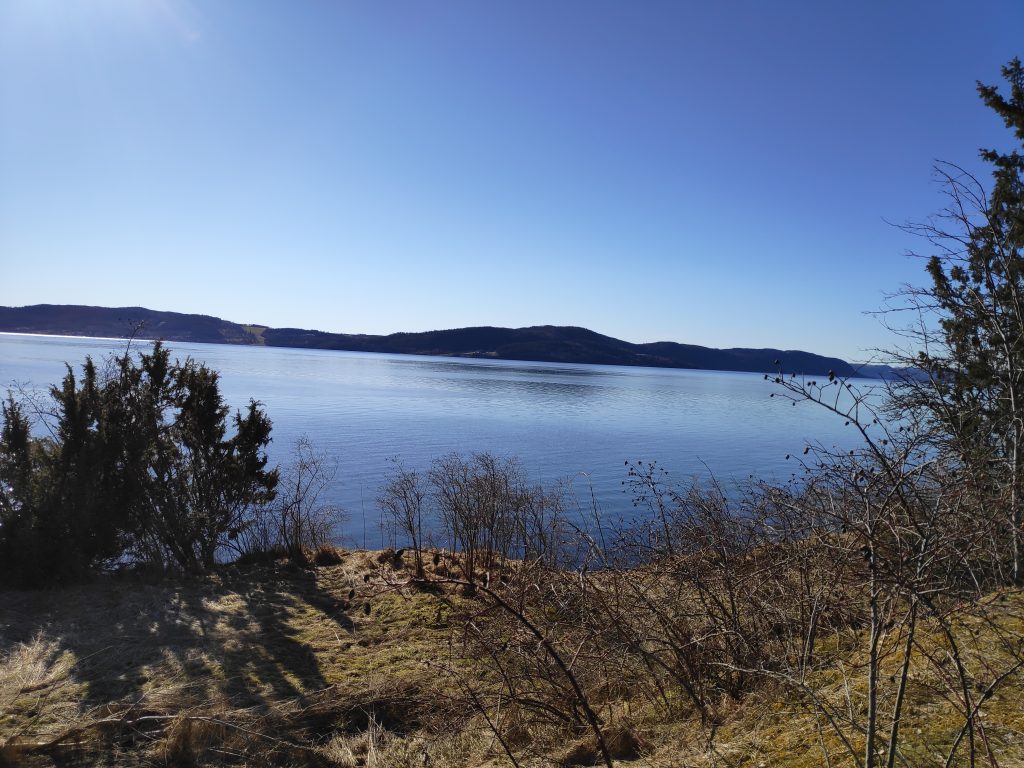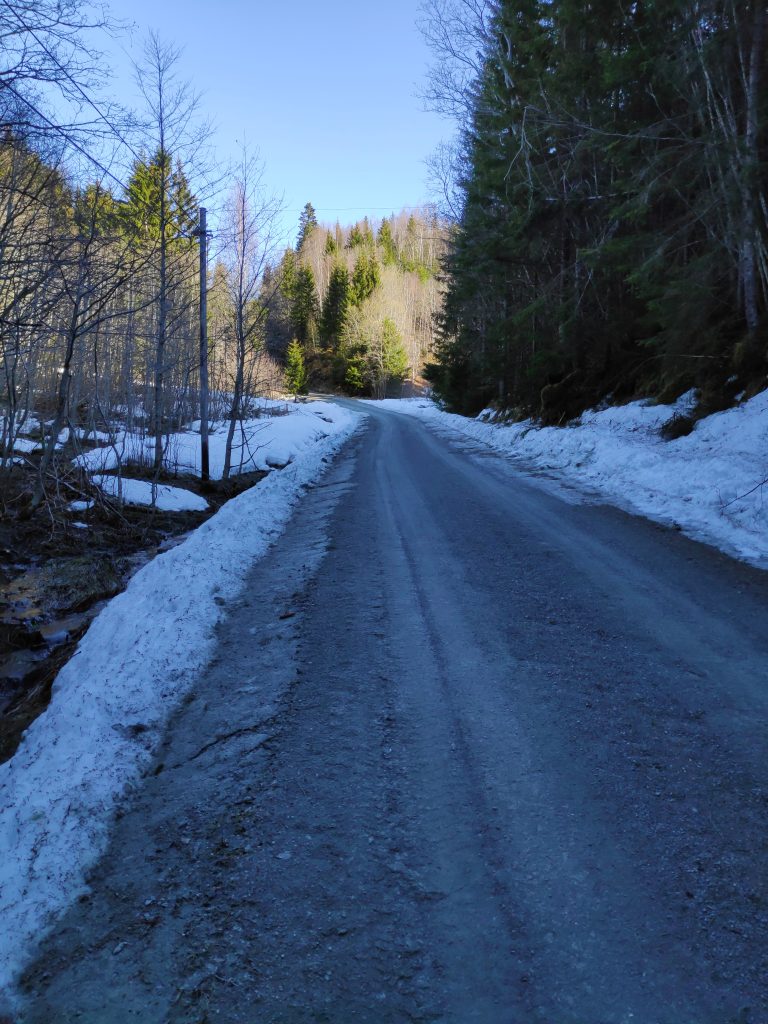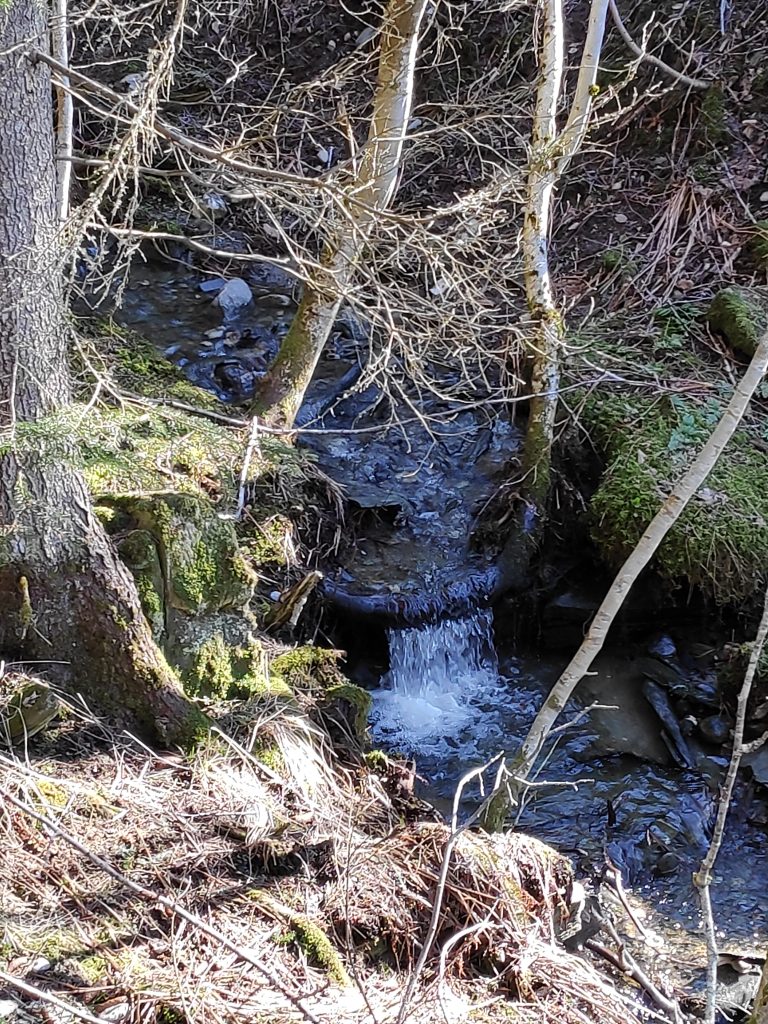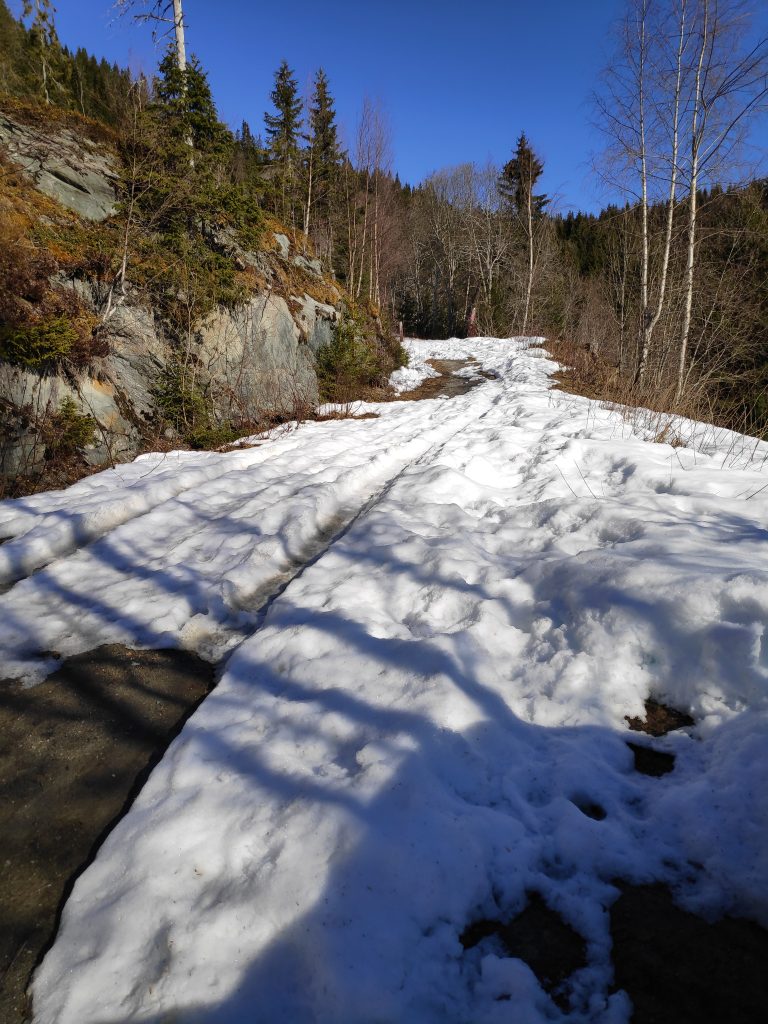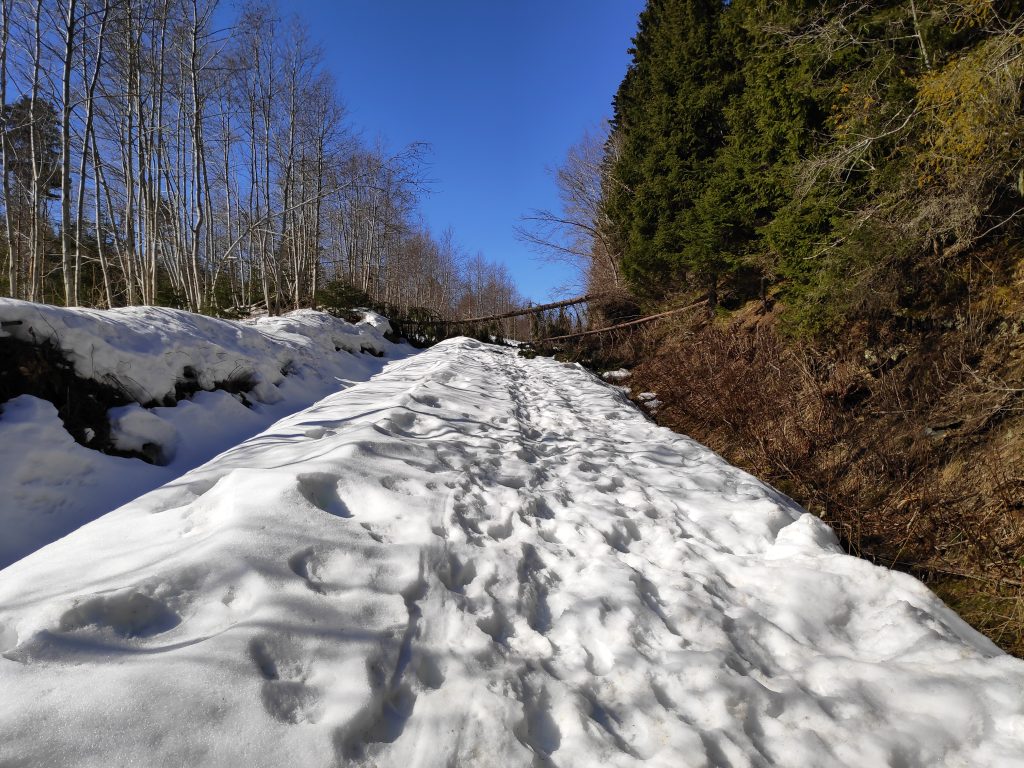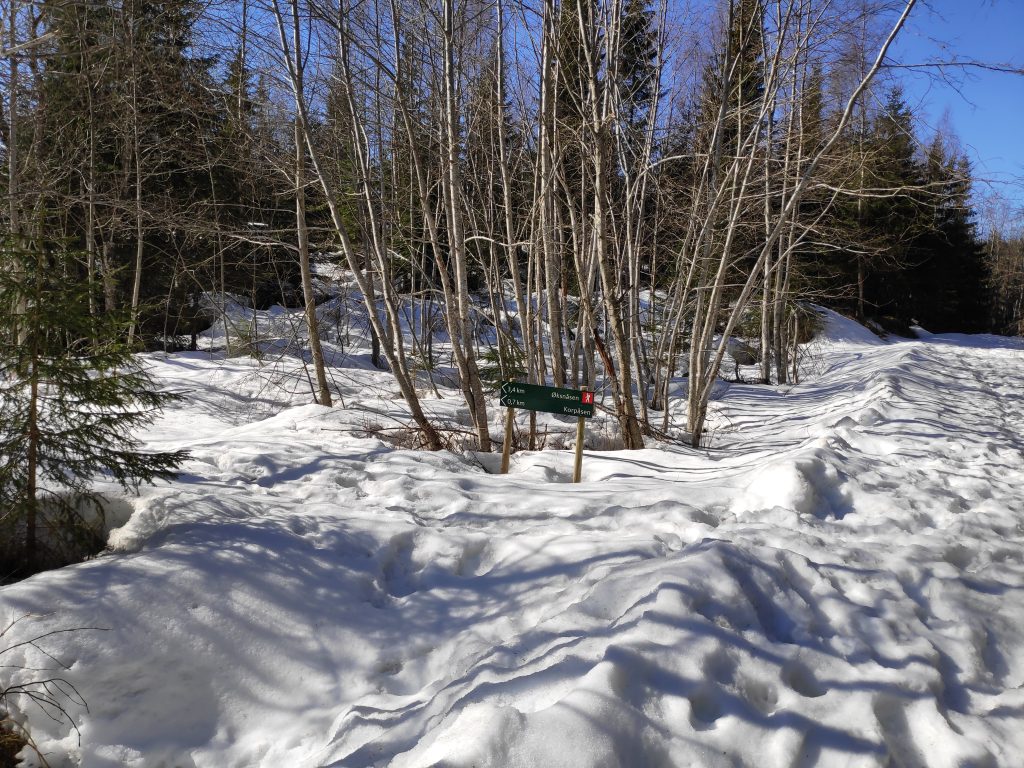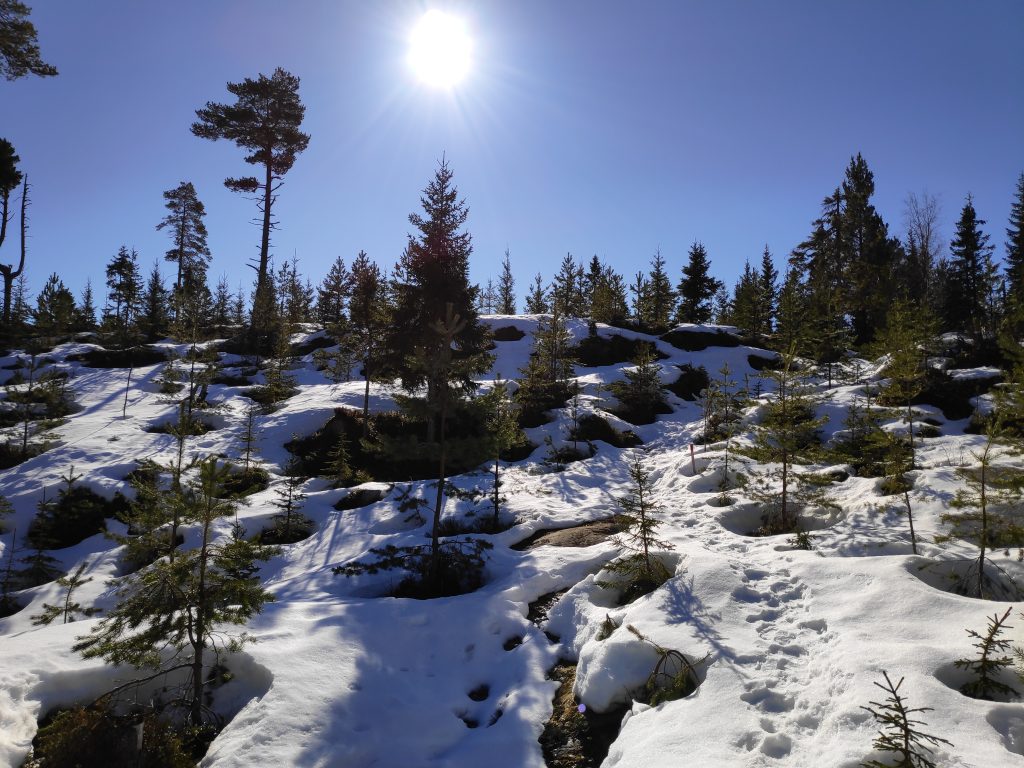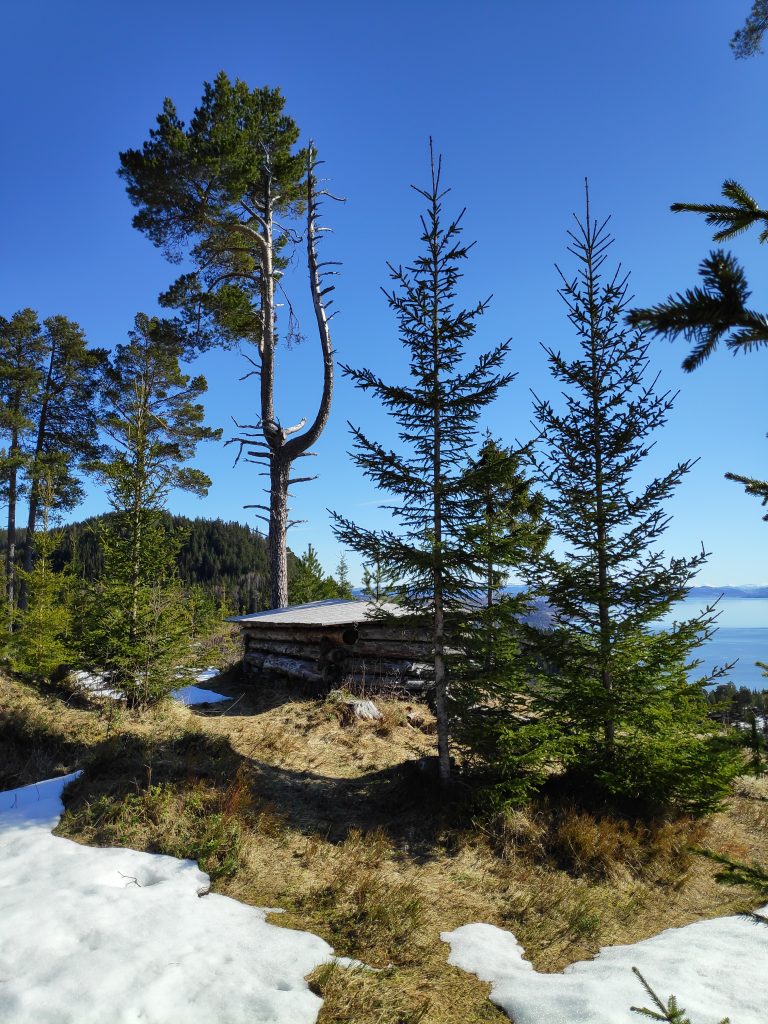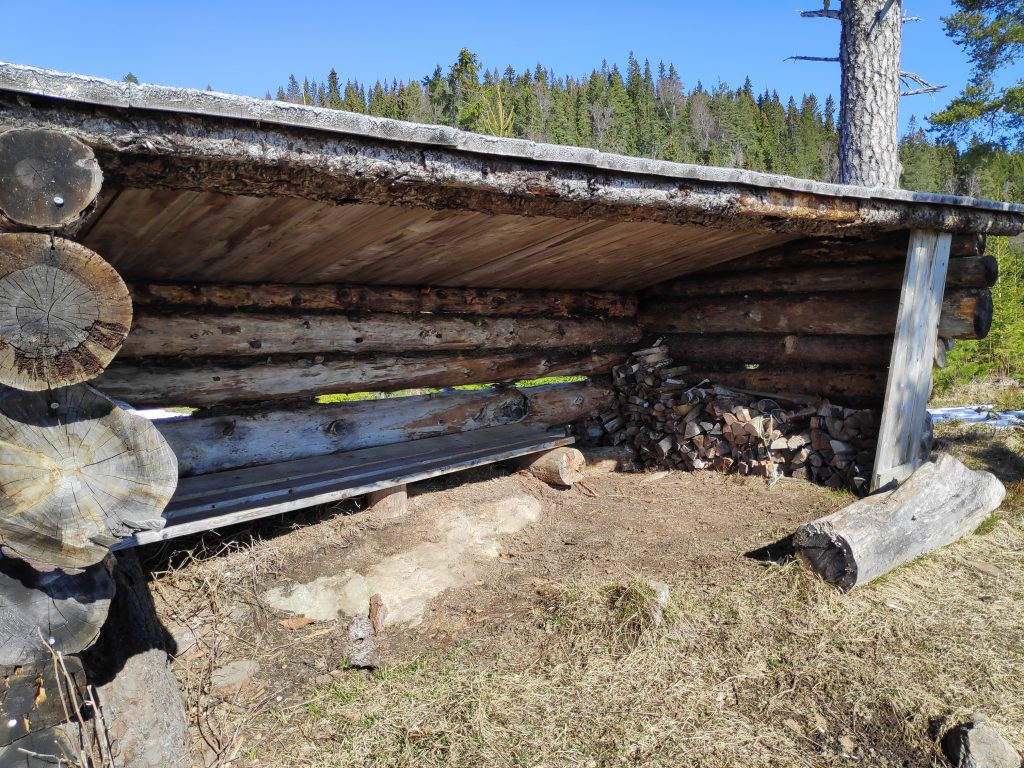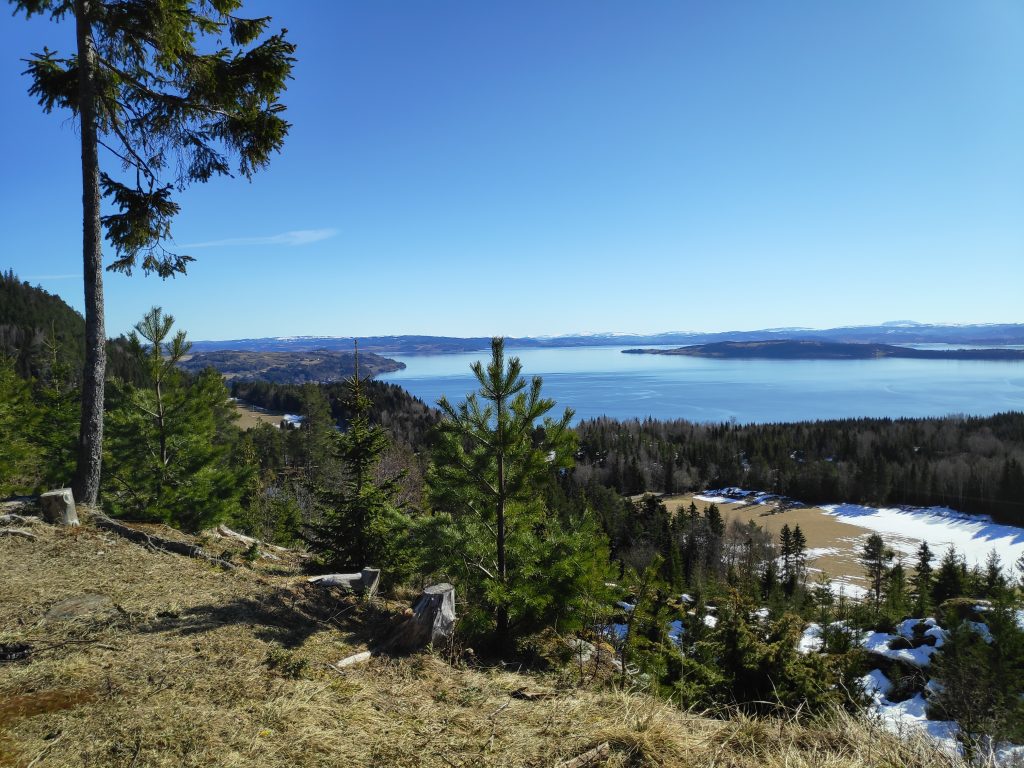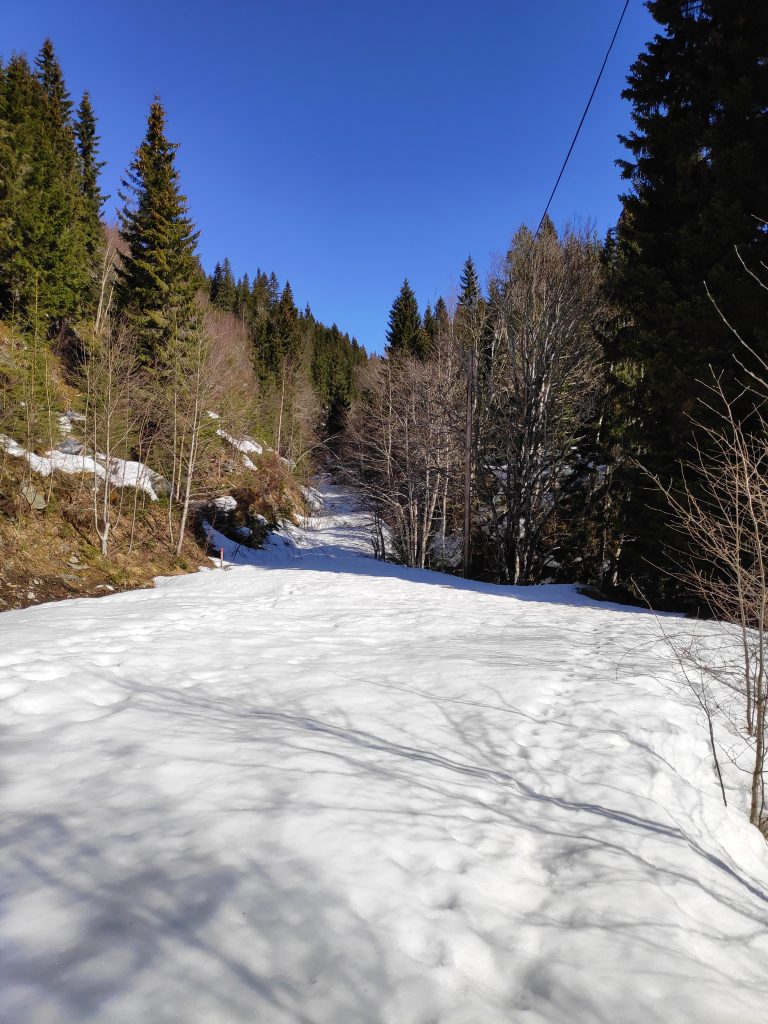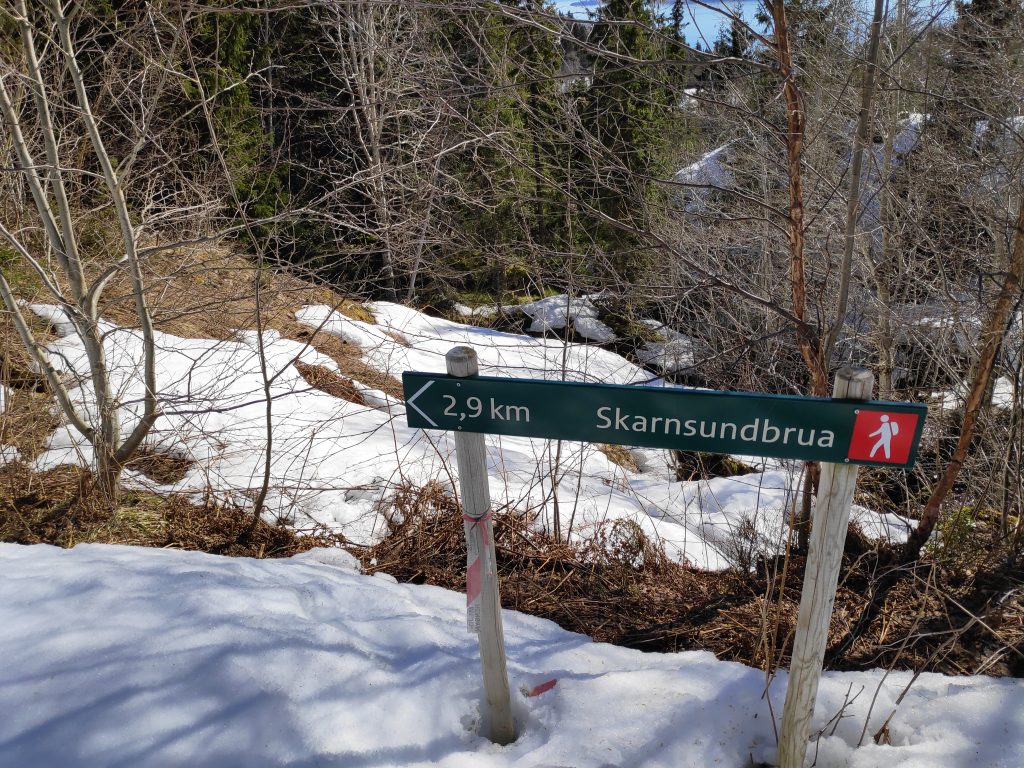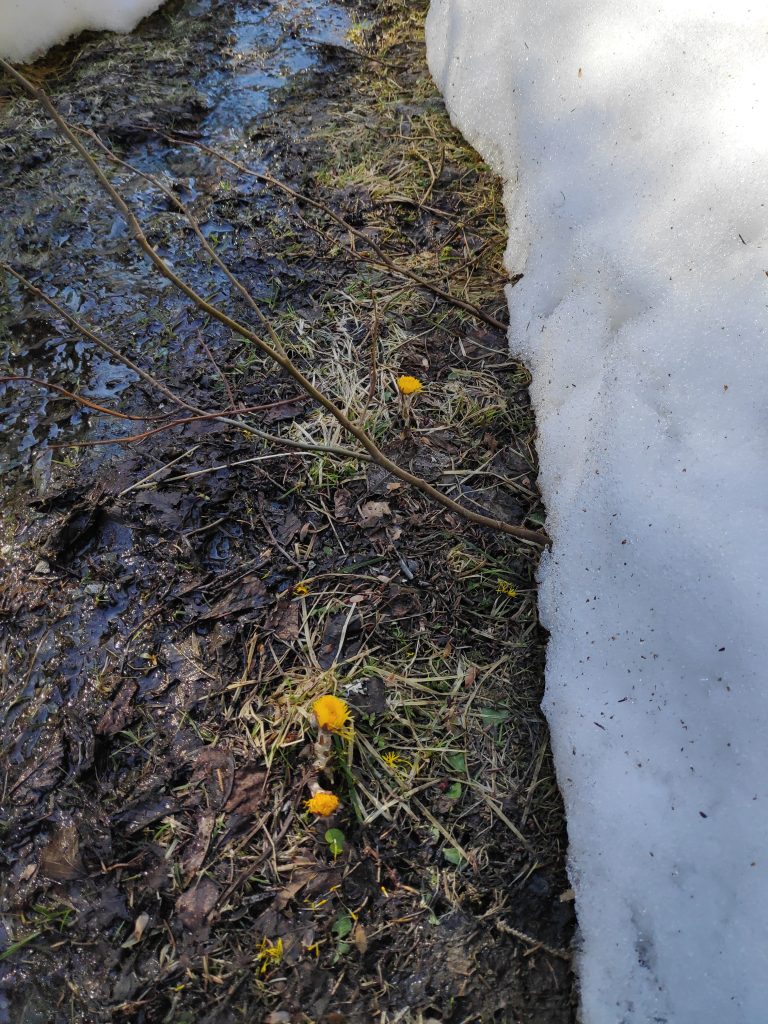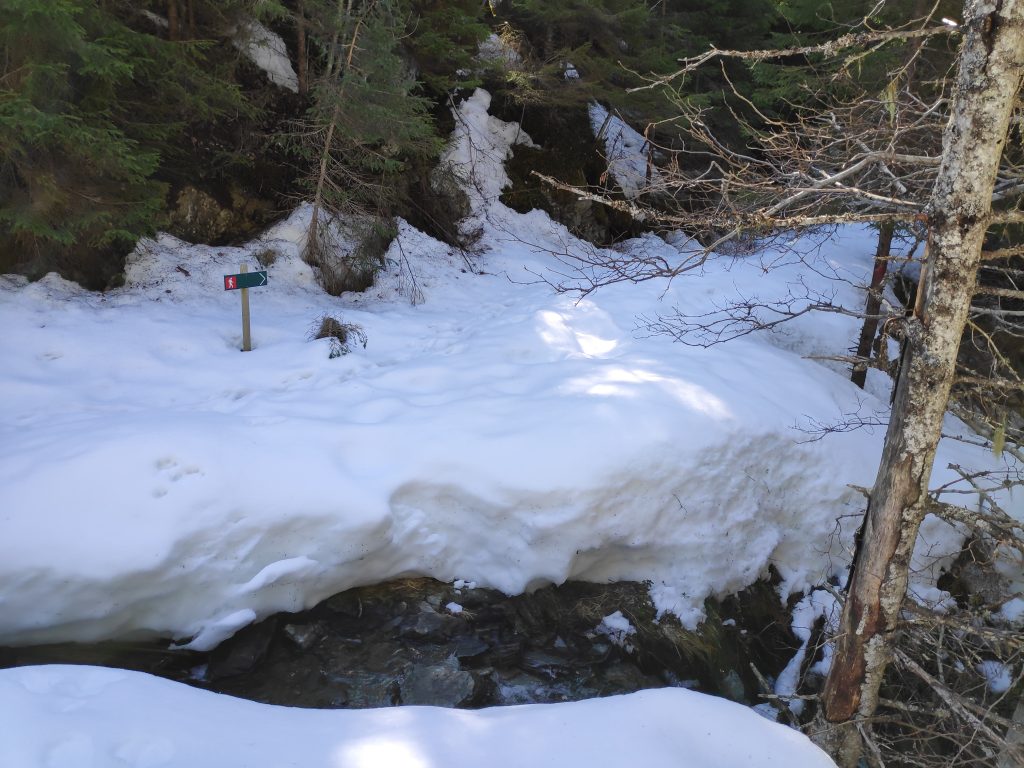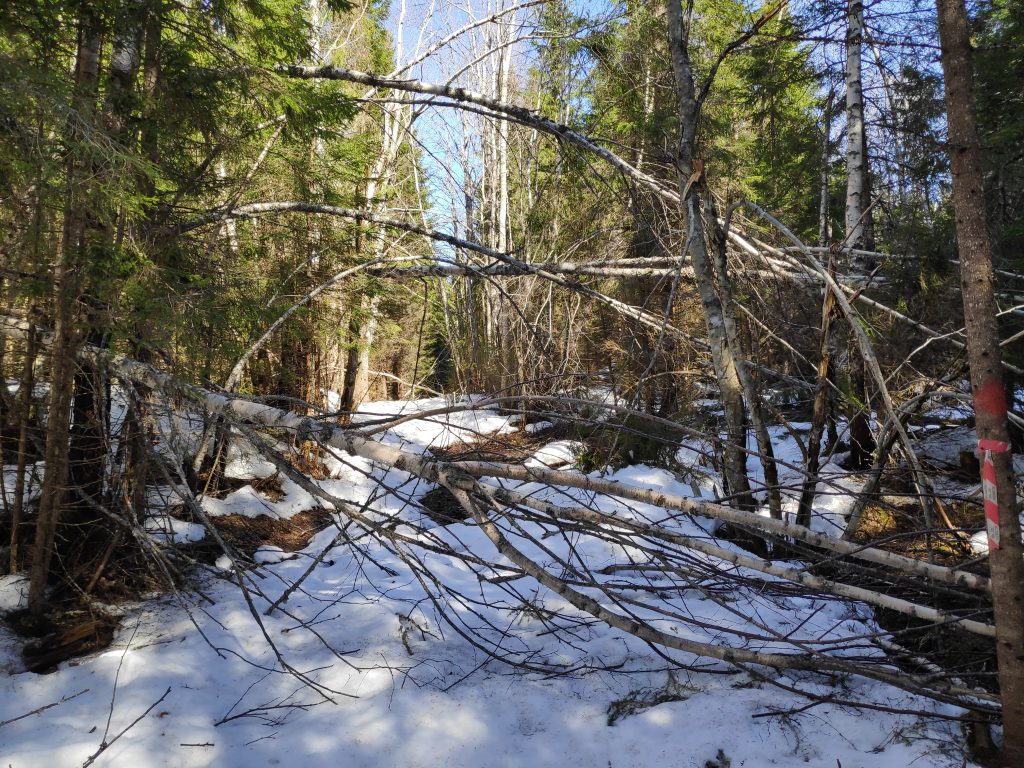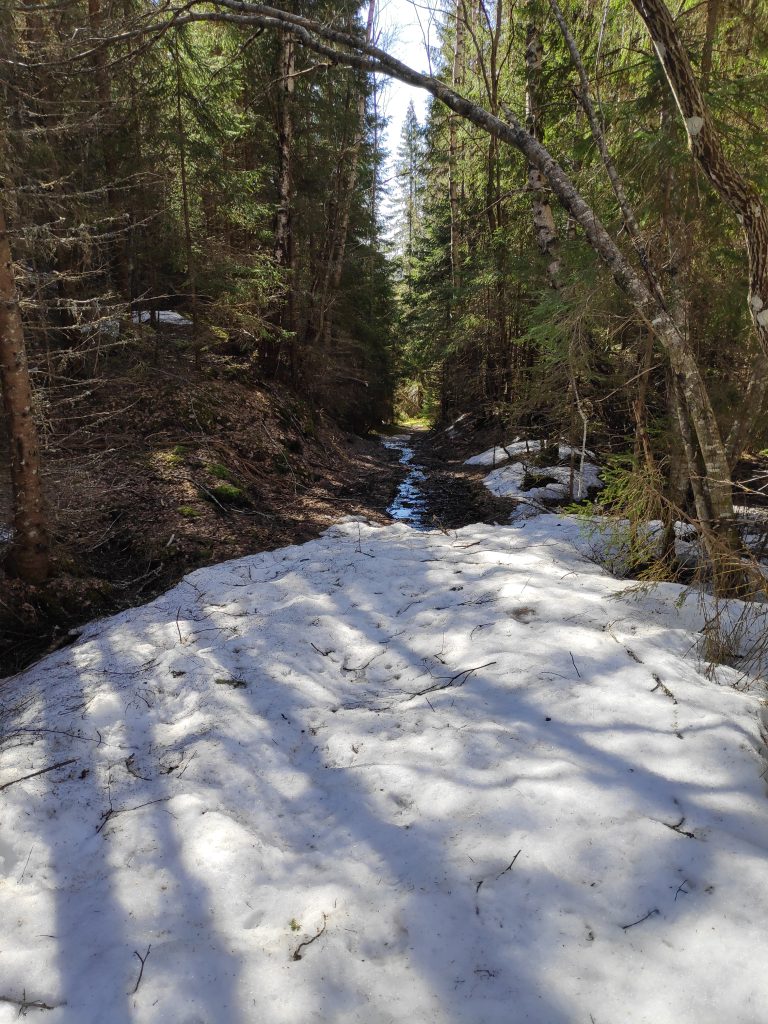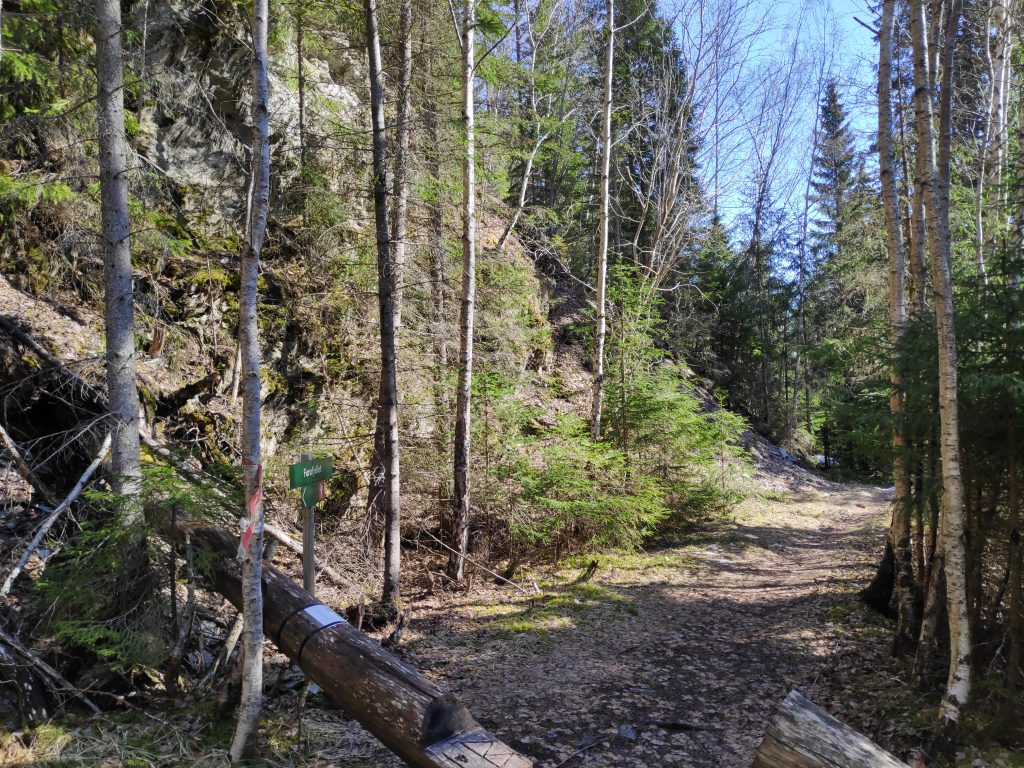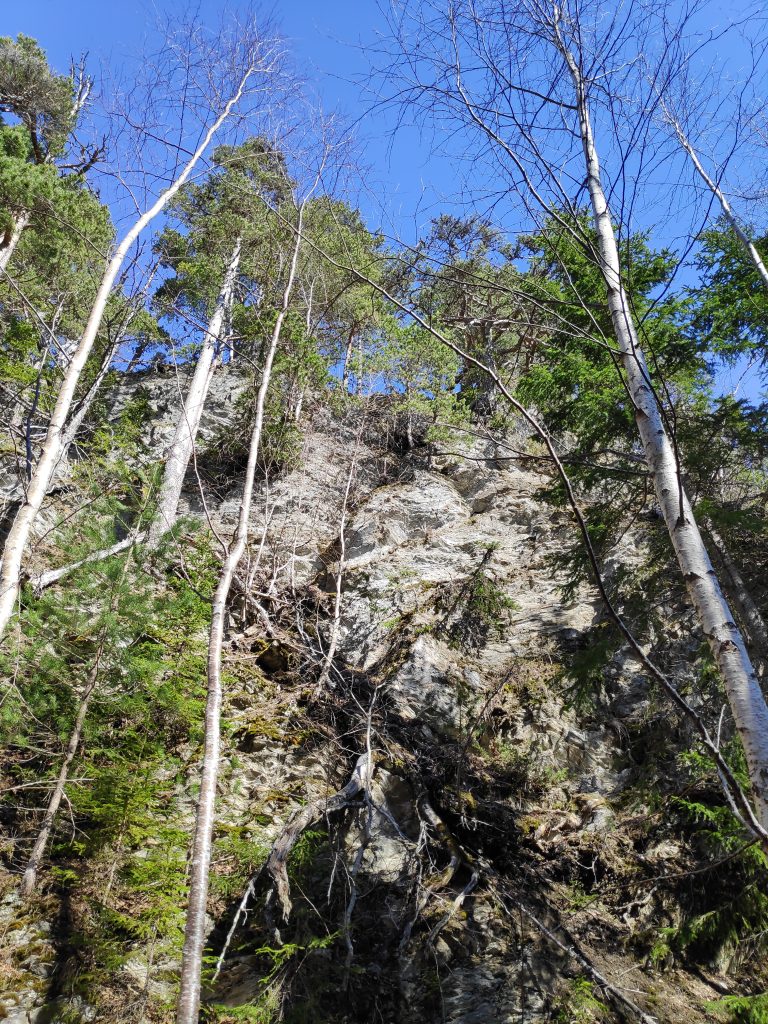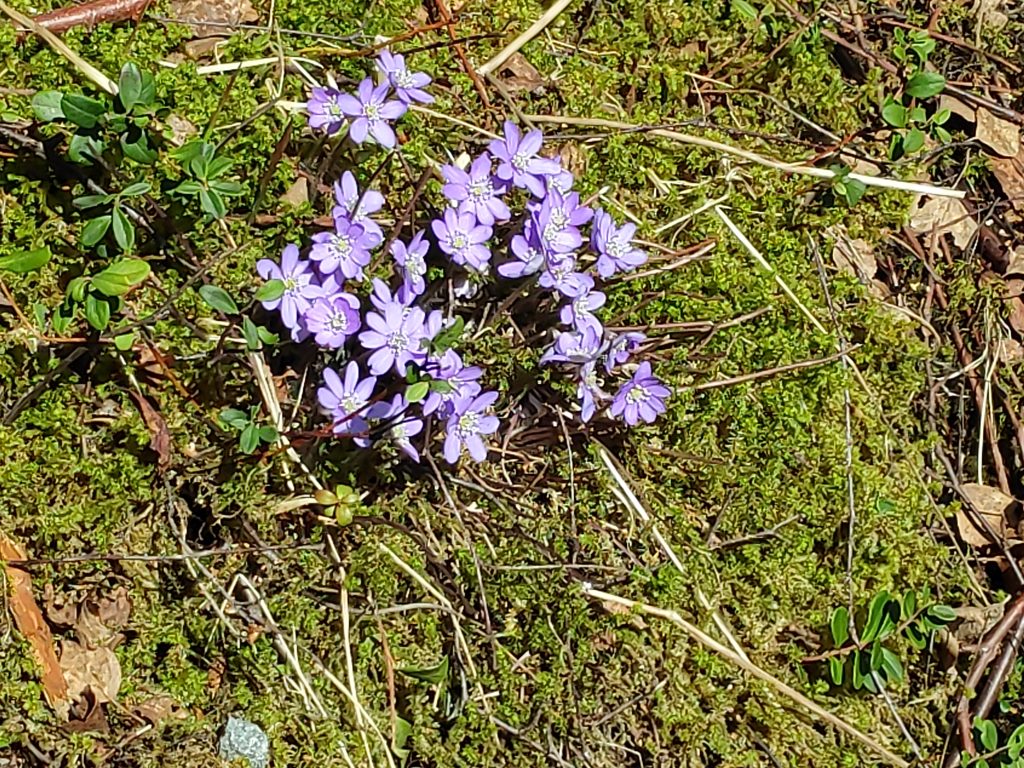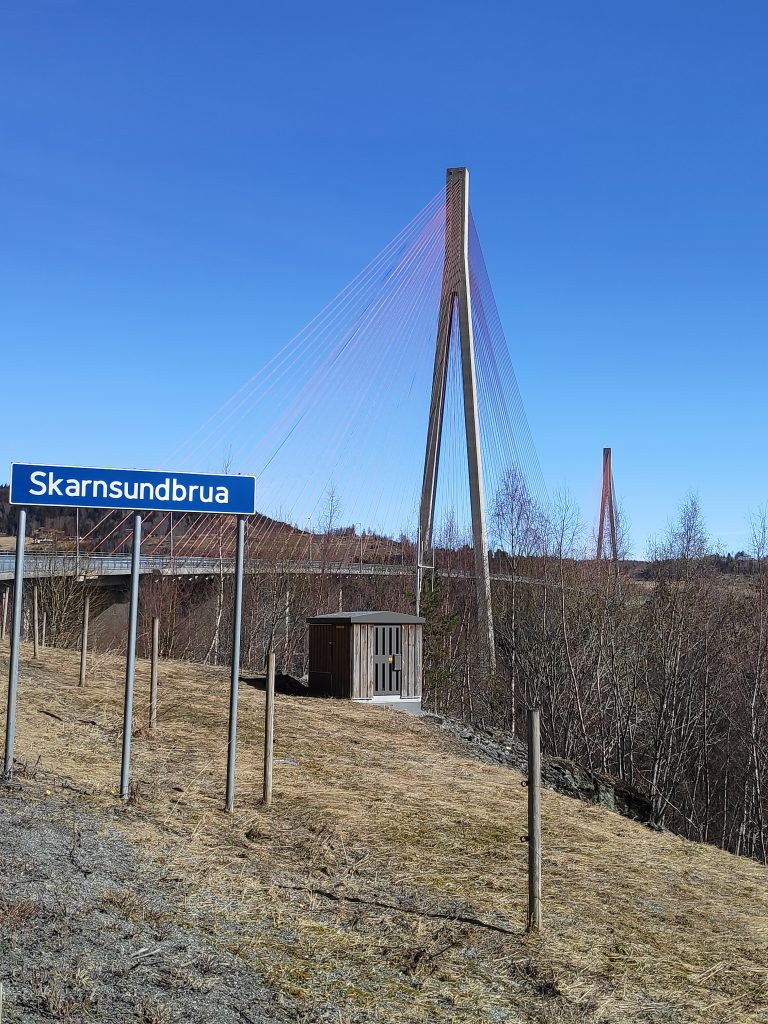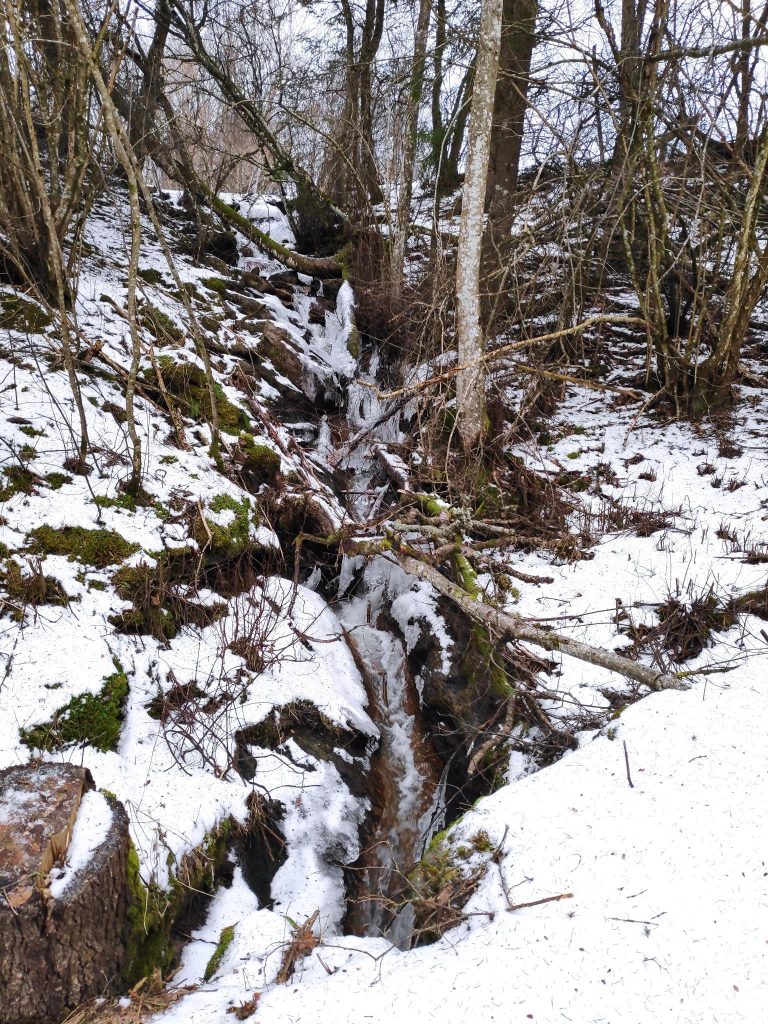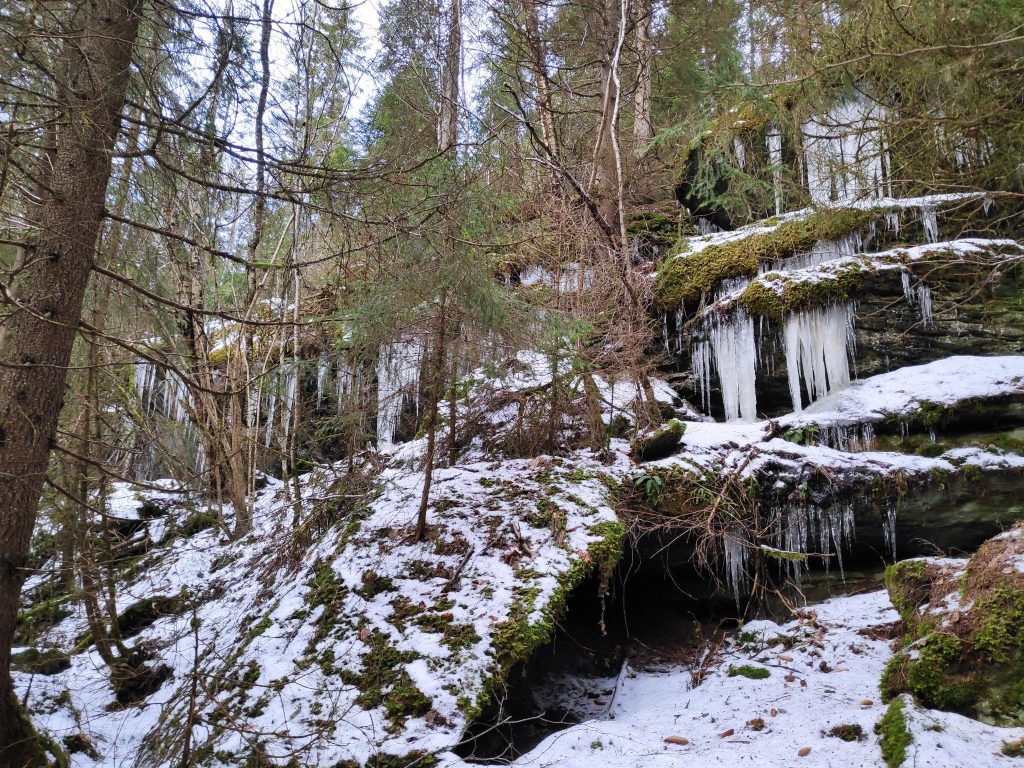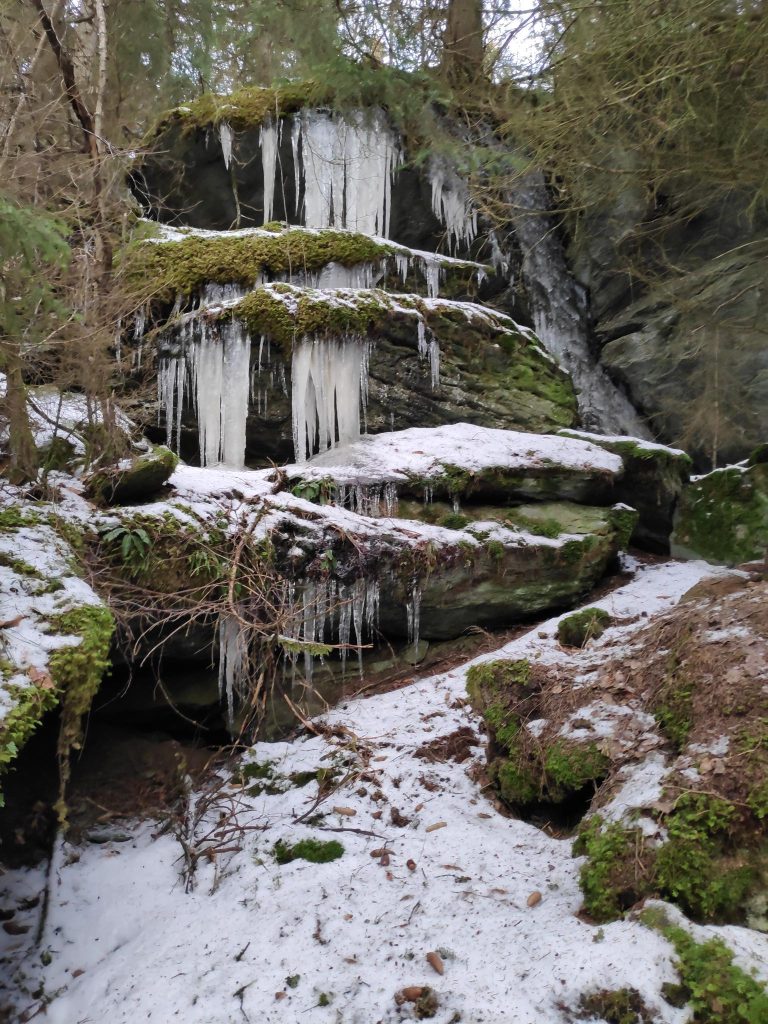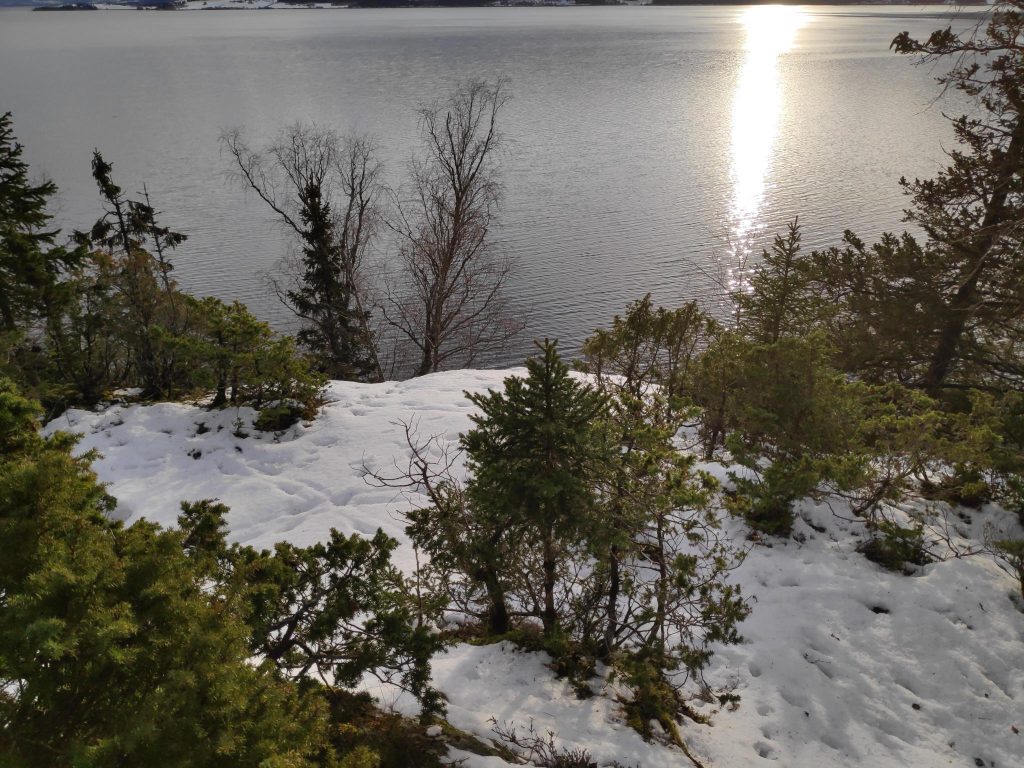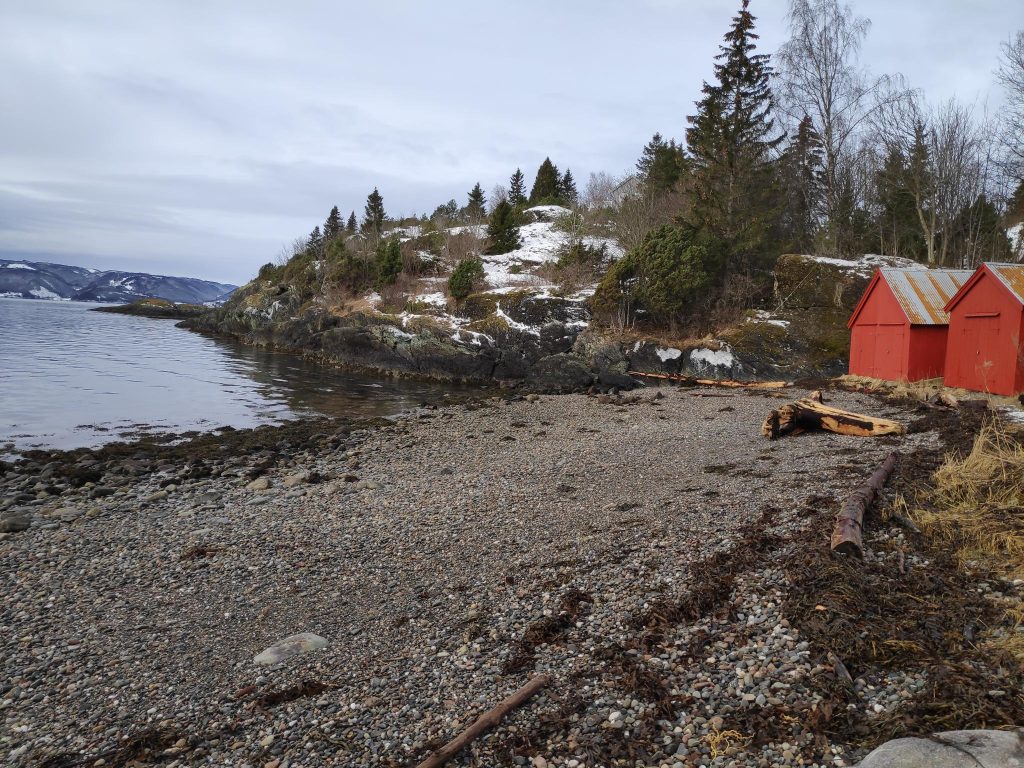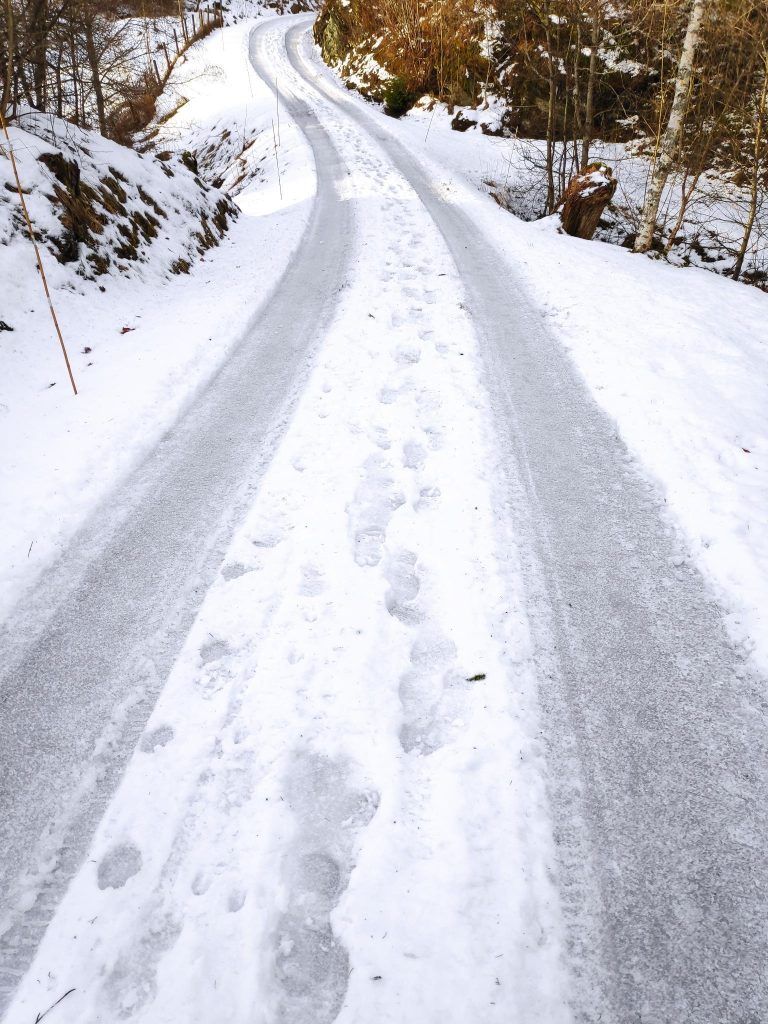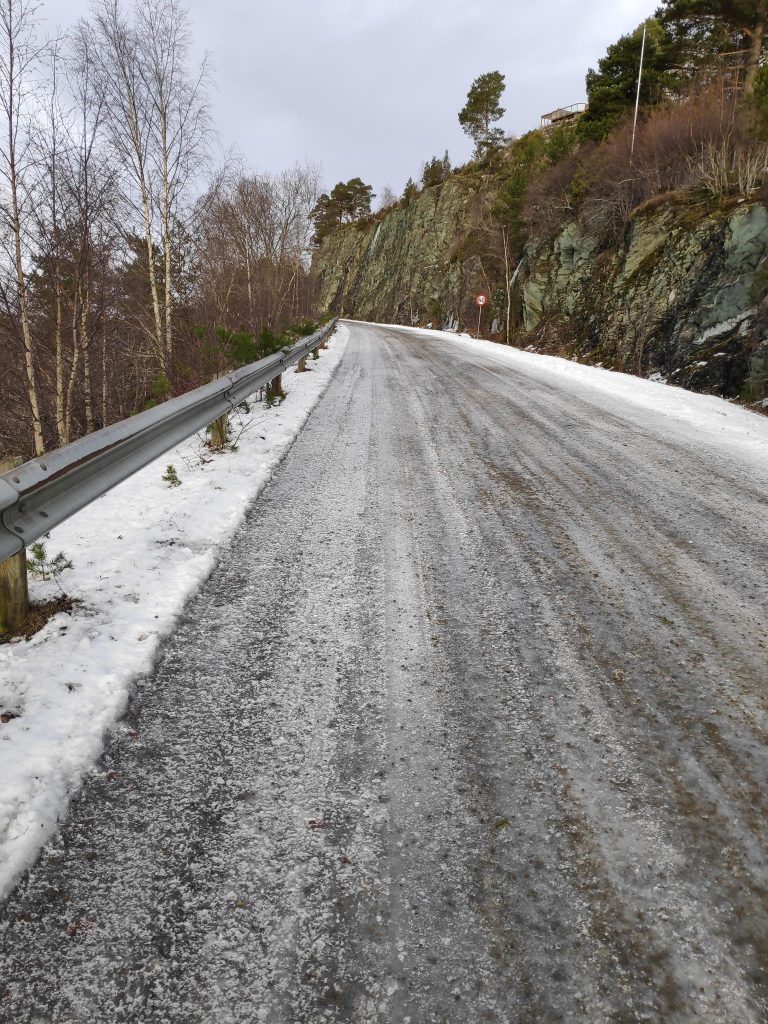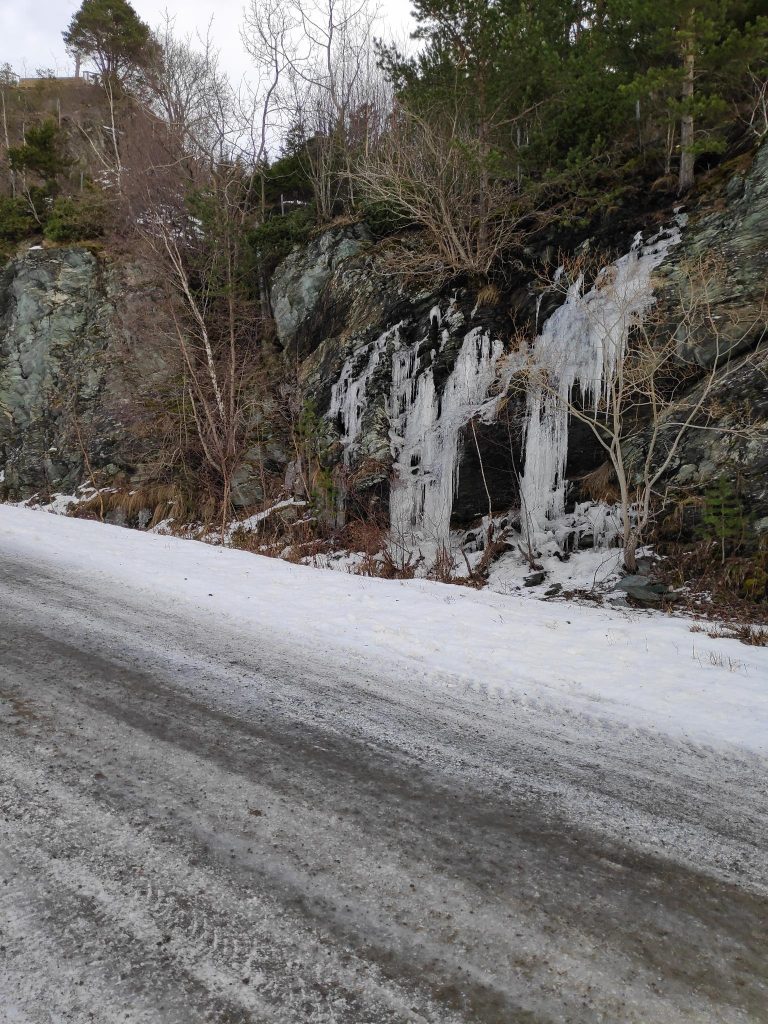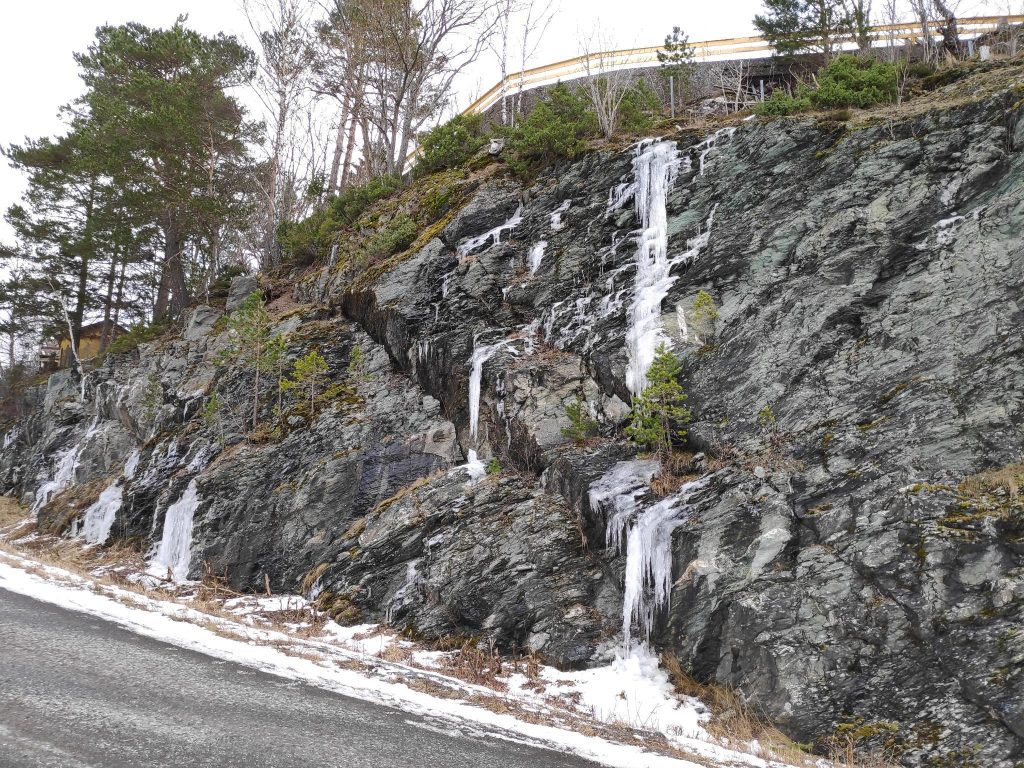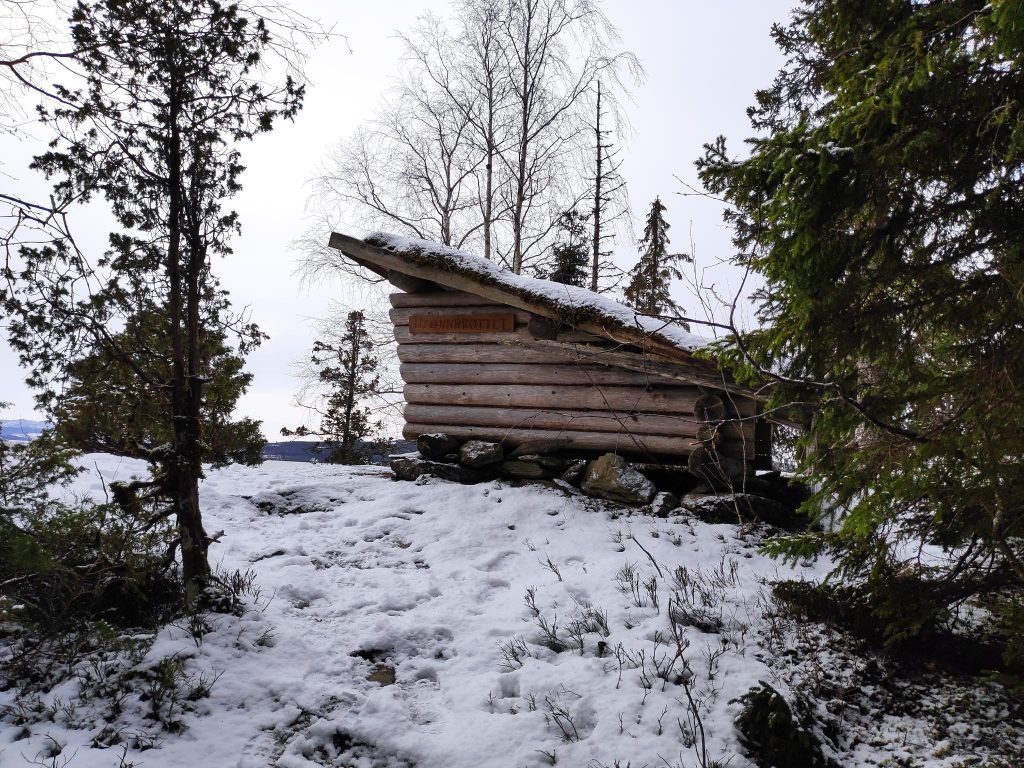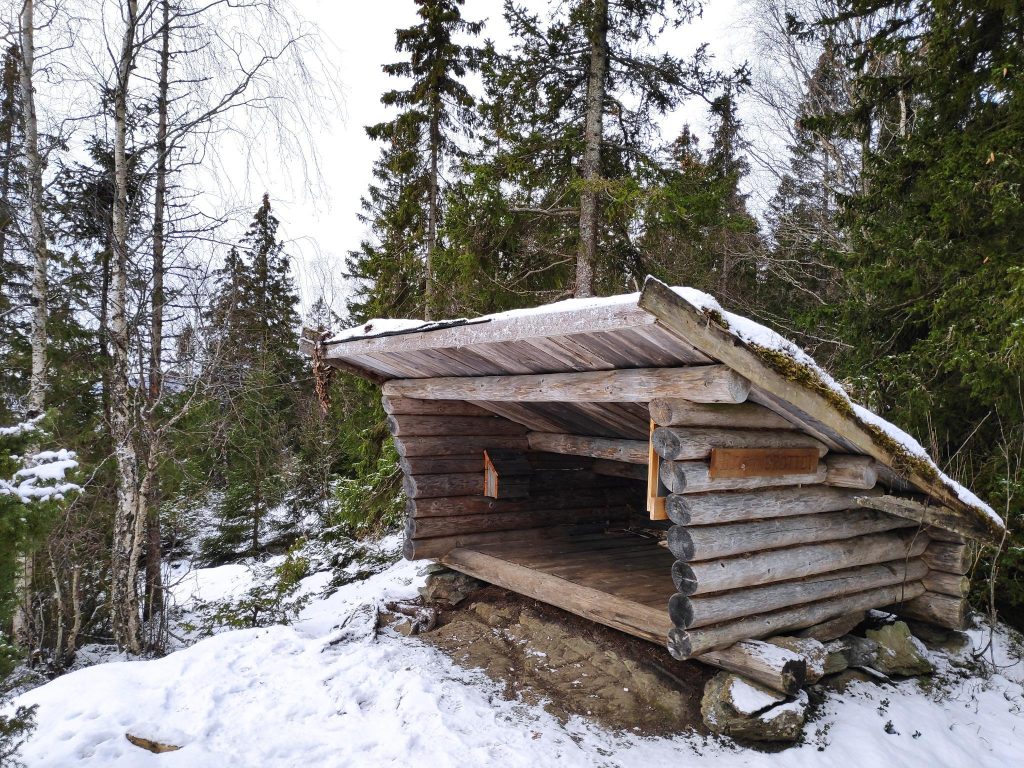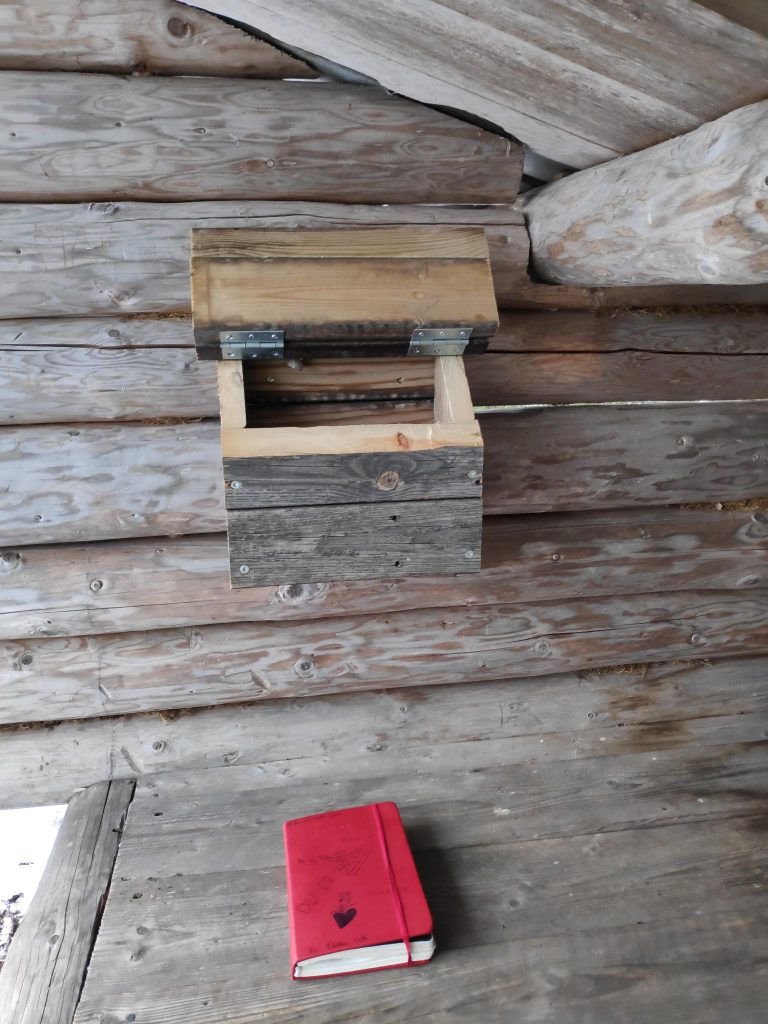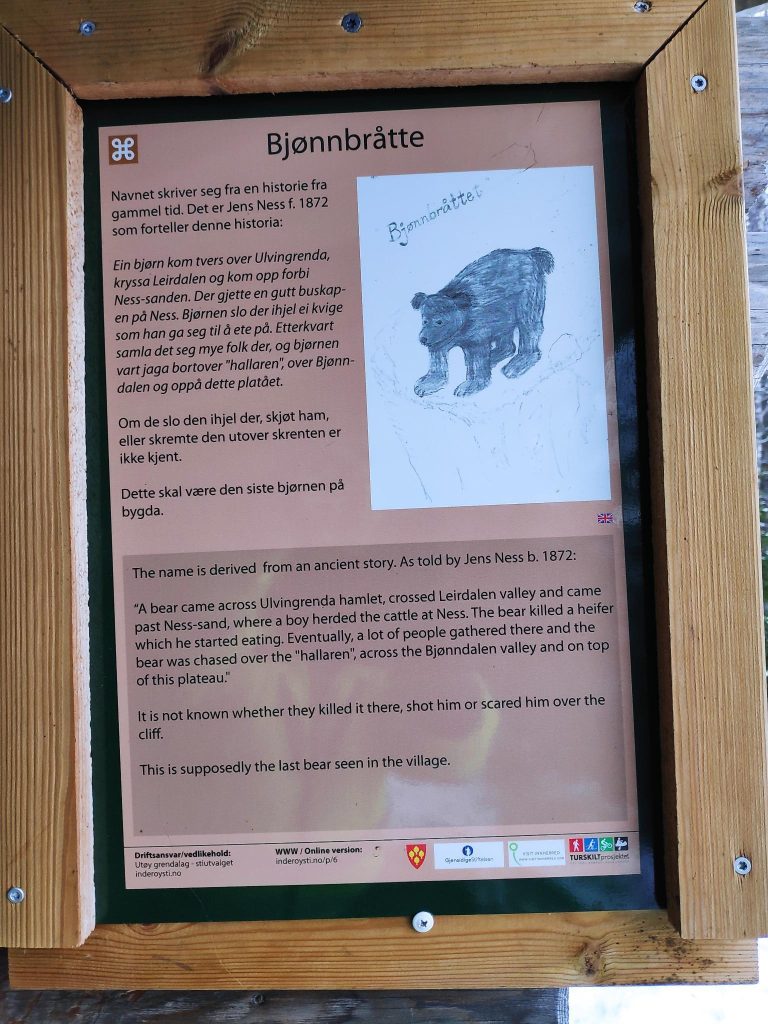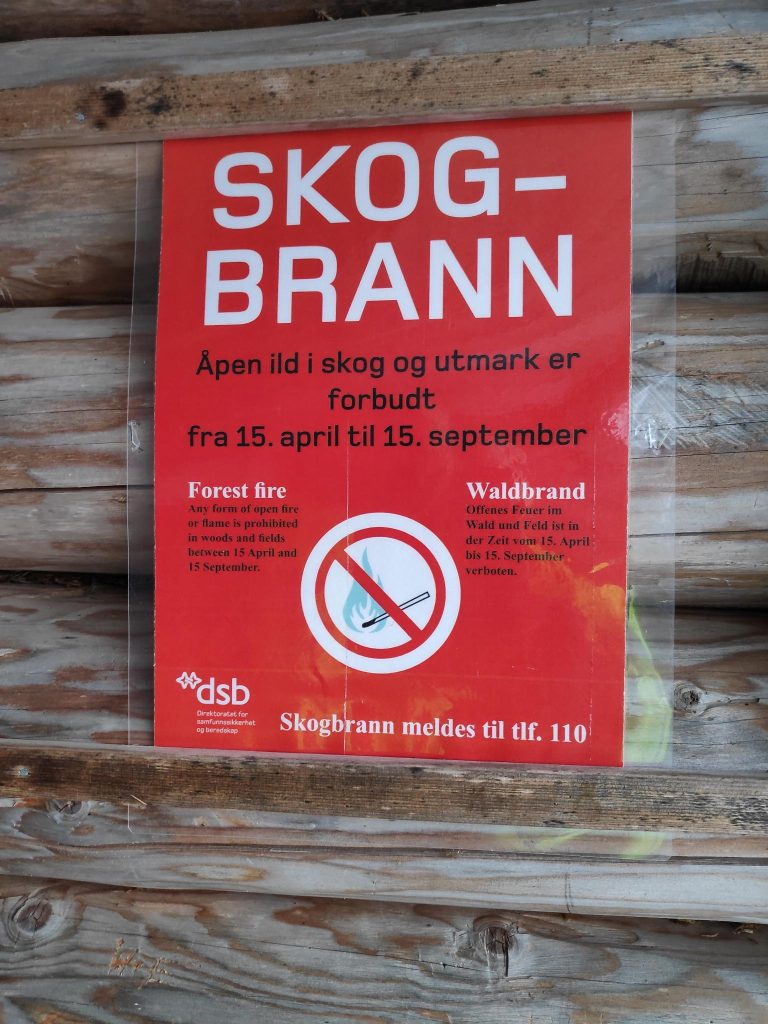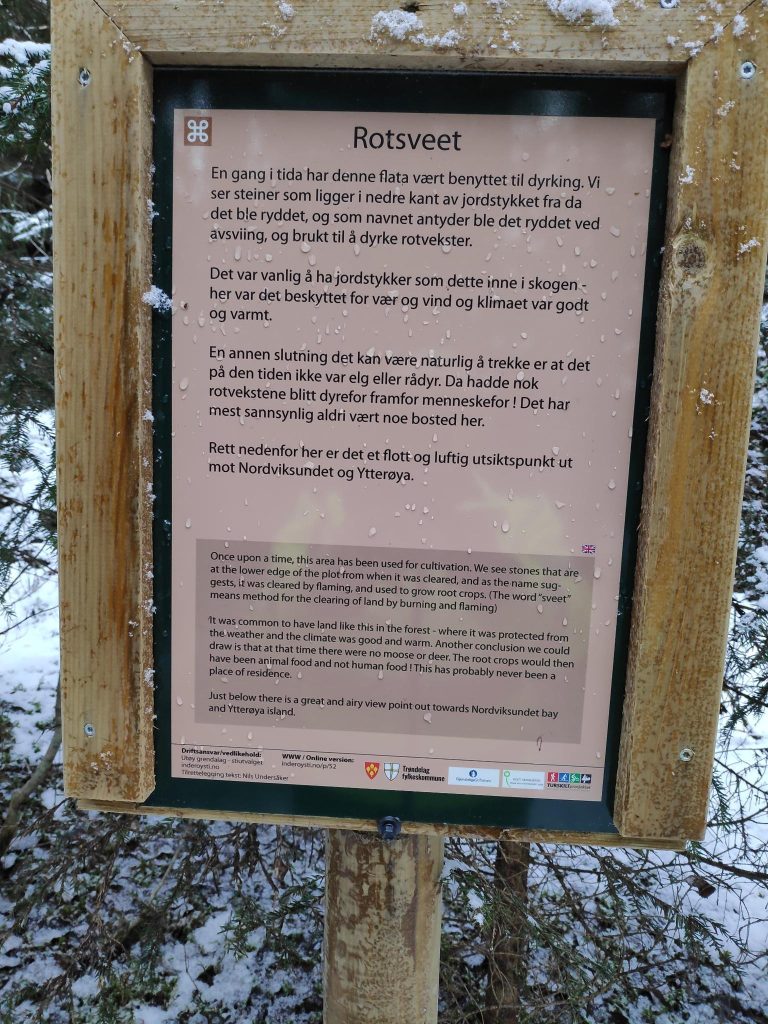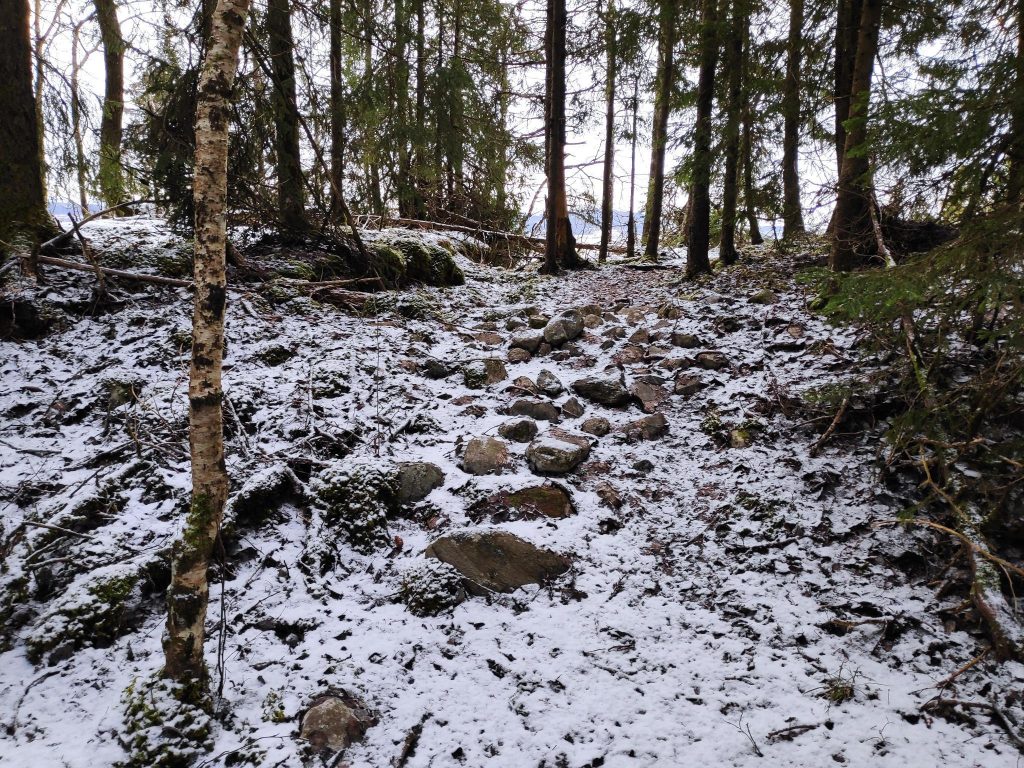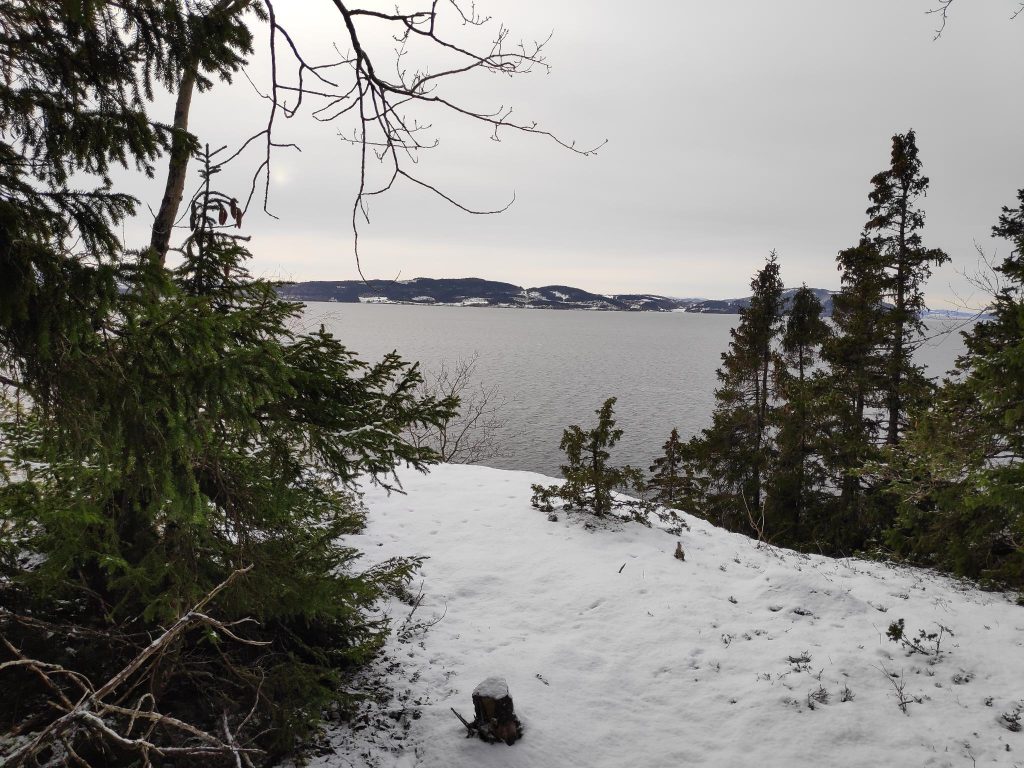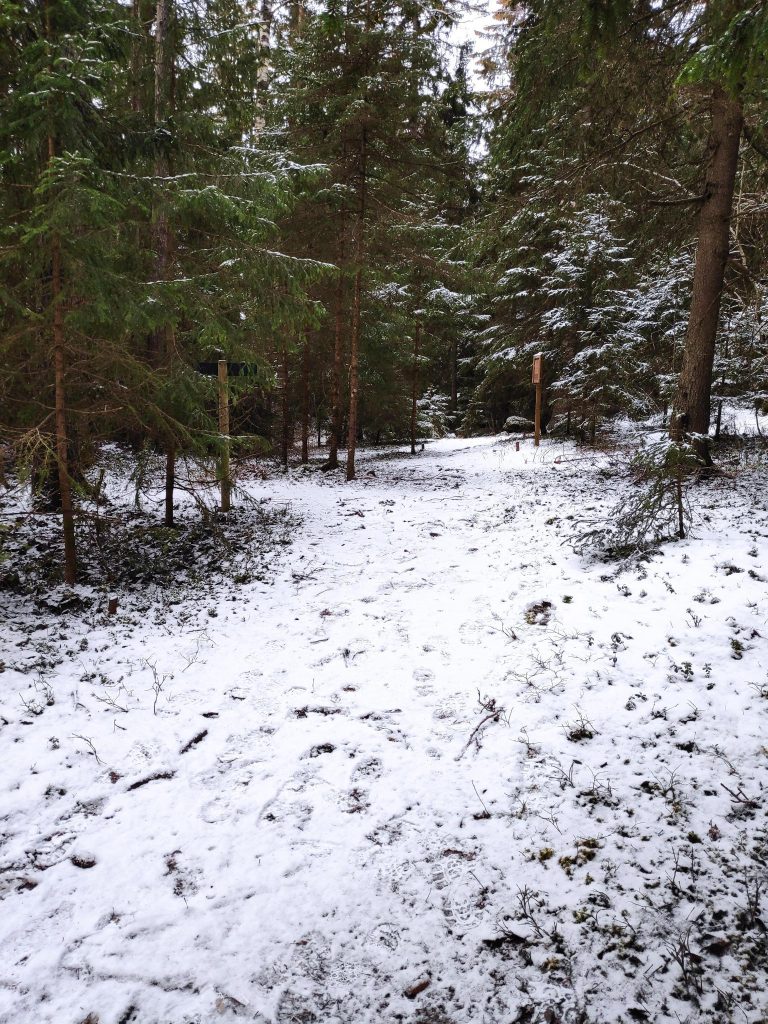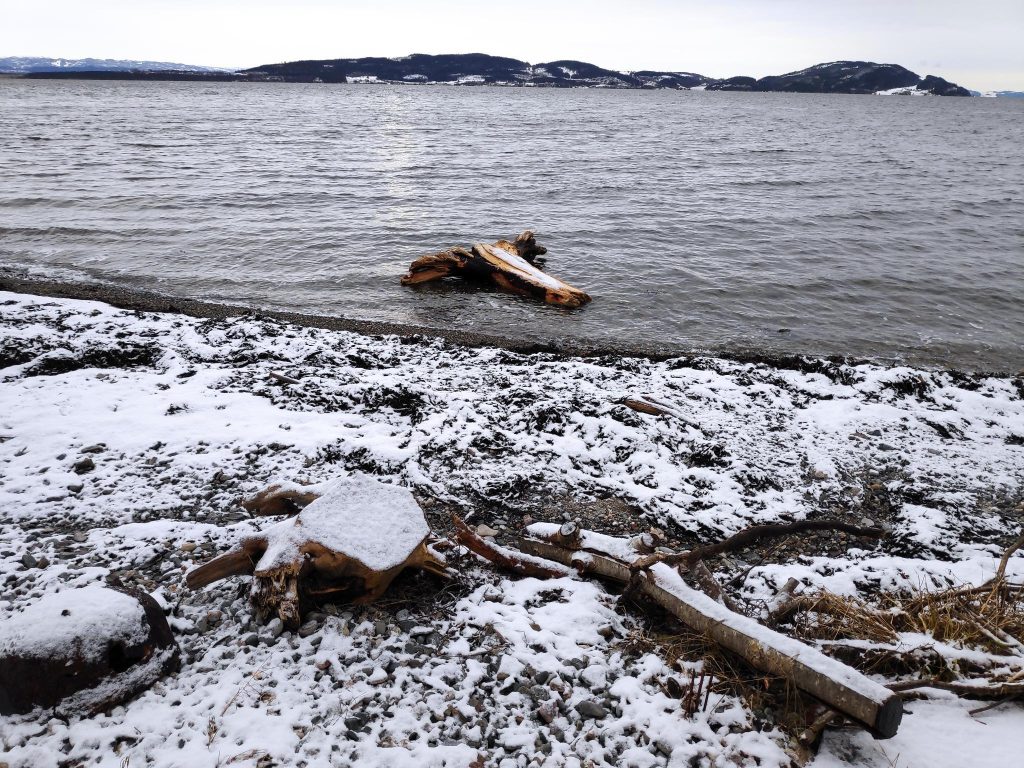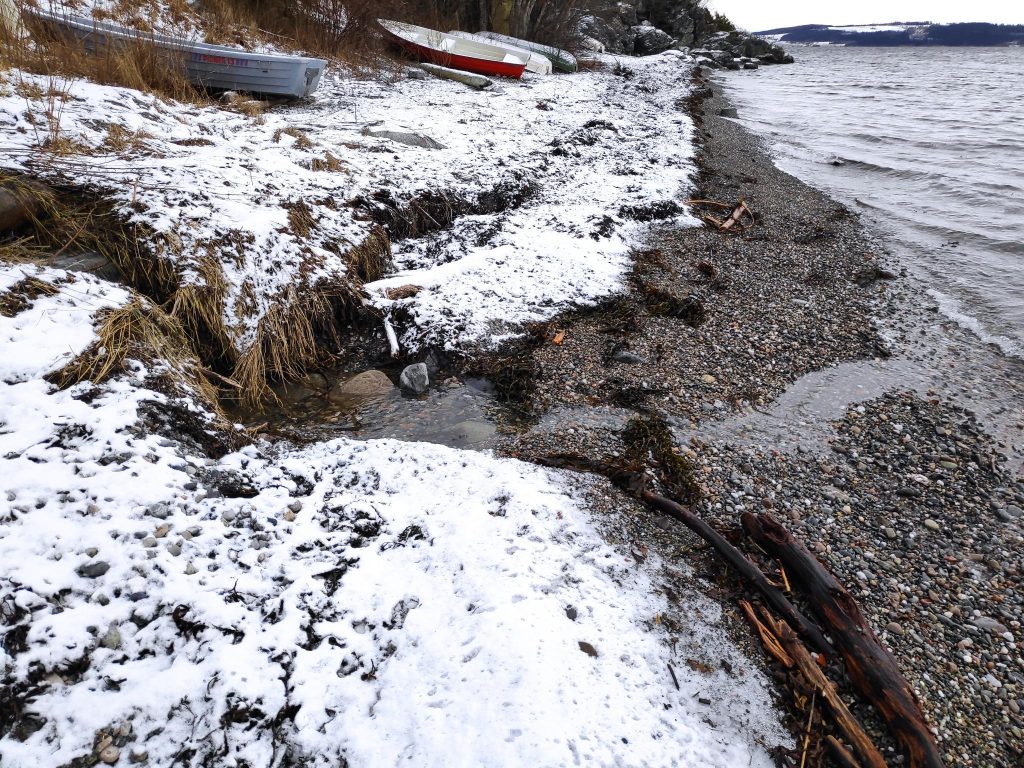One of the nice things about April is the light evenings which allow me to get out for a walk. This week I met a girl friend at about 6 pm and we took a 50 minute walk that we have done many times before, but this was the first time in 2024.
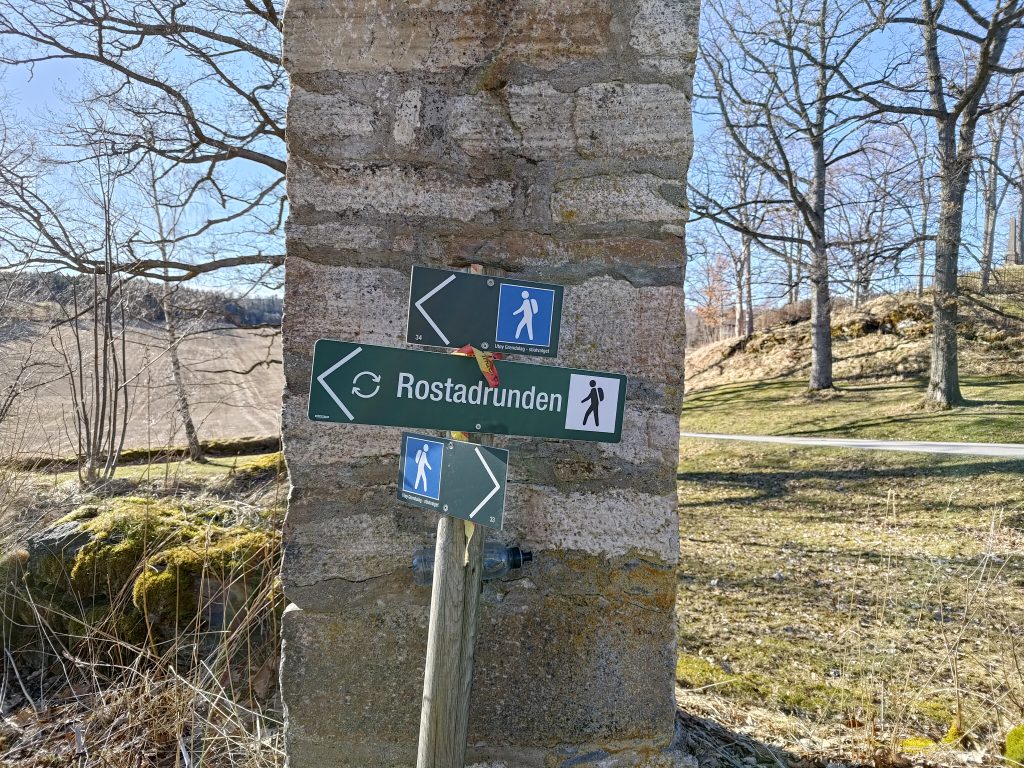
During the summer months, we can often get points for going to certain parts of this trail, but it is too early in the season yet for that. But it was a nice sunny evening, though there was a very cold wind blowing. The temperature was about +5 degrees centigrade, but there was a big difference between being in the sun or being in the shade. There is public parking near these signs, which holds five or six cars. We each drove a car as this location is halfway between where we live and we come from opposite directions.
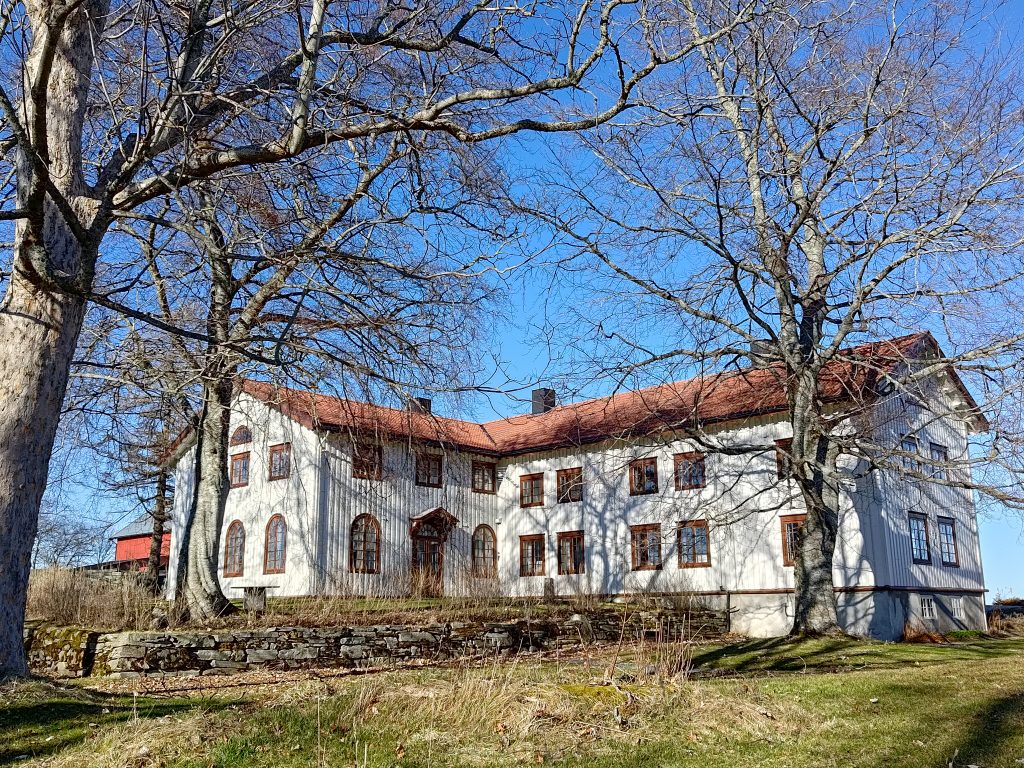
The property at Rostad was originally a wealthy family’s farm. The house has been well-preserved and is often used for meetings. The farm continues to be used as a farm. However, for about the last one hundred years, a residential school has existed on the property. Over the decades the type of school has changed and who has run the school has changed. The first school was an orphanage which started in 1902. The property is currently run by the CRUX Foundation. CRUX Rostad is an institution for teens aged 13-19 who need a place to live when their parents are not able to function. The institution has 12 residential places. The children live in other newer buildings on the estate.
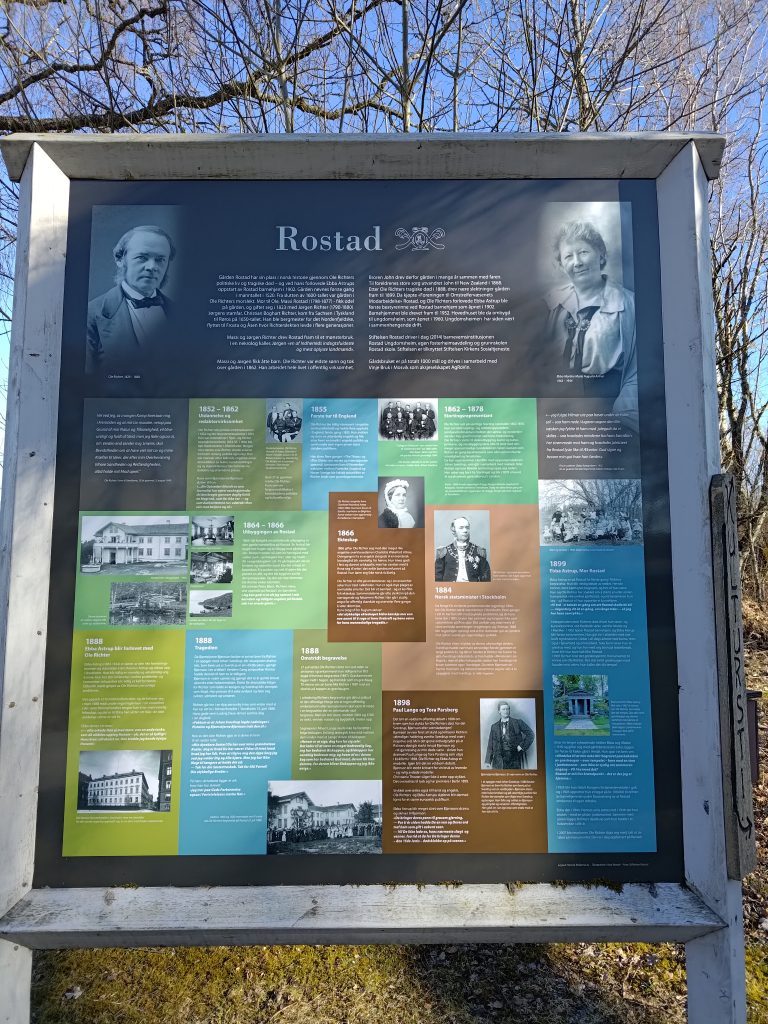
At the parking spot there is information about Rostad. A former prime minister of Norway, Ole Richter, grew up here and later represented Norway during its union time with Sweden. He inherited the farm but had no descendants so at his death the estate was sold. Ebba Astrup became the first director of the orphanage that opened in 1902 and she worked there until 1918. In 1927, she gave money to start the Rostad Foundation. It is still run by a foundation.
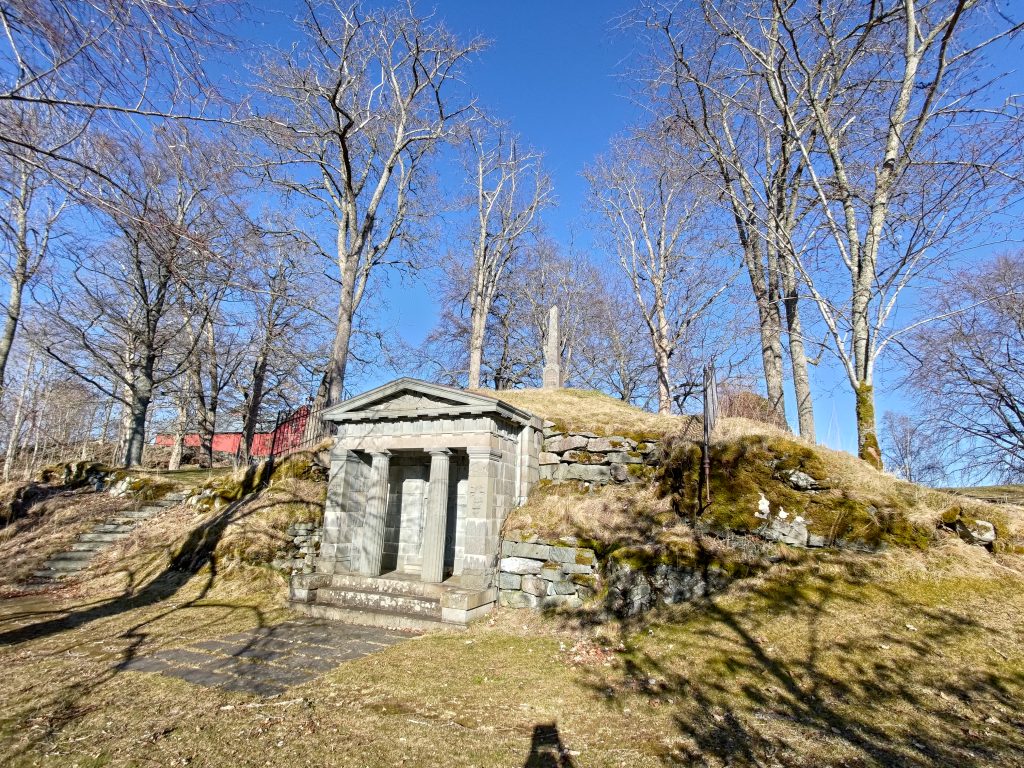
There are not many mausoleums in Norway, but on this property there is one. Ole Richter was buried here after his death in 1888, along with his wife who had died a few years before.

Though today this estate is easily reached by paved road, in the 19th century, access to the estate would have been from the fjord. There is a gravel, tractor road that we followed down the hill. The gate posts in the picture would have been the formal entrance to the main building. We decided to take the walk in the counter-clockwise direction, so we started by going downhill, about 500 meters towards the fjord. It was very windy on the water, so we avoided going right down to the fjord.
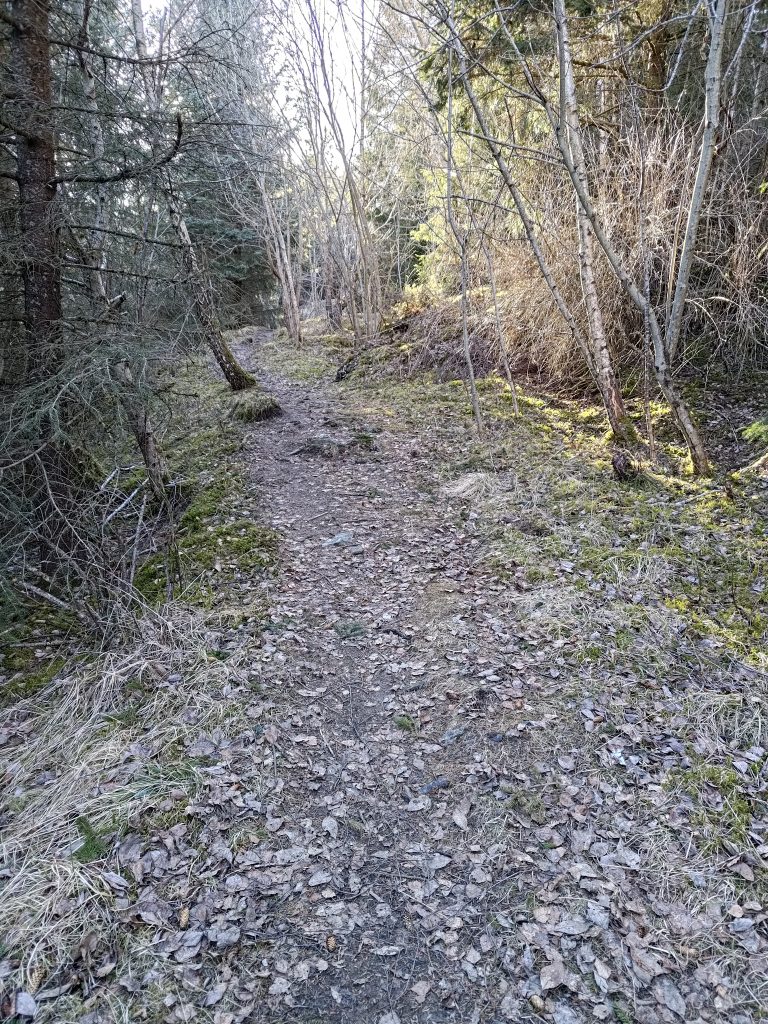
A lot of the walk goes through the woods. It goes up and down quite a bit, but there are no very steep sections. Most of it was quite dry, though the streams had plenty of water in them. The trees are quite bare still and the ground is covered with the leaves that came down in the fall. It is evening, so there are small patches of sunshine, but at times the woods are quite dark. It stays light until about 9 pm now.
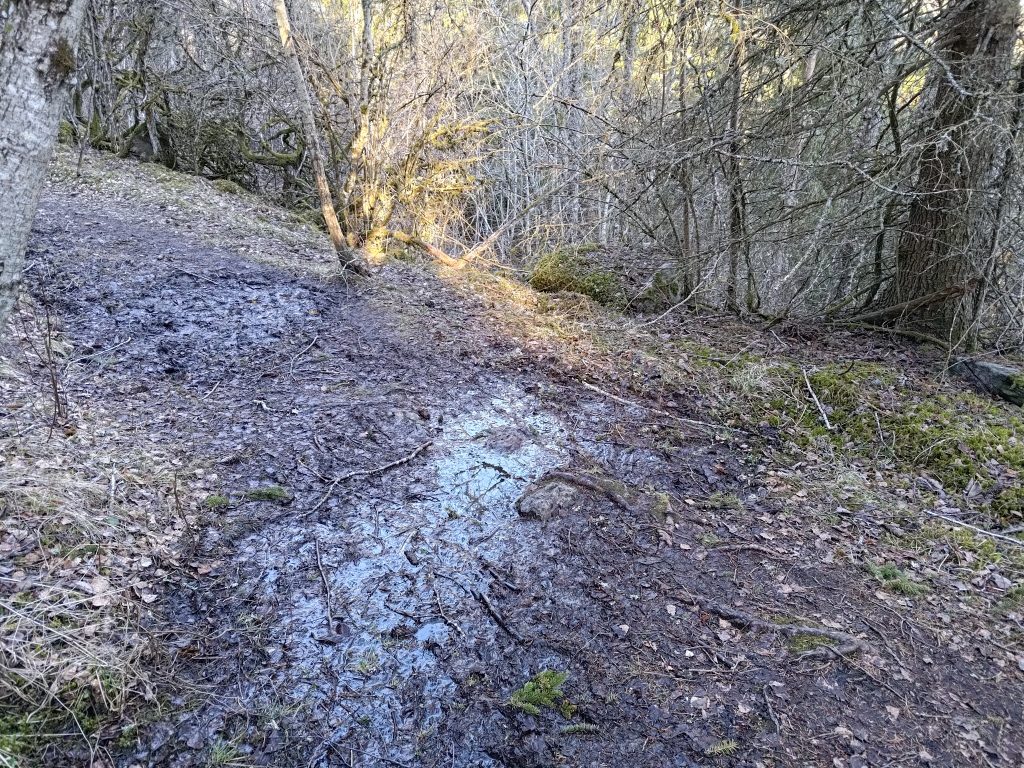
There was only one section that was muddy, so here there is obviously water that drains off the hillside that is not put through a pipe. It was a very short section and very easy to get around.
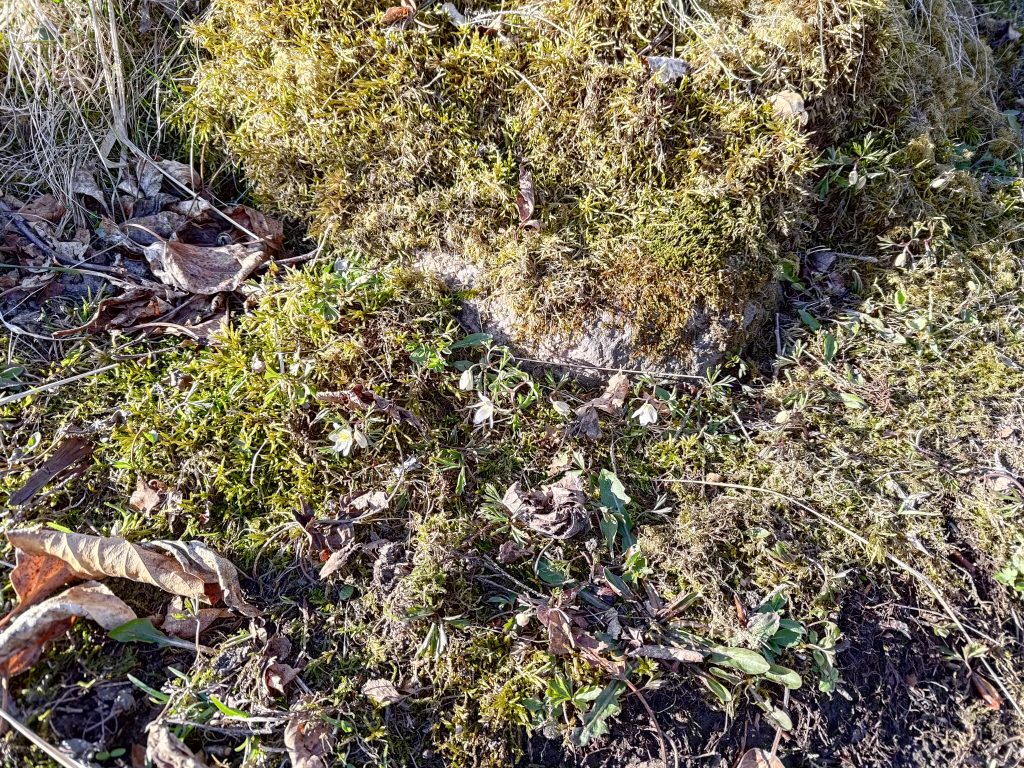
The white anemone is an early flower that comes out on the forest floor before the leaves come out on the deciduous trees and take away the sunshine. These were the first ones that I had seen this year, so it must be a spot that is both sheltered and sunny. Note that the moss seems to be growing quite well here as well.
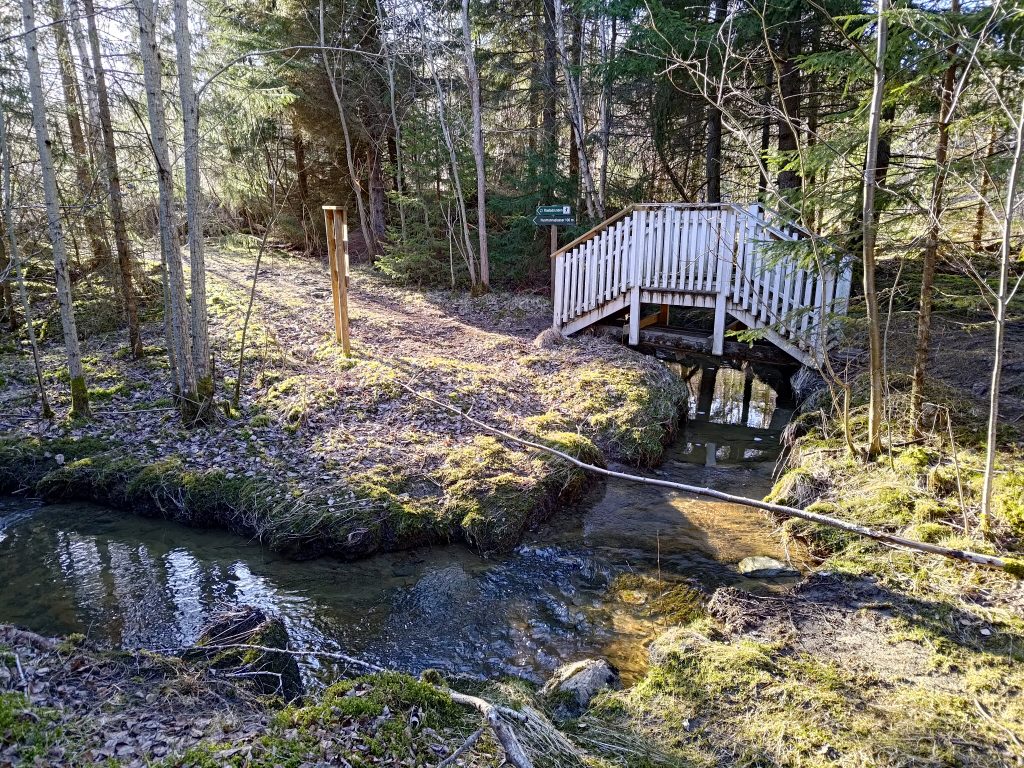
There is a stream that runs through the property. Where it comes out at the fjord, there is quite a drop and it has been used to power a grain mill in the past. It doesn’t look like a very large stream here, but it is nice to have a bridge to cross it. At this point the trail divides and if one wanted to walk to Undersåker (approximately 2 km to the east by the trail), one could take off on a trail that goes off to the right from here. We are coming from the foreground, will cross the bridge and head off to the left. You can see directional signs, but there are also a lot of information signs on this part of the trail, primarily about dwellings in the past.
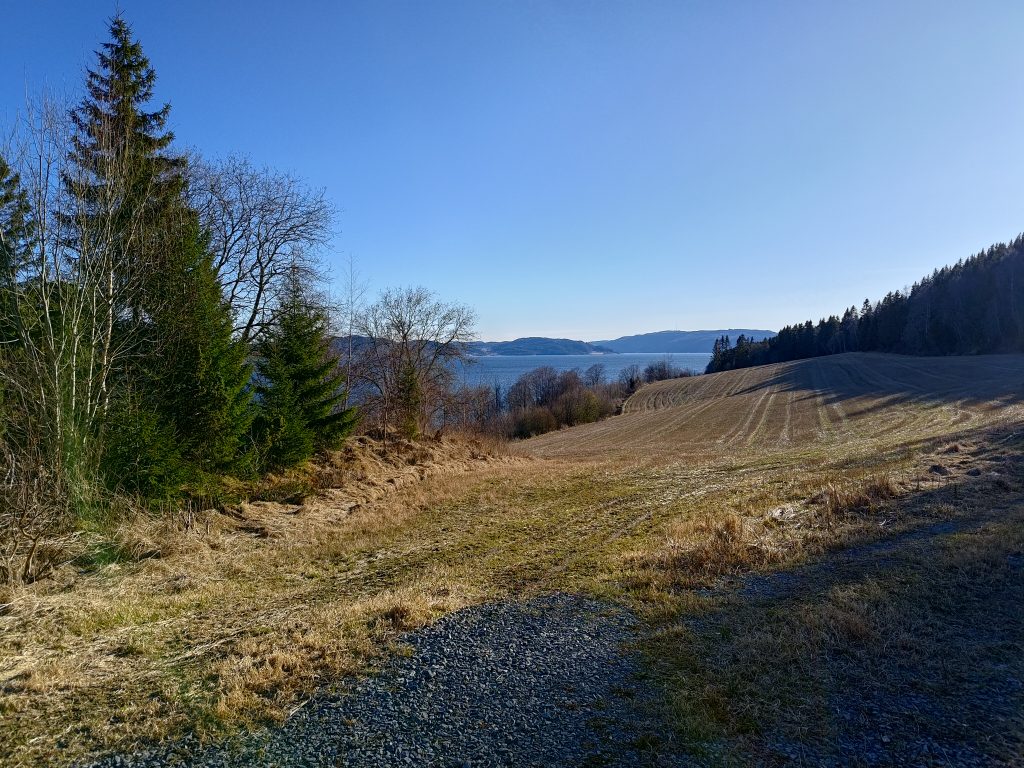
As we came out of the woods, we looked across a farm field to see the fjord in the distance. This is a working farm with grains and grasses being grown.
It didn’t take us long from here to get back to our cars. It was lovely to get out. For me it is also a social time with a girl friend. I enjoy springtime, with sunny days and nature just starting to turn green again. The air can be cold still, but with no leaves on the deciduous trees, one can see more in the distance. I hope you can enjoy a walk today too.

